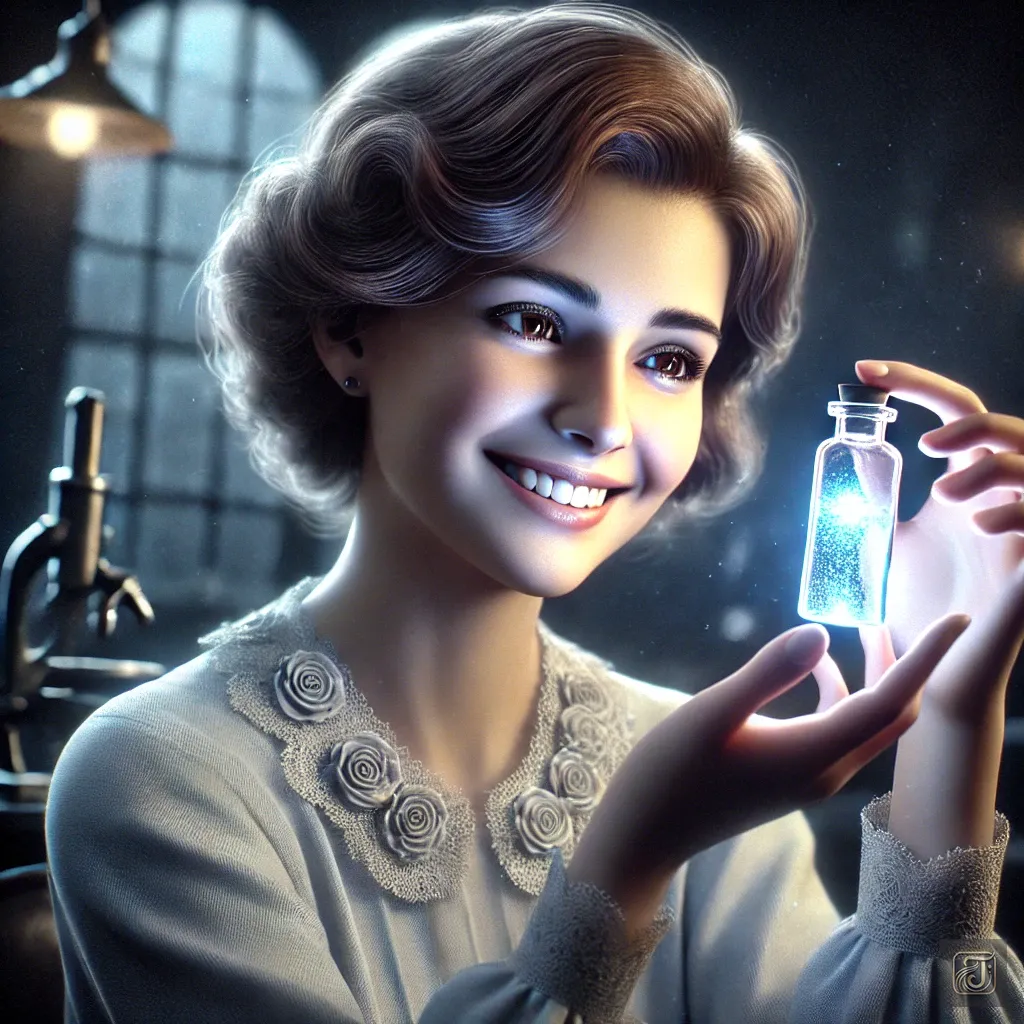
Prologue
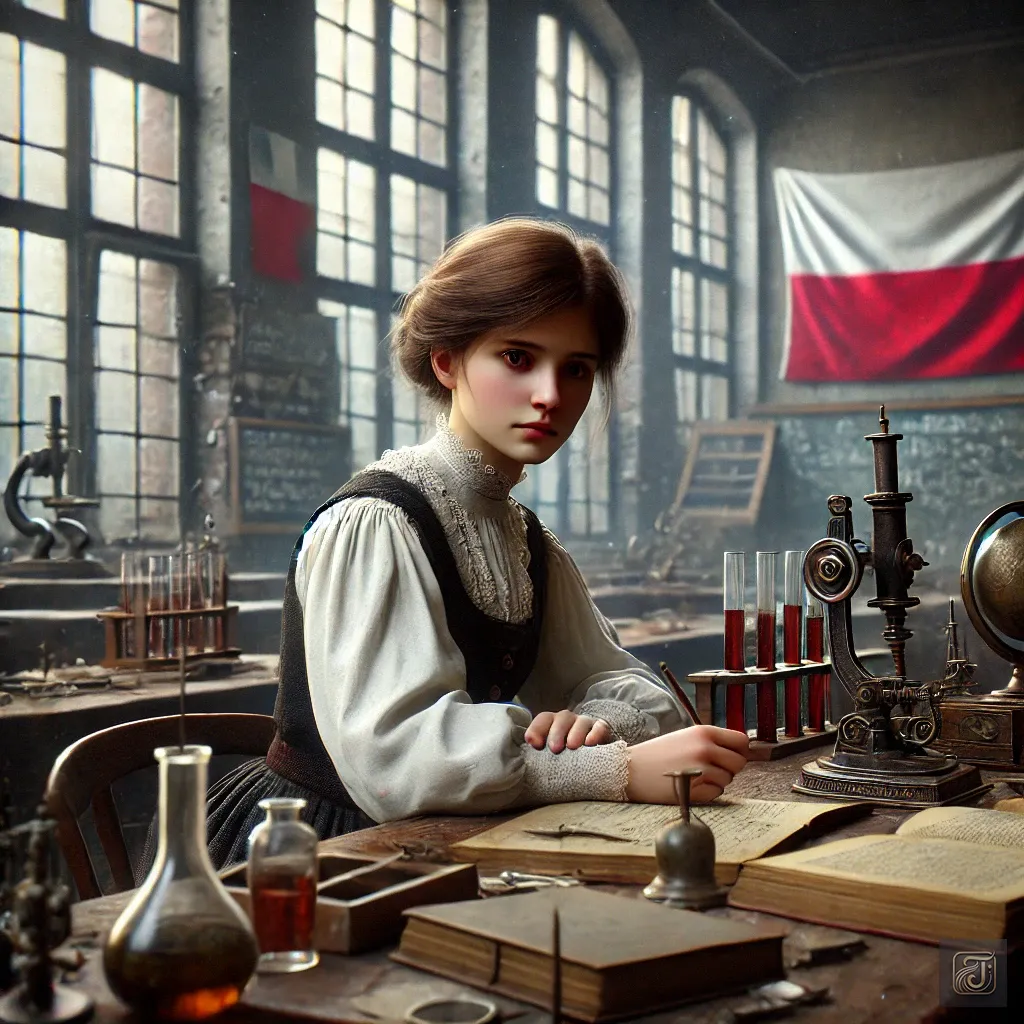
It was a time when Poland was under the rule of the Russian Empire.
Amidst the suppression of Polish culture and education by the Russian Empire and the battle against gender discrimination in the scientific community, there was one female scientist.
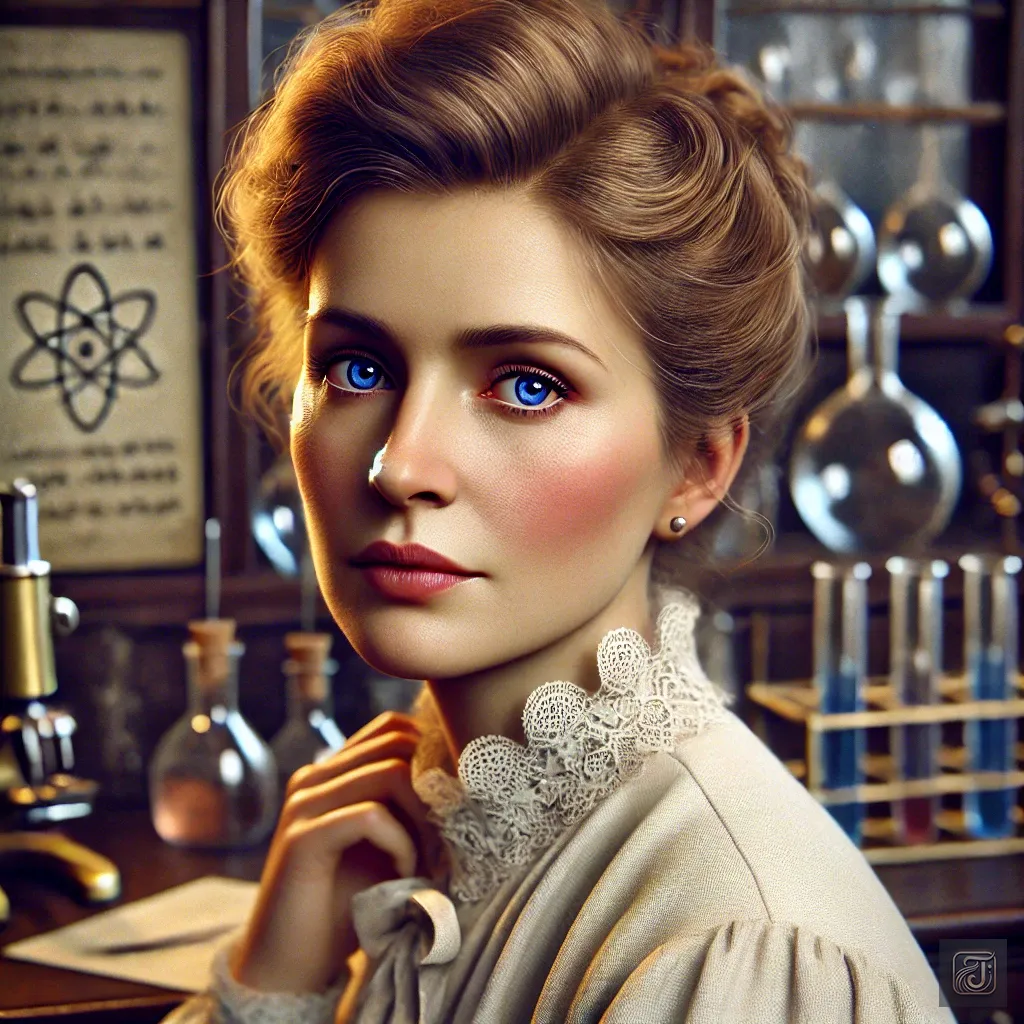
Marie Curie.
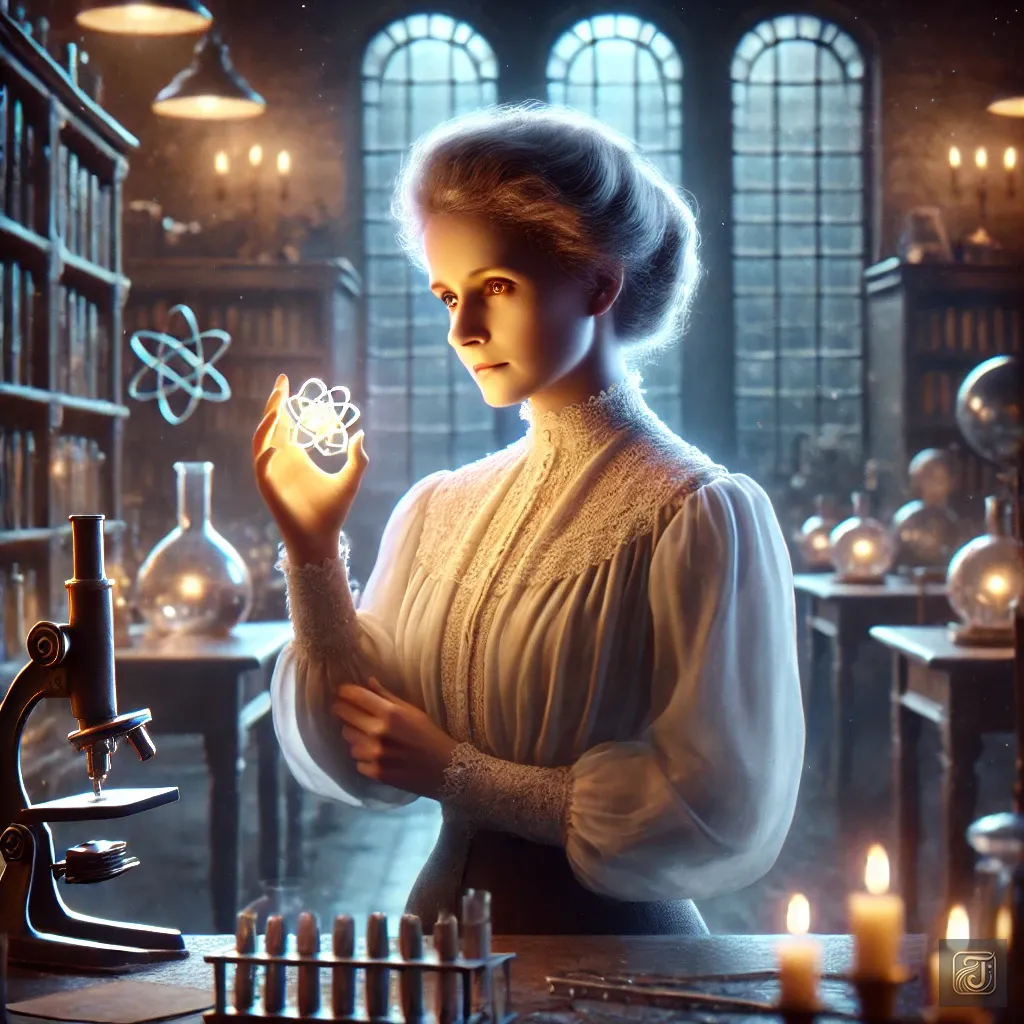
She was honored for her discovery of polonium and radium, becoming the first woman to receive the Nobel Prize and the only person to have won two Nobel Prizes in different fields.
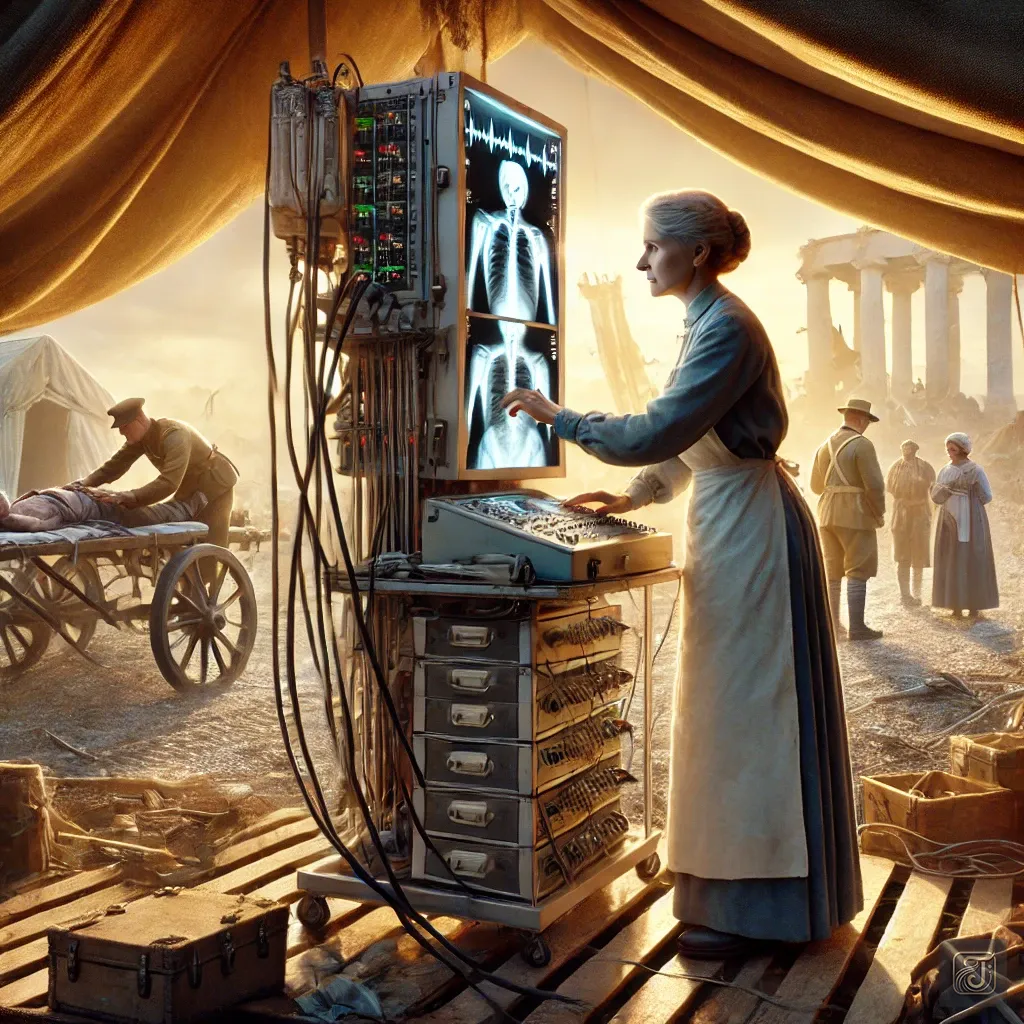
Furthermore, during World War I, her research helped diagnose wounded soldiers on the battlefield, saving many lives.
However, she herself was exposed to radiation and became a victim of it.
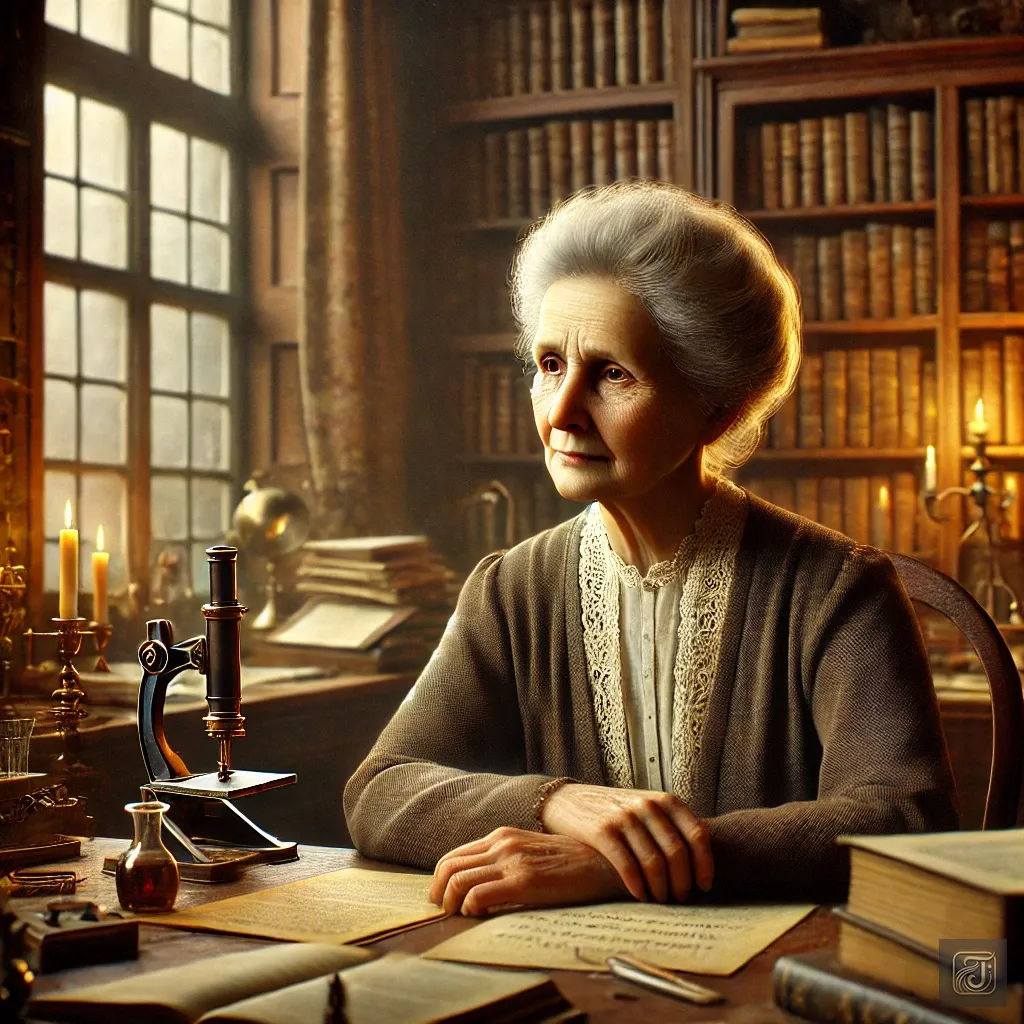
In her later years, despite grappling with the limitations of science and personal struggles, she left behind a profound message.
Marie Curie:
“Do not be afraid of difficulties.
They are opportunities for us to grow.”
This is the story of her struggles and conflicts, the life of the woman who was hailed as the “Mother of Radiation.”
Chapter 1: Born in an Era of Oppression
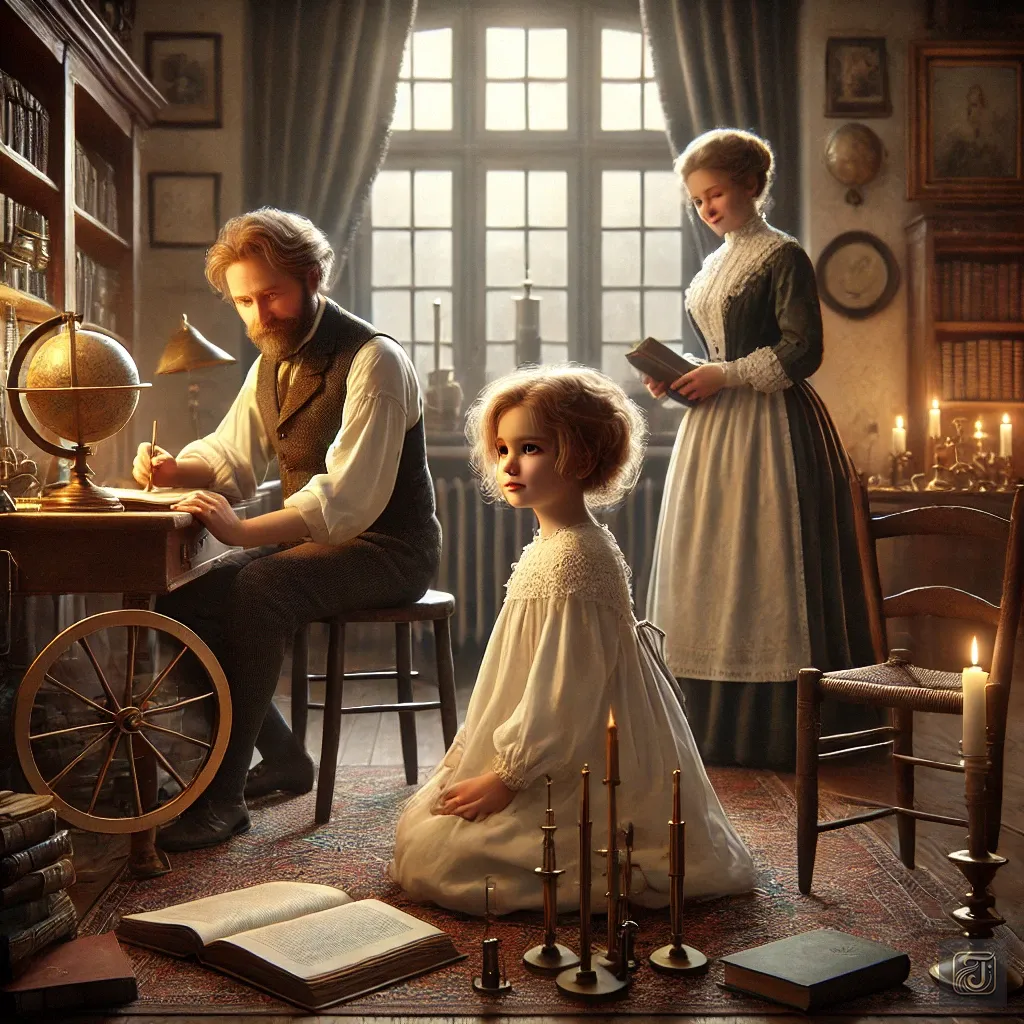
In 1867, Maria Skłodowska was born in Warsaw, Poland.
Her family valued education deeply; her father, Władysław, was a teacher of physics and mathematics, and her mother, Bronisława, was the principal of a boarding school.
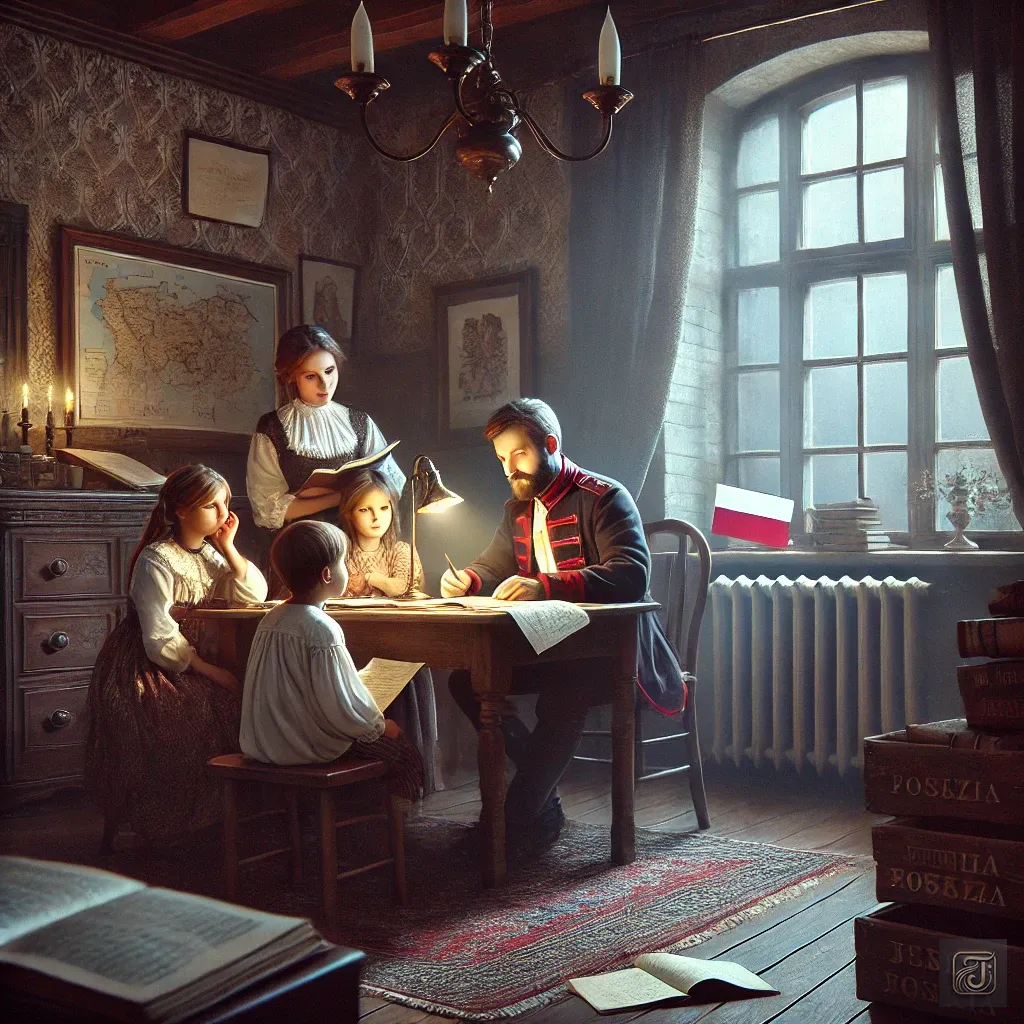
However, at the time, Poland was under the control of the Russian Empire.
Due to the Russian Empire’s suppression of Polish culture and education, teaching the Polish language and Polish history was prohibited.
School education was conducted primarily in Russian.
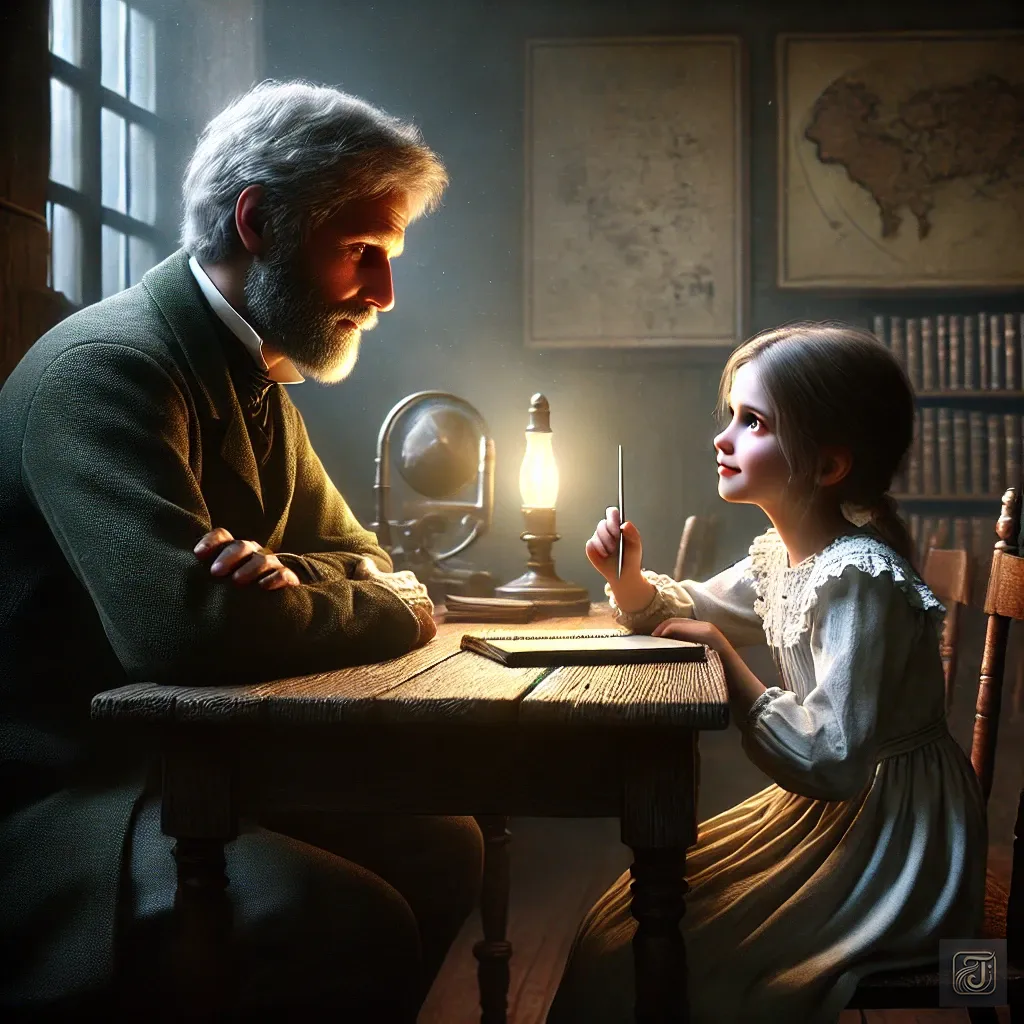
Marie Curie:
“Father, why can’t you teach Polish?”
Father:
“To protect freedom, sometimes patience is necessary.”
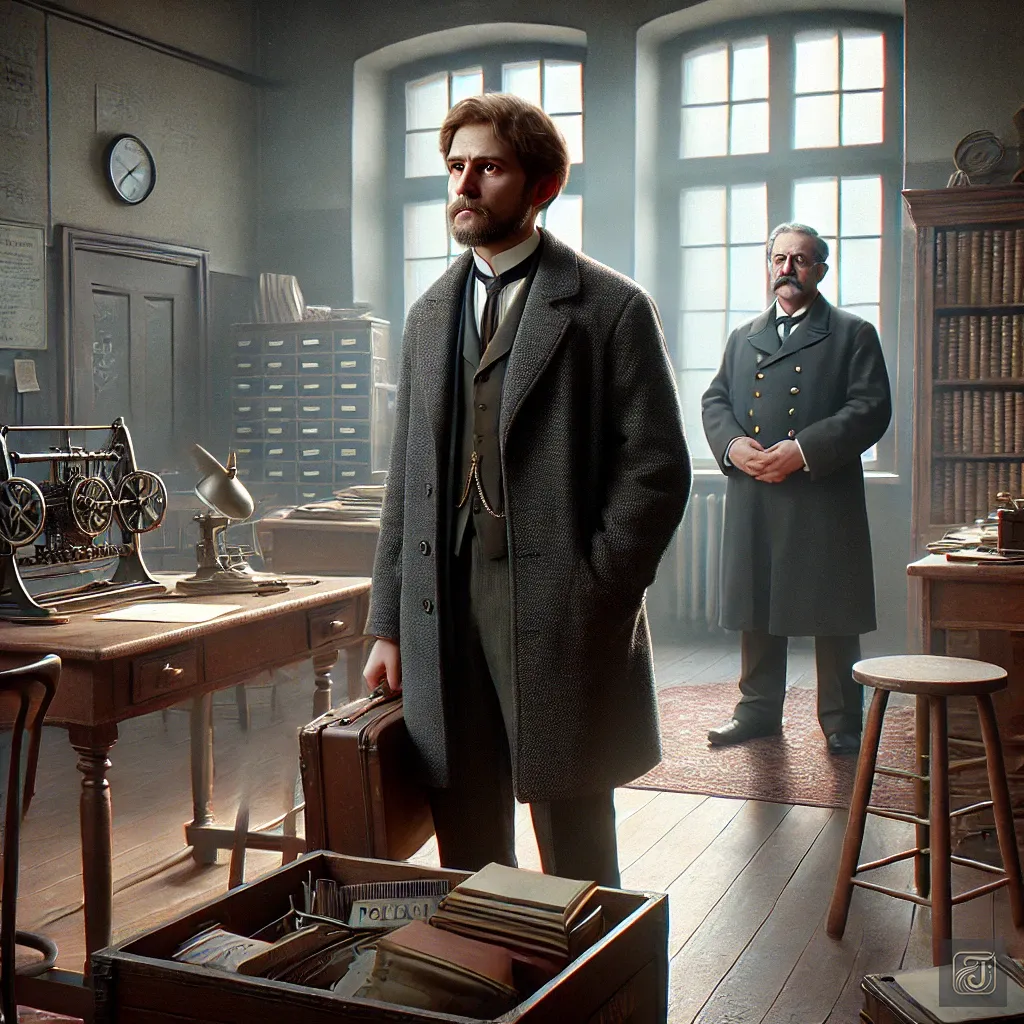
However, Maria’s father, Władysław, placed great importance on Polish culture and scientific education.
However, this was during the height of the Russian Empire’s cultural repression in Poland.
His approach to education was seen as rebellious by the Russian authorities, and he lost the support of the government.
He was forced to resign from his position due to pressure from the government.
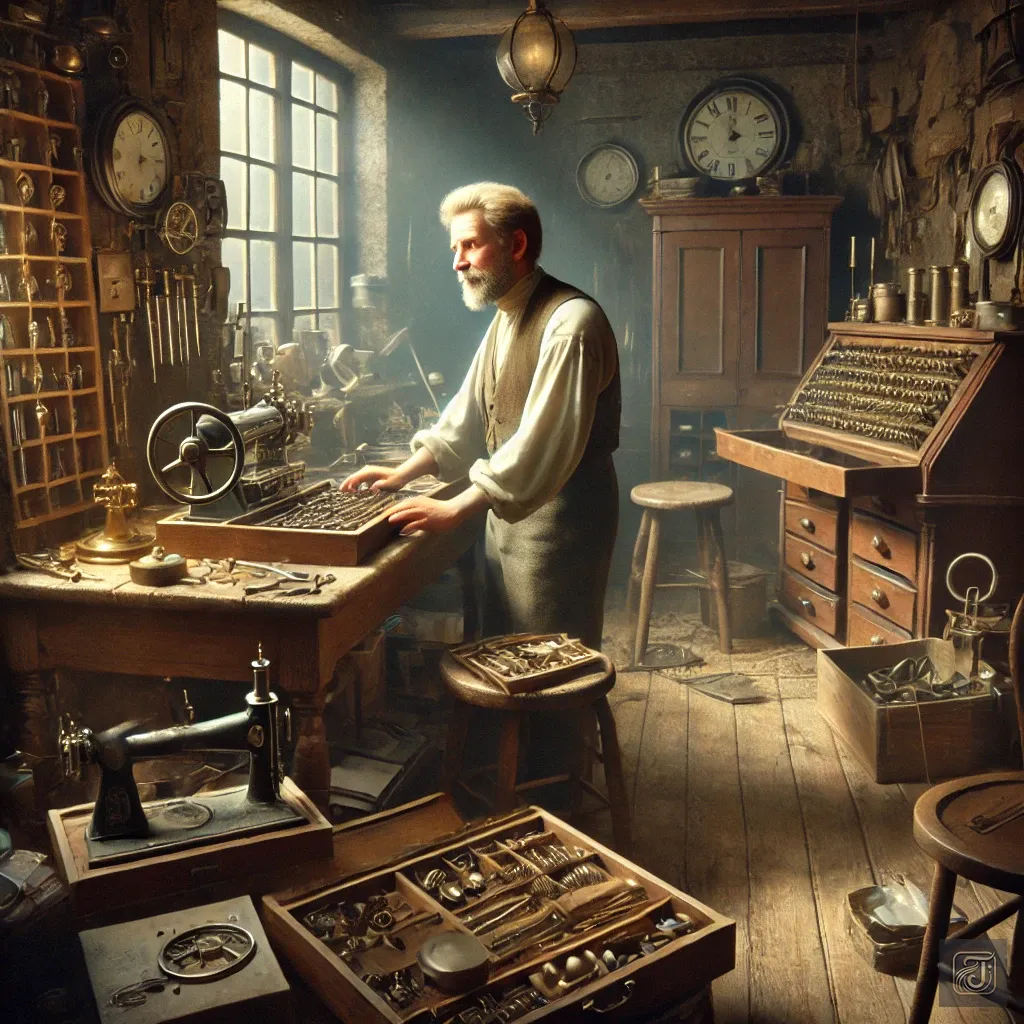
He worked in the rental and management of measuring instruments and laboratory equipment.
This job paid less compared to his previous teaching position, and the family’s financial situation worsened.
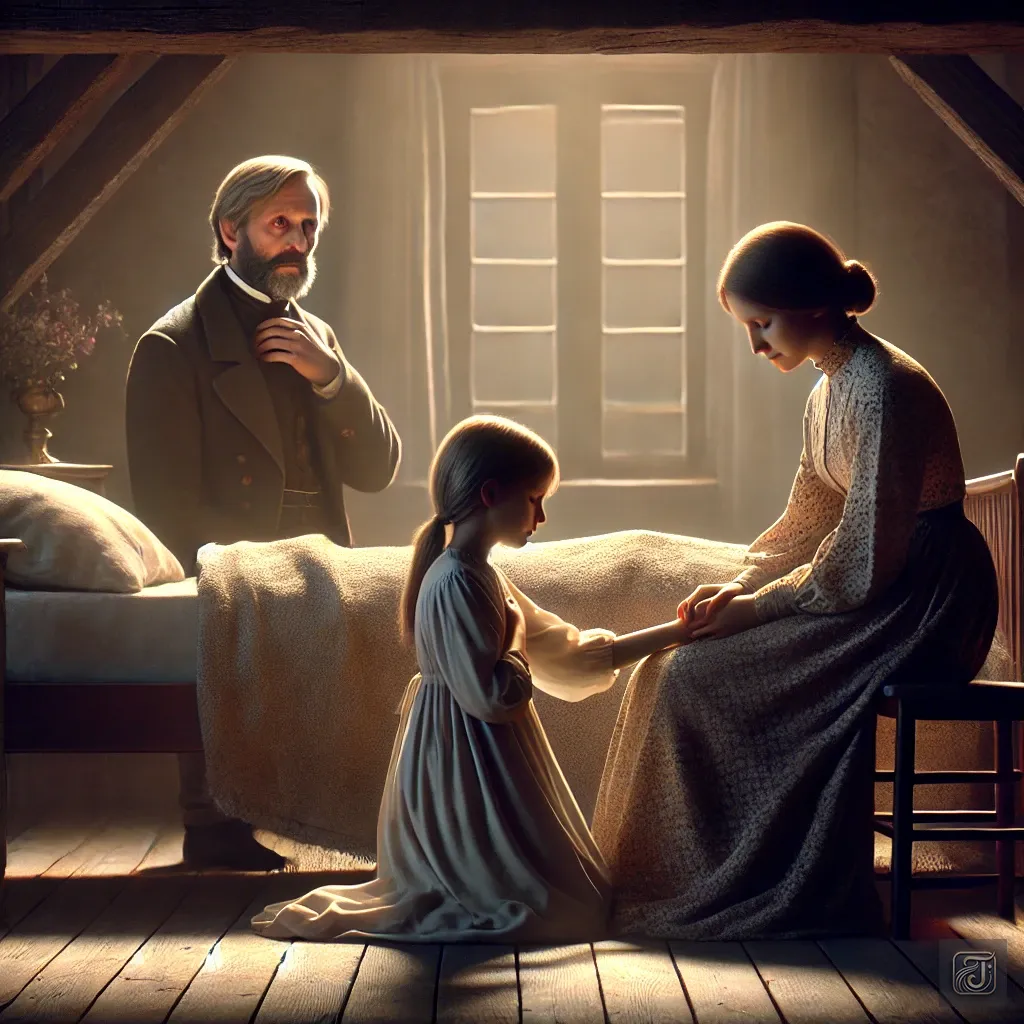
Furthermore, her mother, Bronisława, passed away from tuberculosis.
At the time, Maria was only 10 years old.
As a result, Maria’s family was forced to live in poverty.
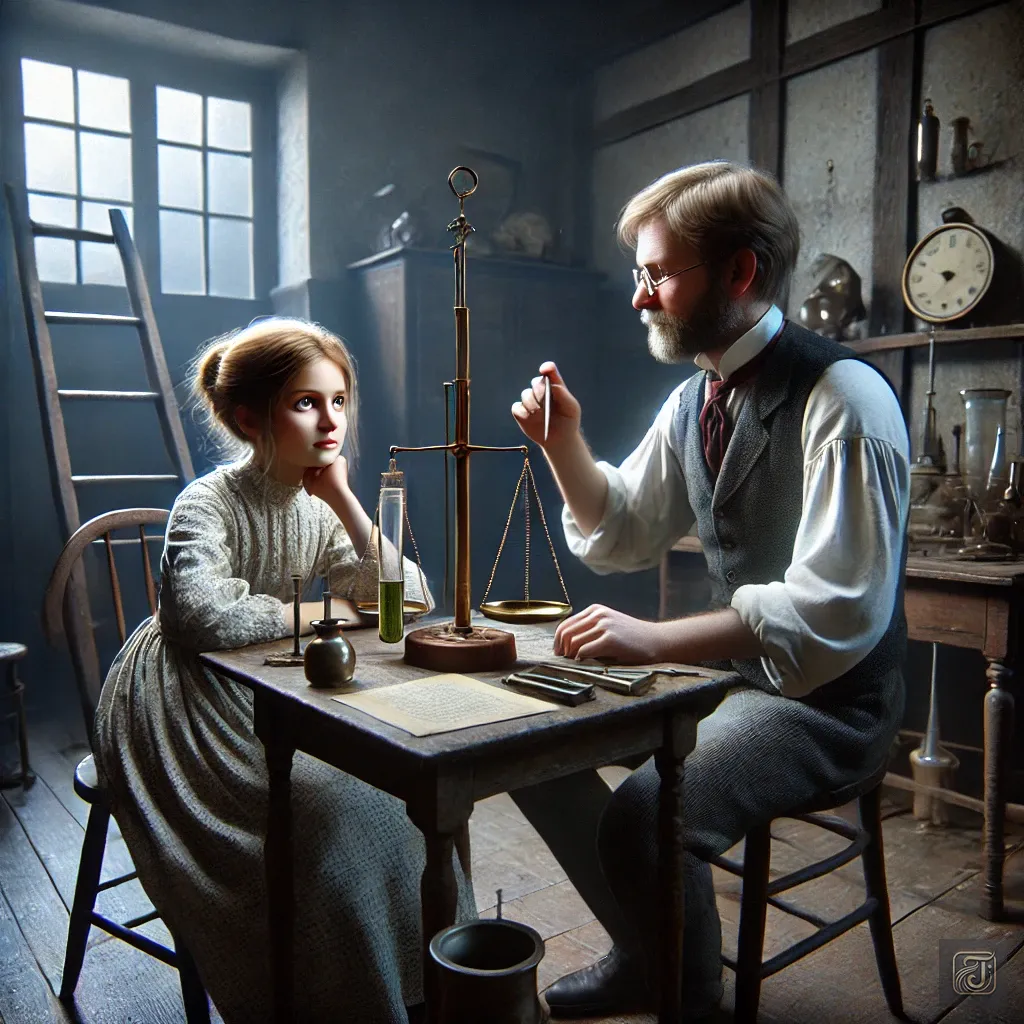
However, her father continued to teach Maria the basics of physics and mathematics, using scientific equipment at home.
This experience sparked her interest in science.
And it became a crucial factor in her later success as a scientist.
Chapter 2: In Search of Knowledge
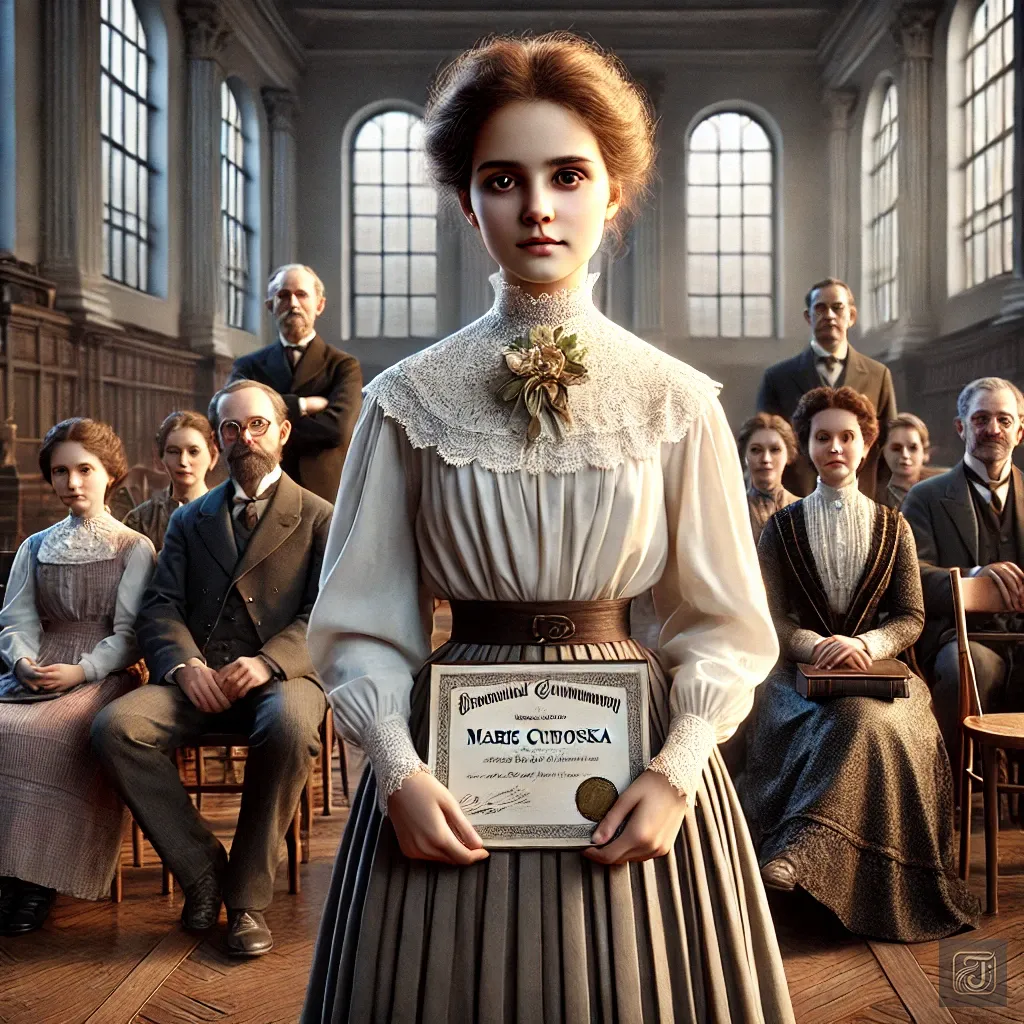
In 1883, Maria graduated at the top of her class from the Gymnasium in Warsaw.
However, at that time in Poland, it was almost impossible for women to attend university.
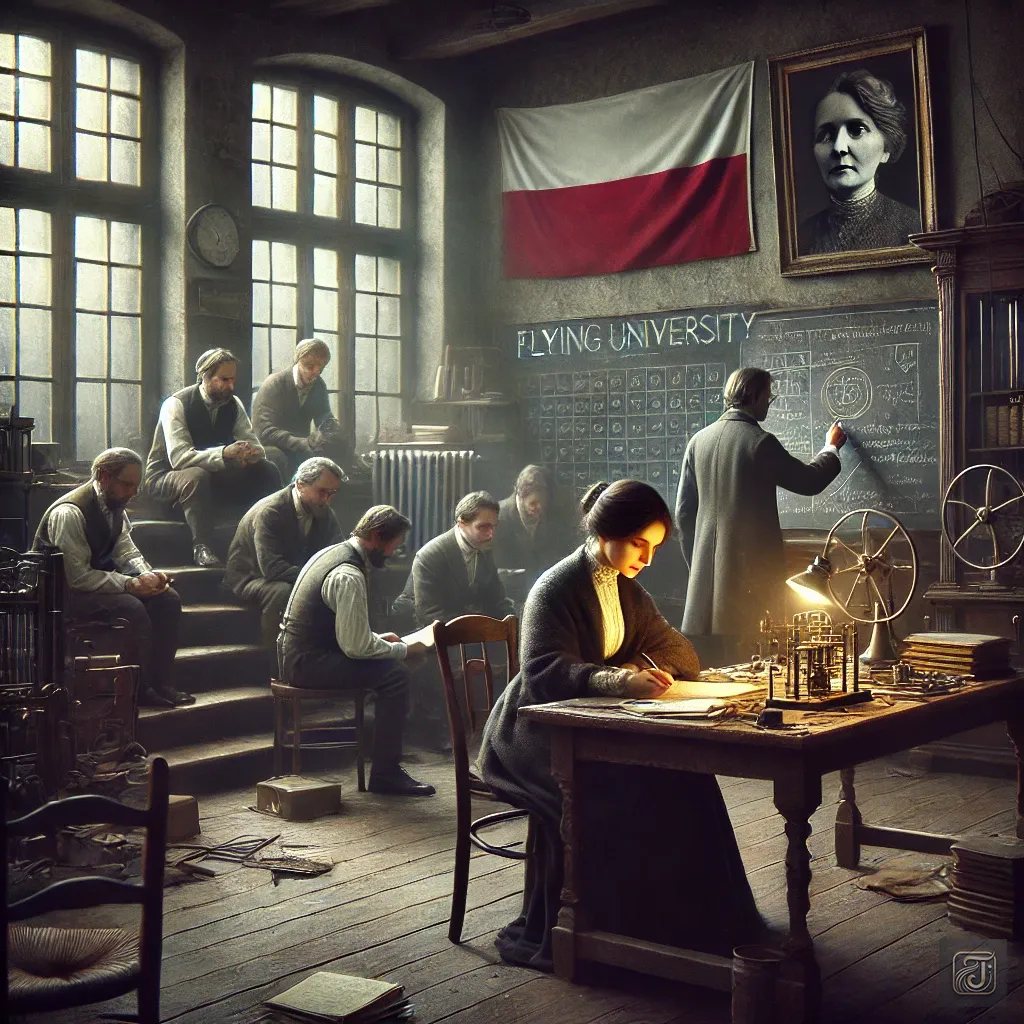
Nevertheless, she did not give up her passion for knowledge and continued to study at the “Flying University,” which was secretly operated.
This university was founded under Russia’s oppressive policies and provided a space for students seeking the opportunity to learn freely.

Marie Curie:
“What can we learn here?”
Teacher:
“We will learn Polish history, science, and the knowledge to build our future.”
“We will never bow to the oppression of the Russian Empire!”
” We must protect our culture!”
“To preserve our culture and freedom, we must continue to learn!”
Maria nodded deeply at the teacher’s strong words.
It was a time when Polish culture was under intense oppression by the Russian Empire.
Classes were held in secret, and the students moved from place to place day by day.
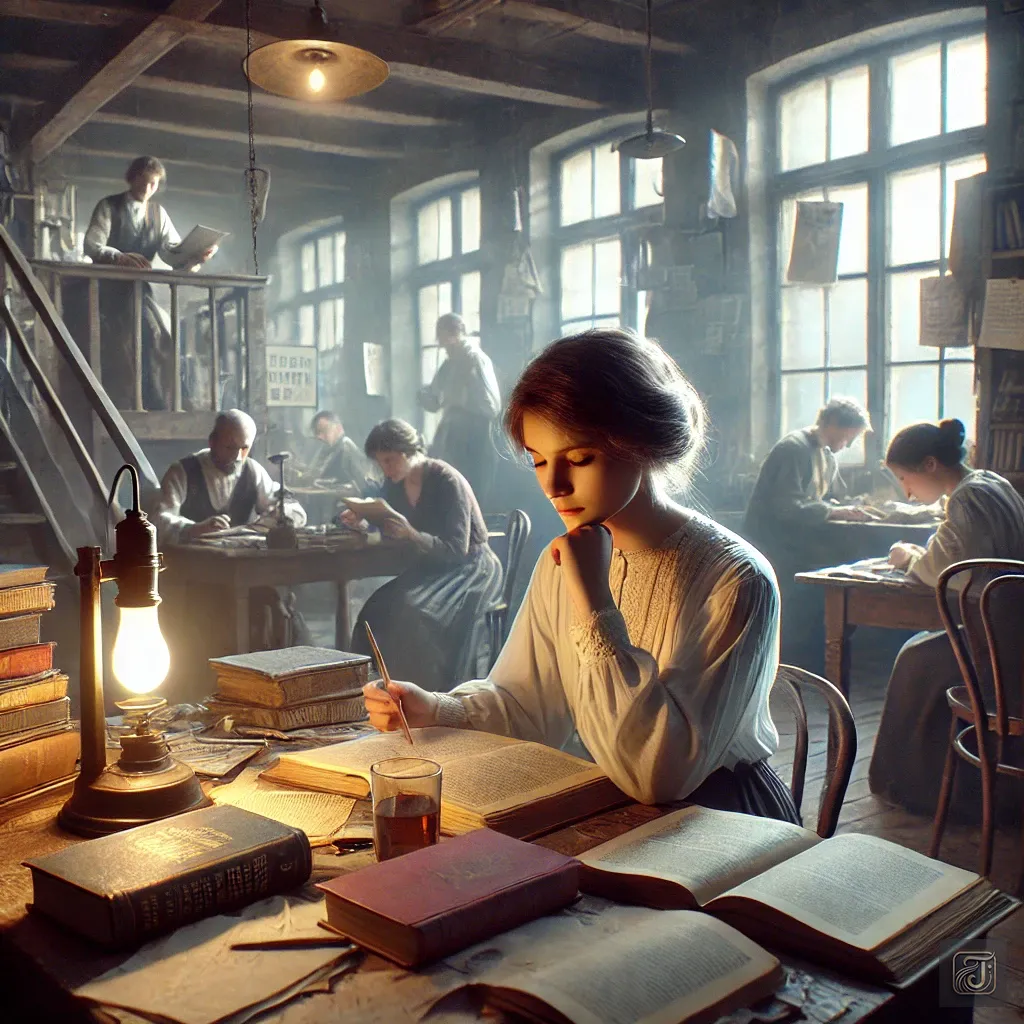
However, she continued to study passionately.
The knowledge she gained during this period laid the foundation for her future achievements as a scientist in France.
Chapter 3: Departure to Paris
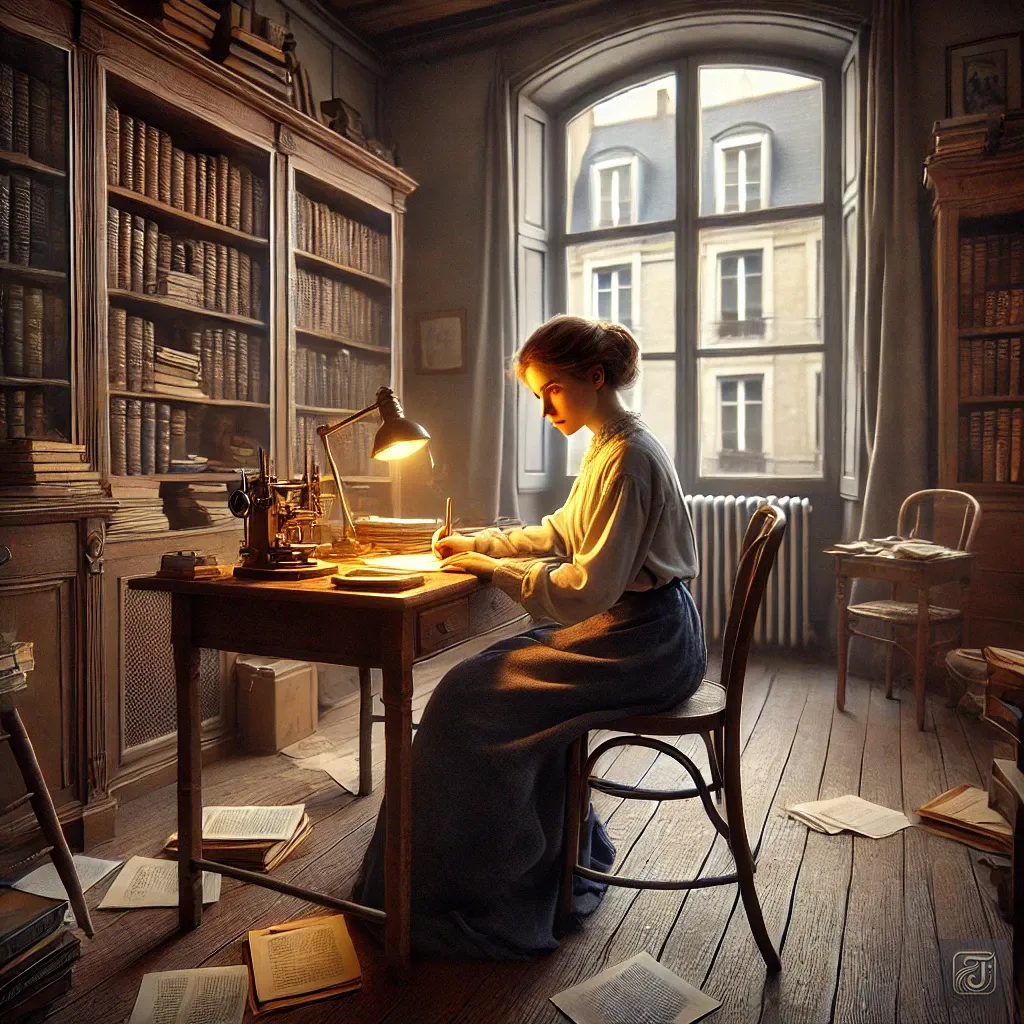
In 1891, Maria, chasing her dreams, went to Paris to study at the Sorbonne University.
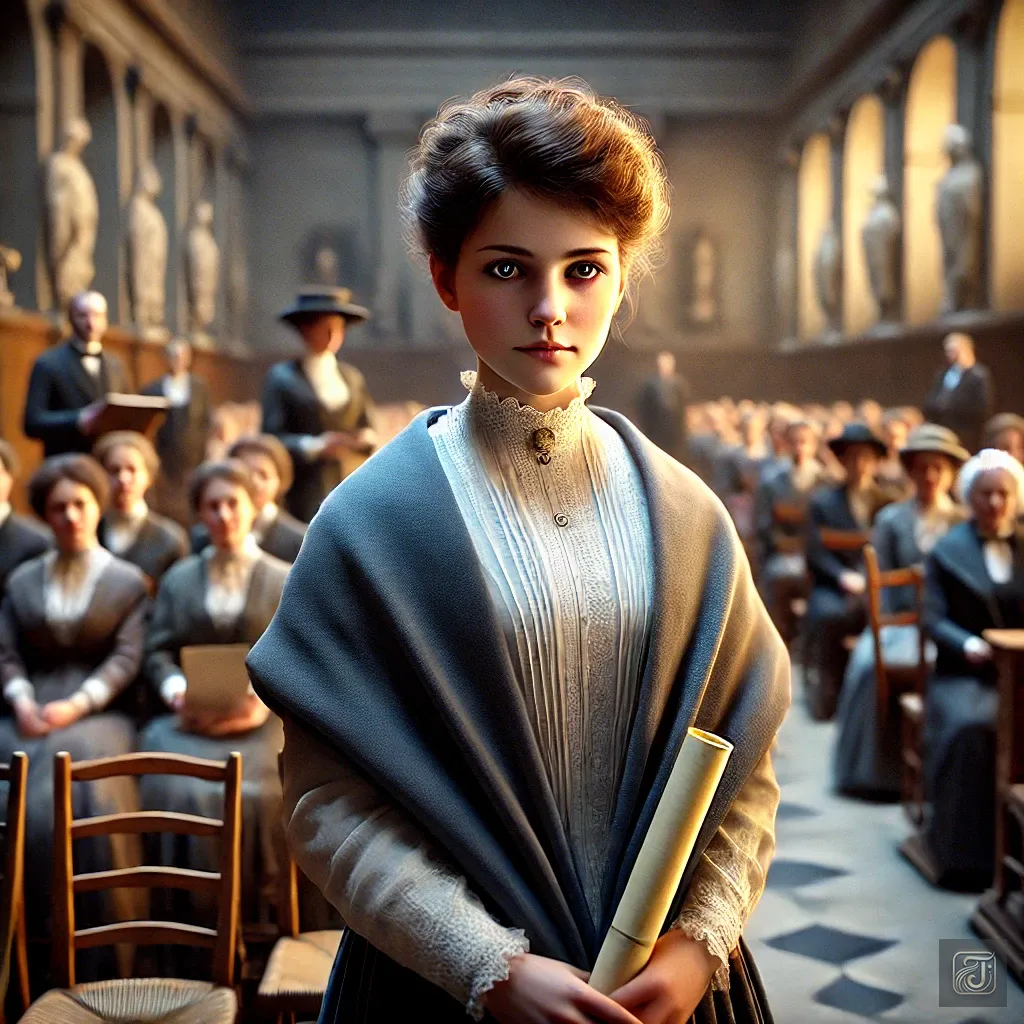
In a foreign land, she struggled with the differences in language and lifestyle, but in 1893, she earned her degree in physics, and the following year, she obtained a degree in mathematics.
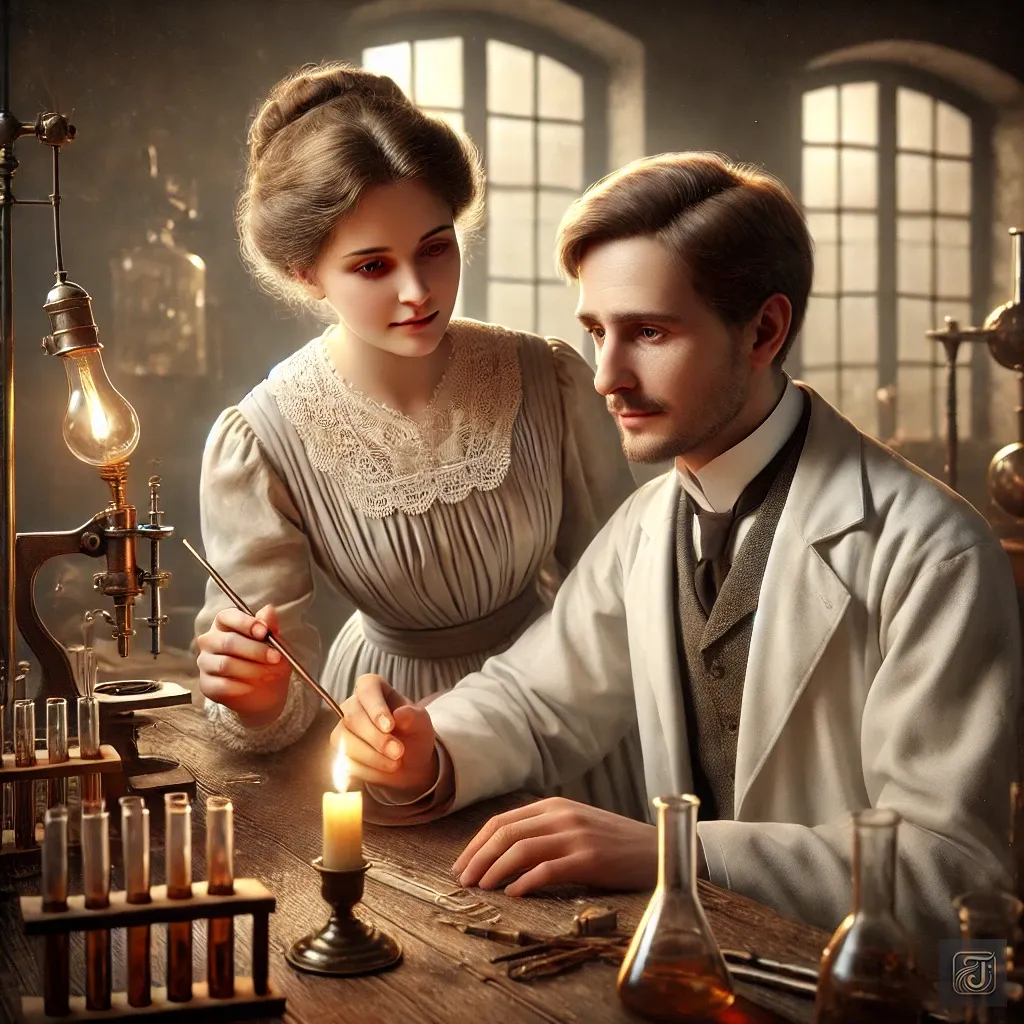
During that time, she met physicist Pierre Curie.
Bound by their shared passion for science, the two married in 1895 and became the Curies, dedicating themselves to their research.
Chapter 4: The Discovery of Radiation
In 1898, Marie and Pierre discovered two new elements, polonium, and radium, from uranium ore.
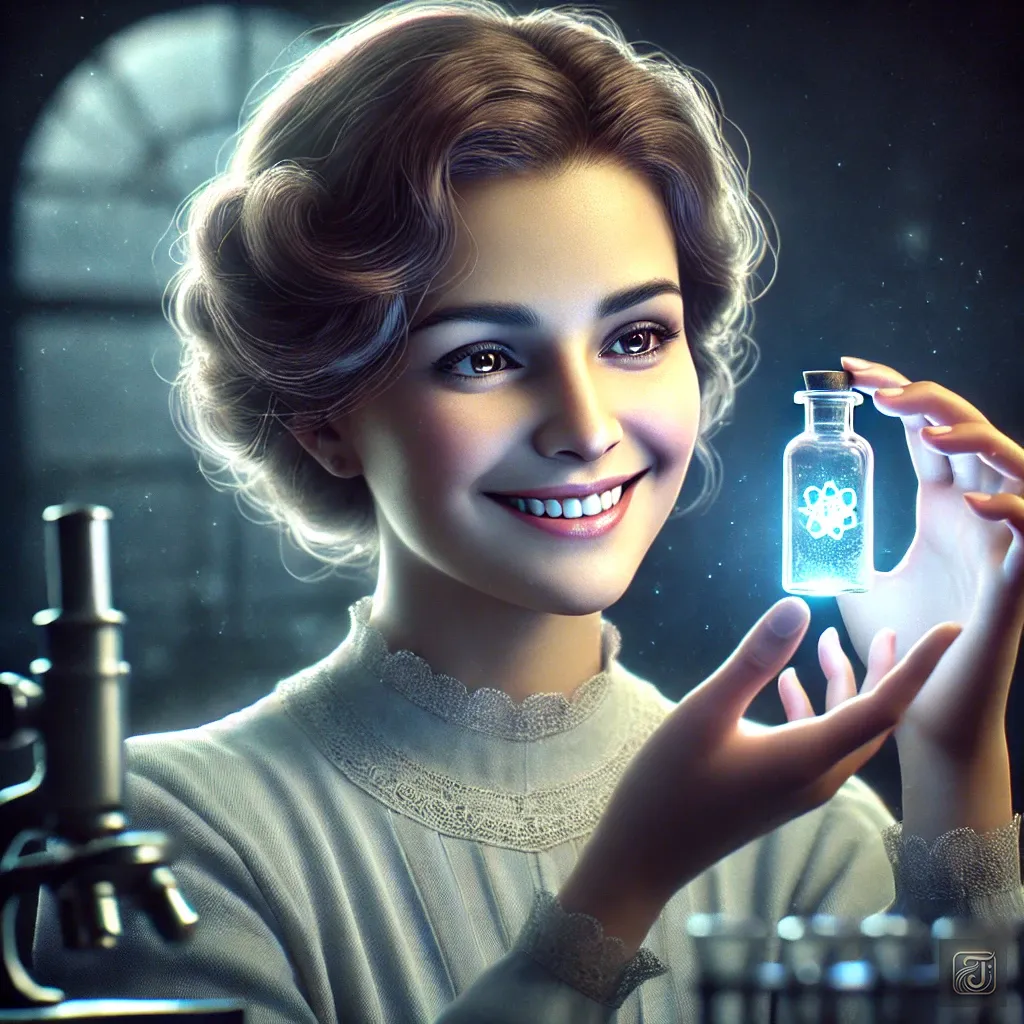
Marie Curie:
“Pierre, look! This is radium!”
Marie said, showing Pierre a vial containing radium.
The vial of radium emitted a soft, bluish glow, lighting up the dark research room.
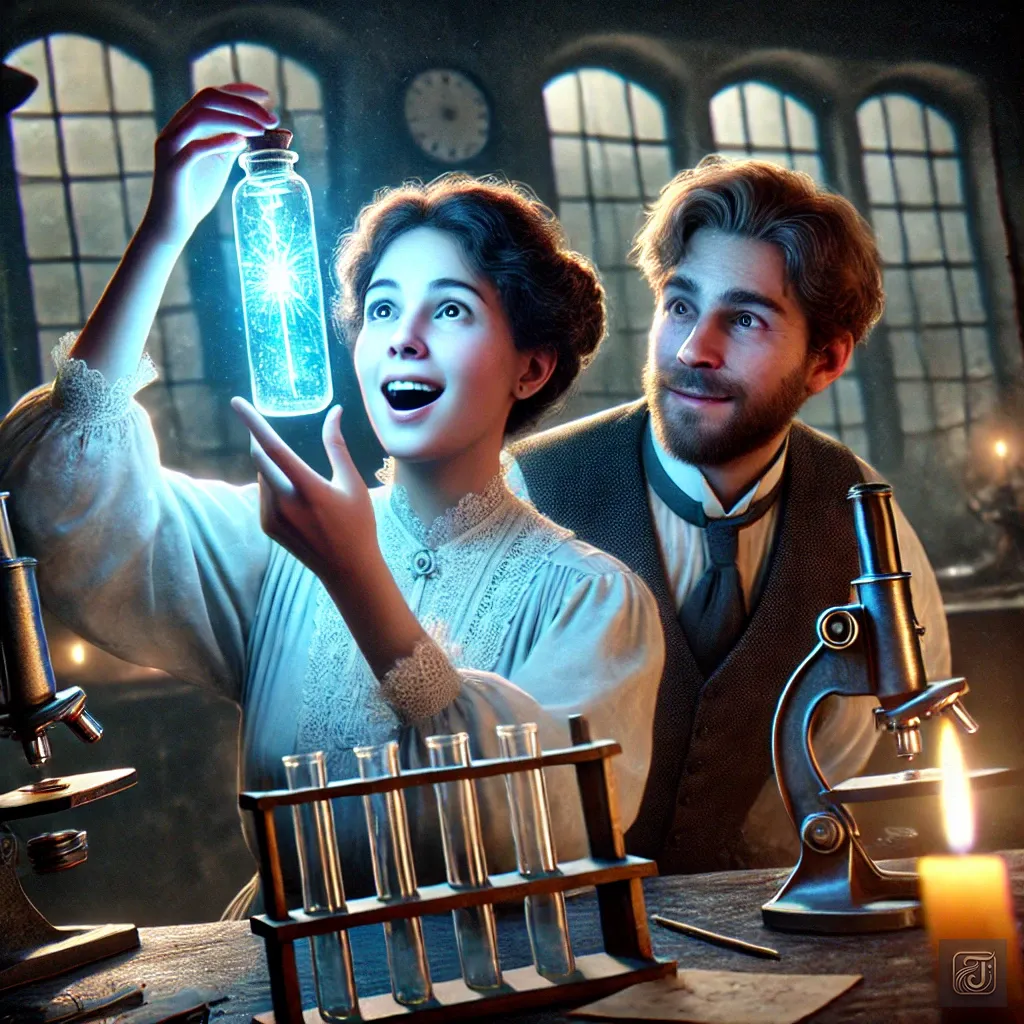
Pierre:
“Indeed! This is amazing!
“This discovery is going to shake the scientific world!”
“Radium has an incredible power!”
“It might just make cancer no longer an incurable disease!”
Pierre could not contain his excitement at the discovery.
Marie Curie:
“The light of radium is not only beautiful, but it also holds the power to save lives.”
Marie’s eyes also sparkled with the excitement of this new possibility.
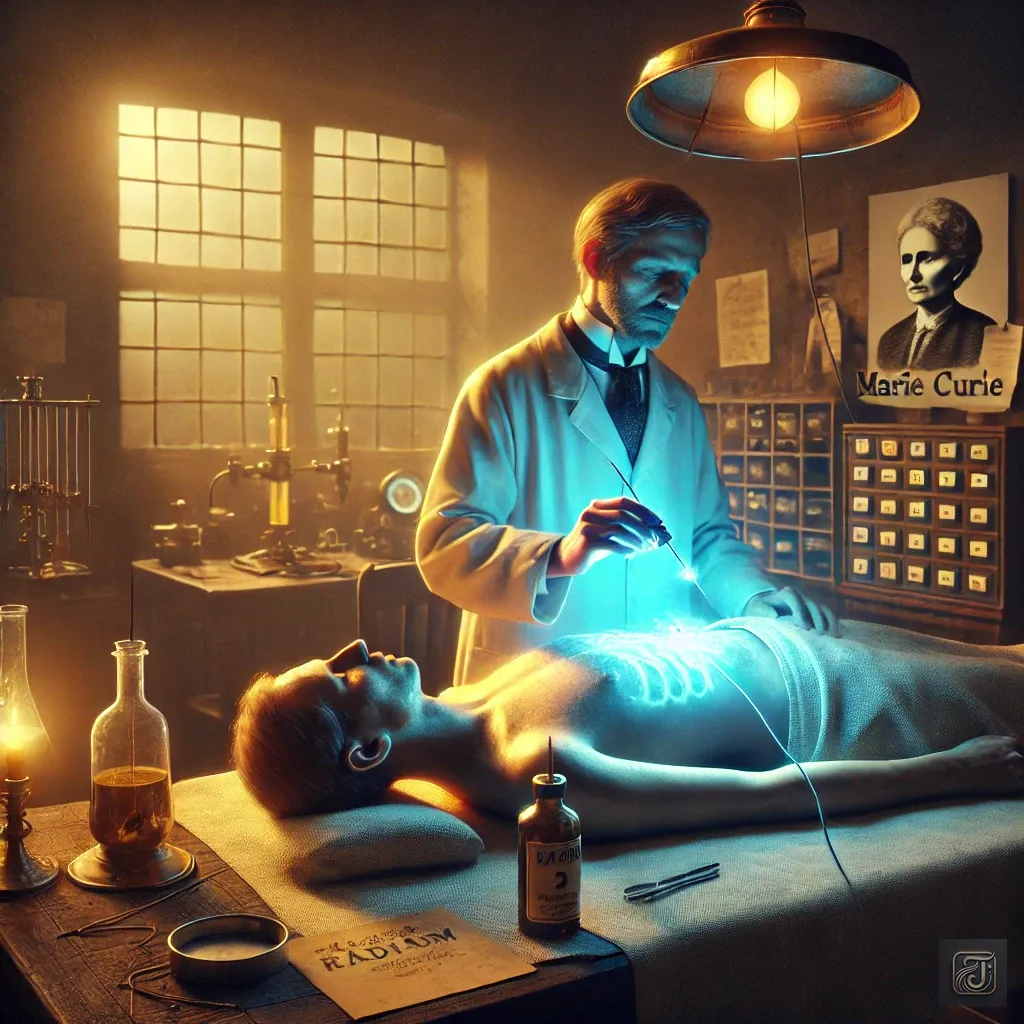
As she had predicted, radium was applied in radiation therapy, paving the way for cancer treatment.
At the time, the newly discovered “radiation” referred to the property of materials releasing invisible energy.
For example, the radiation emitted from radium was used to destroy cancer cells, opening the door to new treatments.
This brought a ray of hope to diseases that had previously been difficult to treat.
The treatments based on Marie’s research gave hope to many patients.
Polonium was named in honor of her homeland, Poland.
Polonium is a radioactive element that exists in very small quantities in nature.
On the other hand, radium has the characteristic of glowing with a bluish-white light in the dark, a glow that captivated many people.
However, Marie was also aware of the hidden dangers behind it.
Marie Curie:
“The discovery of radium brings a new light to medicine, but at the same time, it must be handled with care.”
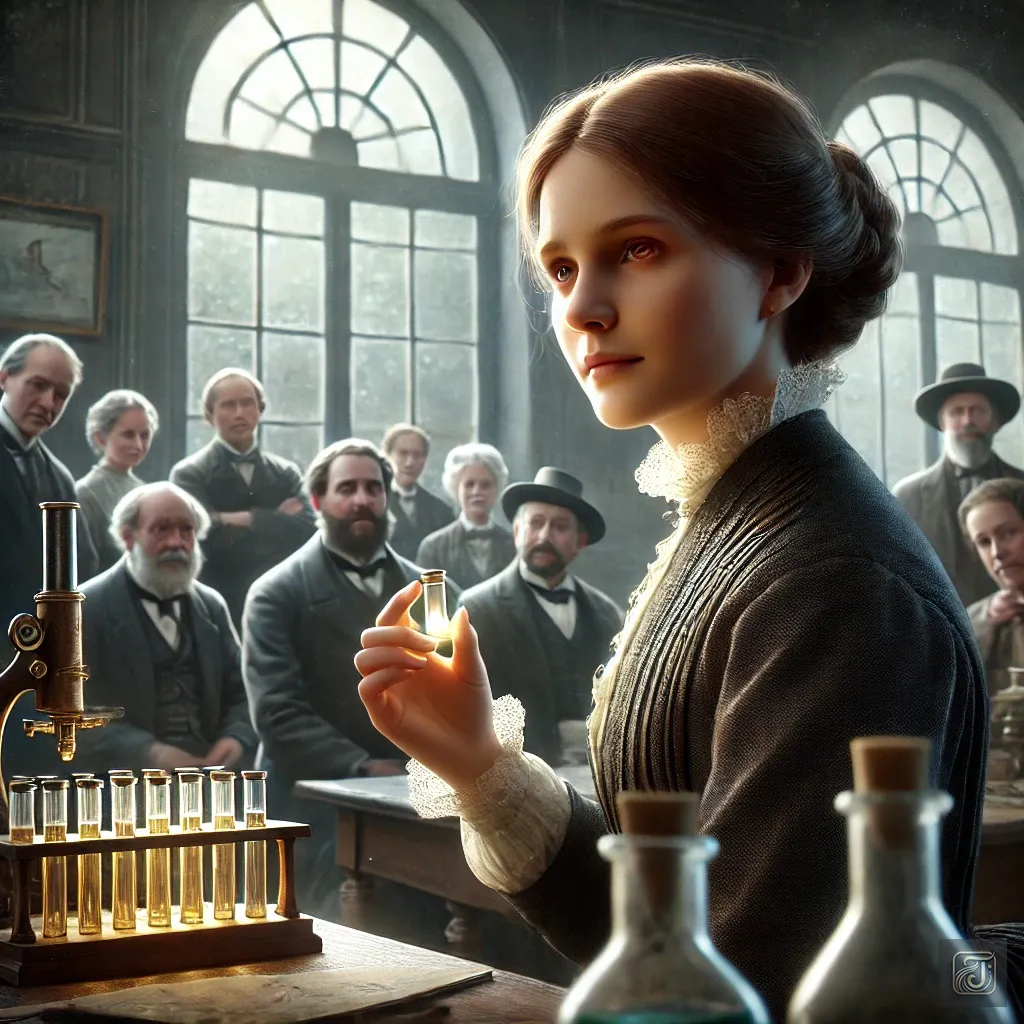
However, despite her significant achievements in France, some French people criticized her for naming the element “polonium” in honor of her homeland, Poland.

Marie Curie:
“Pierre, our discovery is bound to change the future of humanity.”
Her words were filled with unwavering belief in the power of science.
Chapter 5: Struggle with Gender Discrimination
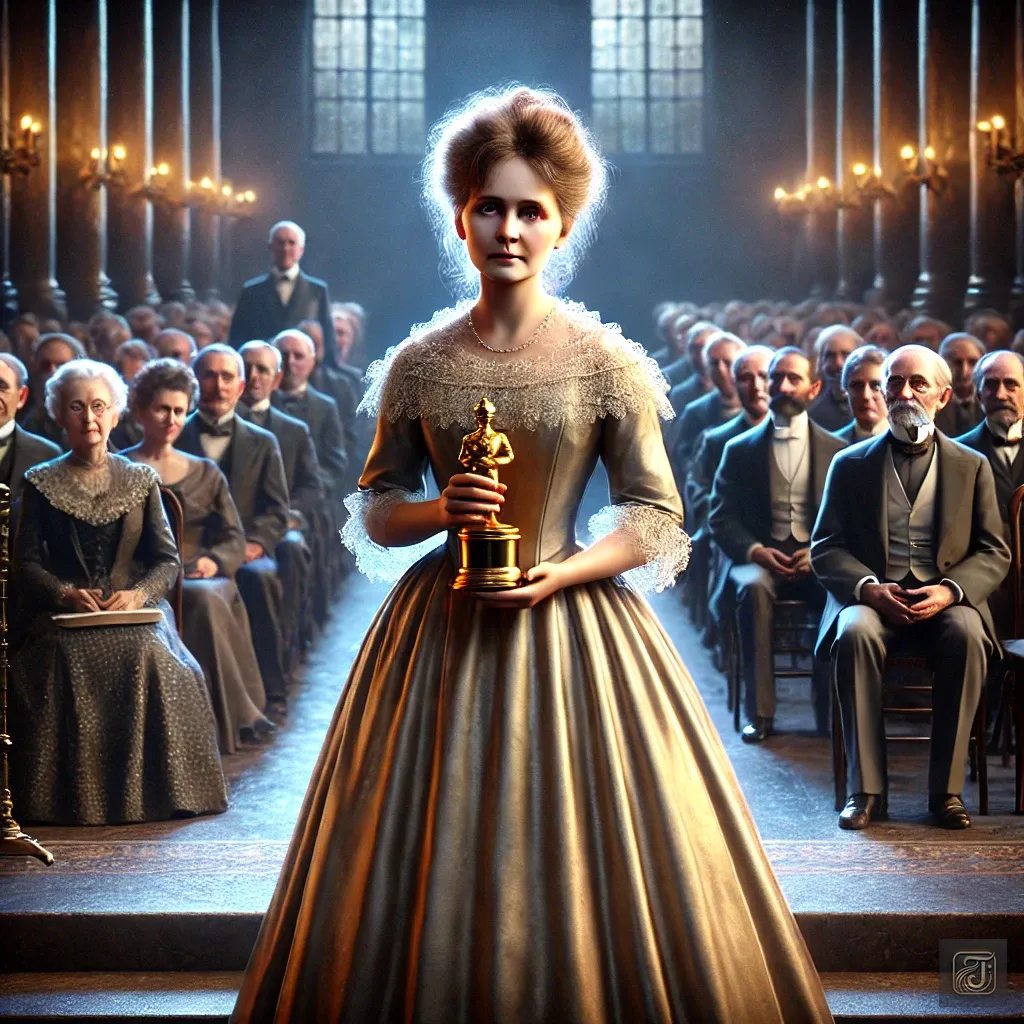
In 1903, she became the first woman to receive the Nobel Prize.
However, initially, only her husband, Pierre, was nominated.
In response, Pierre protested strongly.
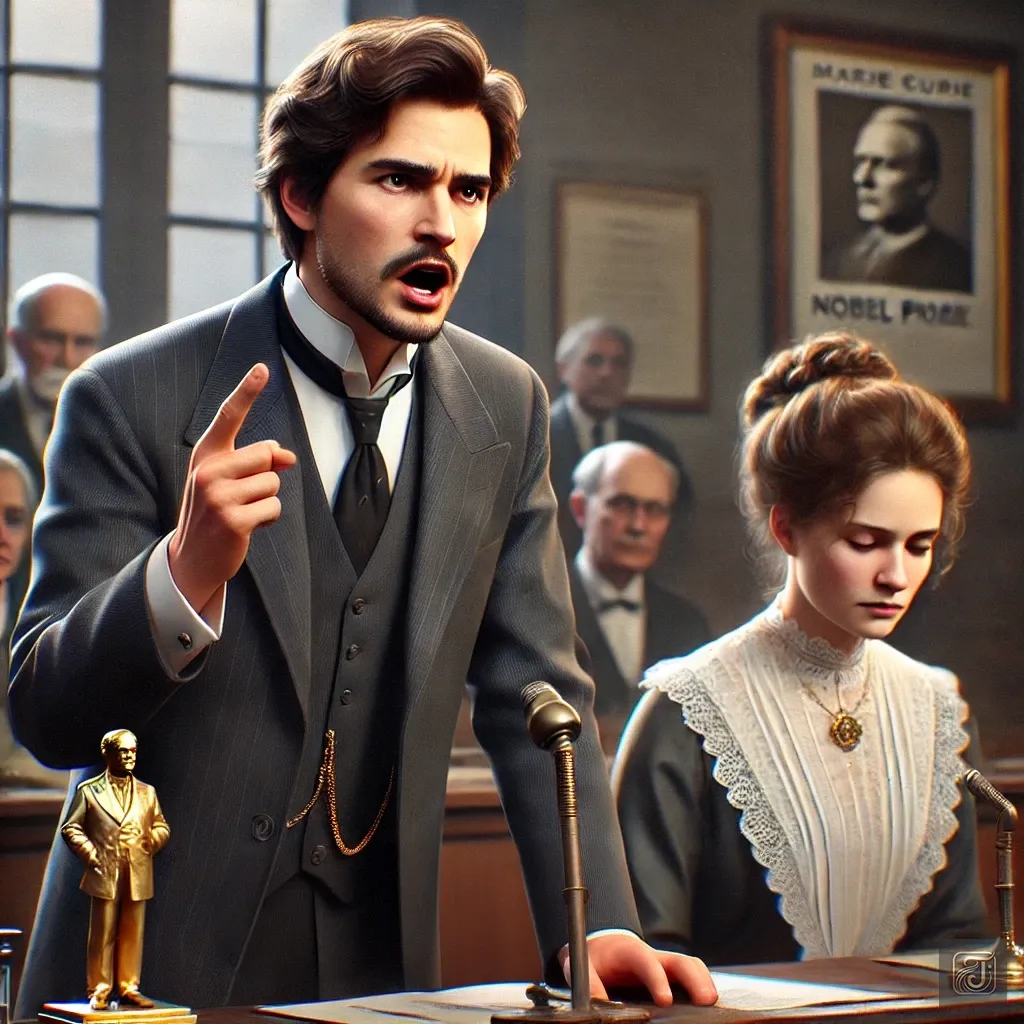
Pierre:
“She has contributed just as much as we have!”
“Therefore, she should be recognized equally with us!”
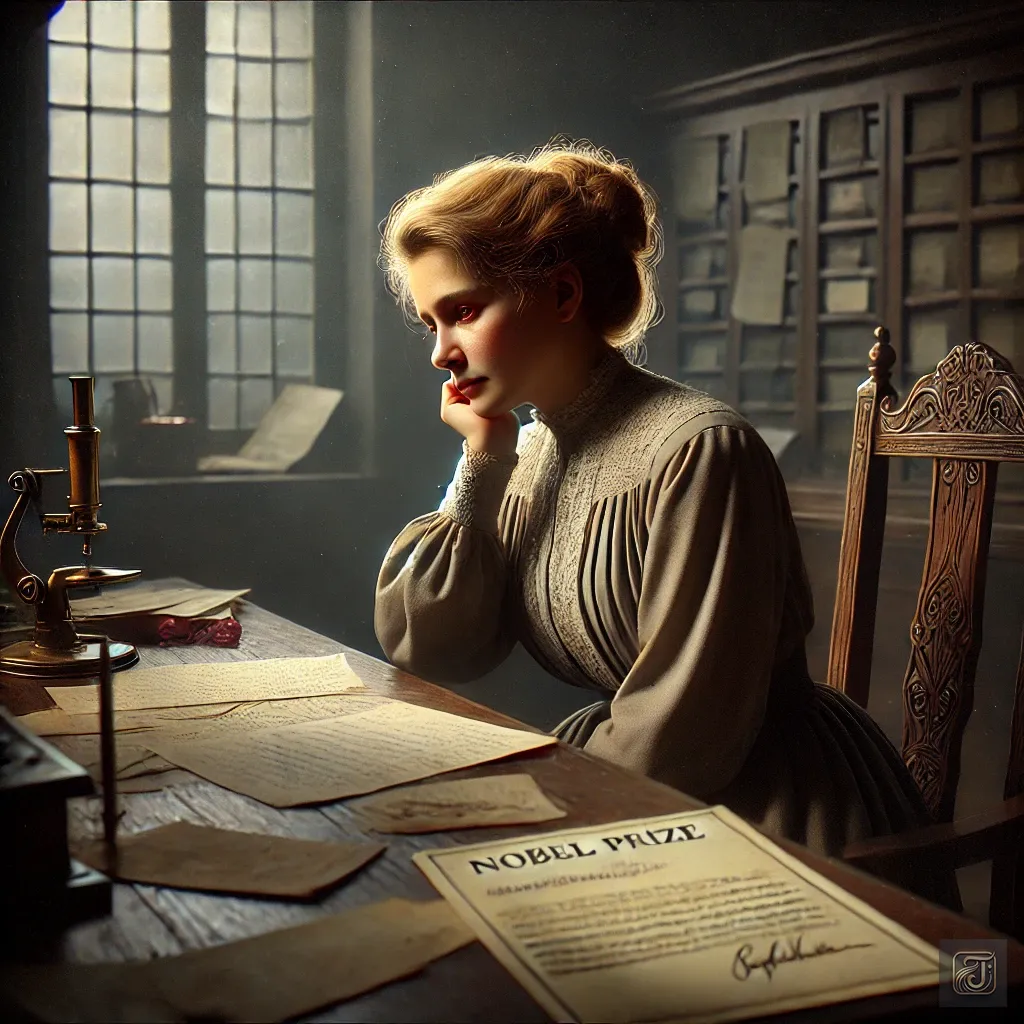
Thanks to Pierre’s protest, Marie was eventually recognized as a joint laureate, but this event left a deep wound in her heart.
Although she became the first woman to receive the Nobel Prize, when the news of the award arrived, Marie’s feelings were conflicted.
She had been excluded from the list of recipients simply because of her gender.
The pervasive gender discrimination in the scientific community deeply hurt her.
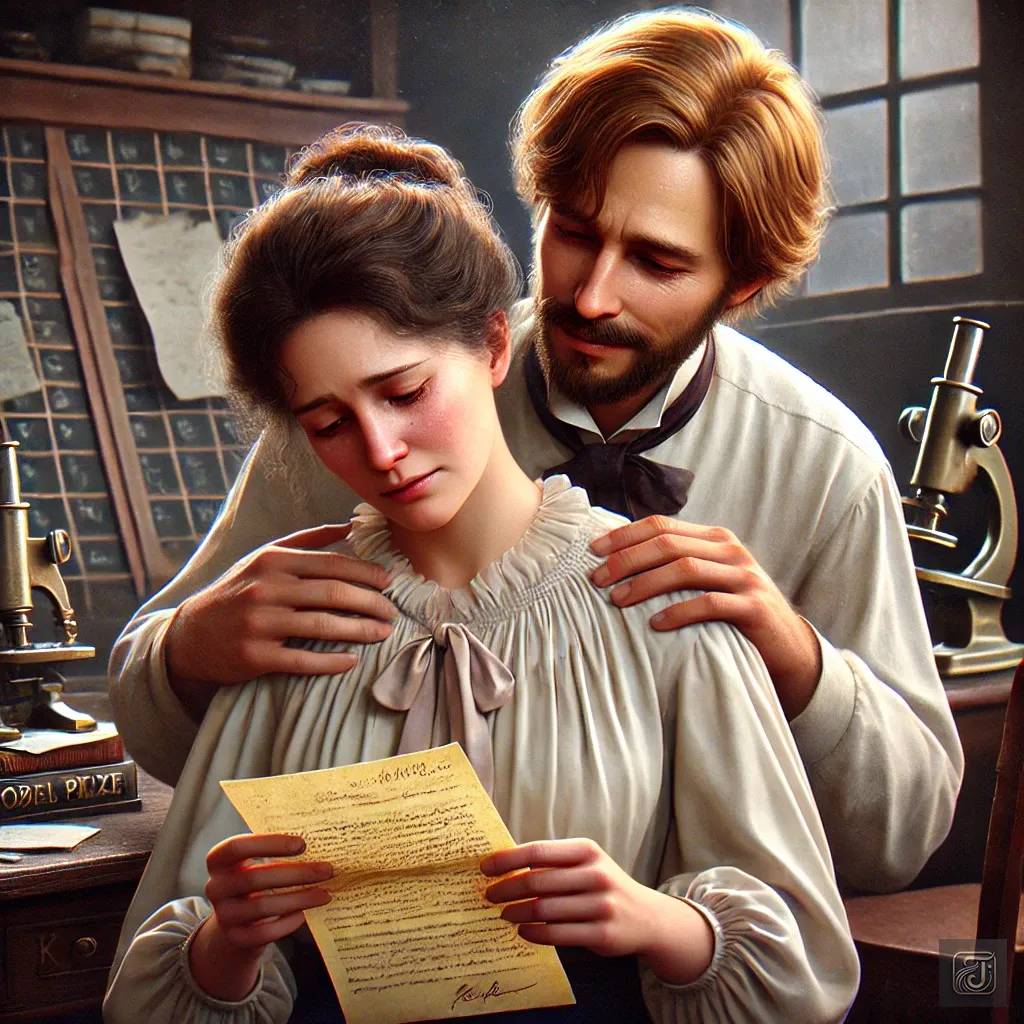
Marie Curie:
“Pierre, I can’t believe we’re receiving this prize.”
Marie muttered as she clutched the letter in her hand.
Pierre:
“Your efforts have been recognized, Marie.”
Pierre smiled and placed his hand gently on her shoulder.
However, deep within her, a profound inner conflict stirred.
Because she was a woman, at first, only her husband, Pierre, was recognized as a recipient.
If Pierre had not protested so strongly, her name might have vanished from history.
This reality gripped her heart tightly.
After the ceremony, amidst the sound of congratulations, Marie sat alone in the quiet of the dressing room.

Marie Curie:
“Can I really say that I’ve been truly recognized now?”
She stared at the trophy in her hands, silently questioning herself in her heart.
There was joy in knowing her efforts as a scientist had been recognized.
However, the fact that her achievements were almost overlooked simply because she was a woman left her heart filled with anxiety and loneliness.
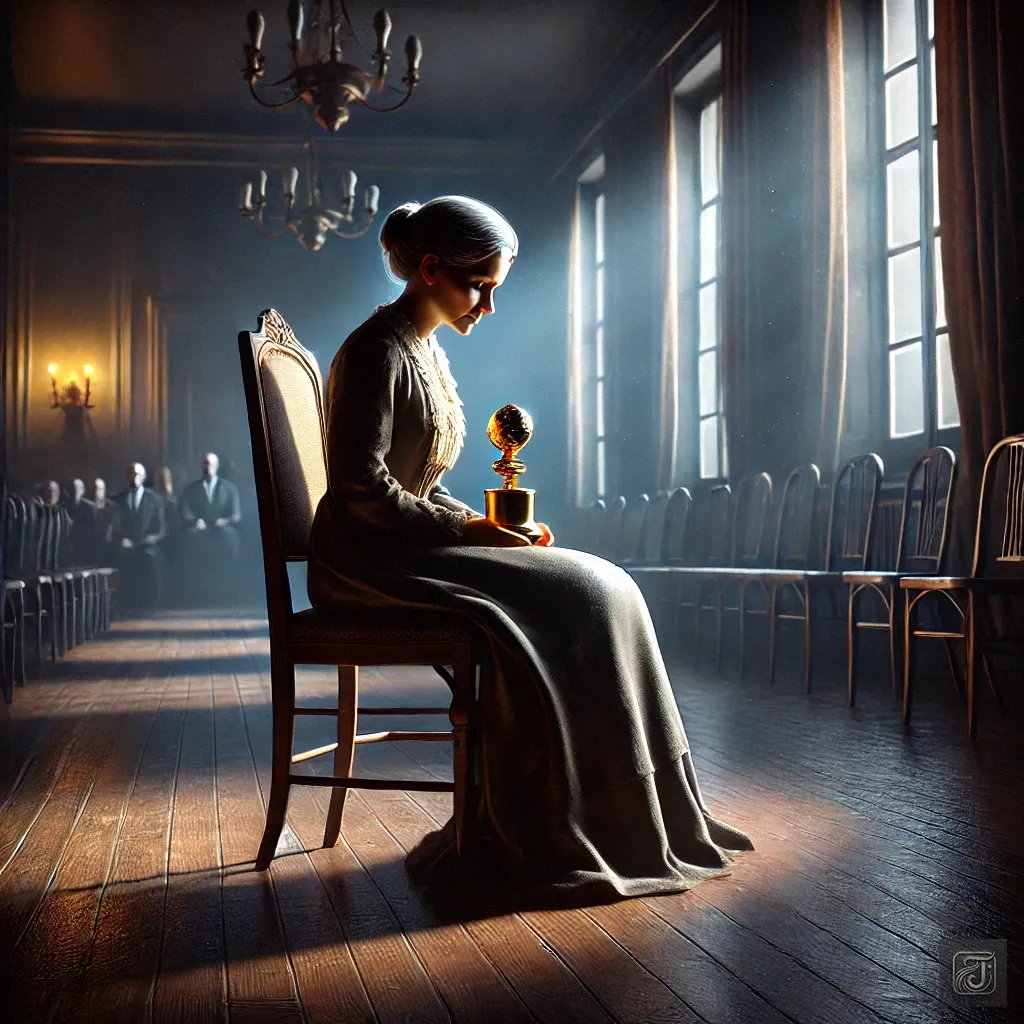
Marie Curie:
“No matter how much I achieve, as long as I am a woman, will I ever truly experience equality…?”
It was thanks to Pierre’s encouragement that she was able to overcome this barrier, yet in her heart, the feeling of “loneliness in the world of science” always lingered.
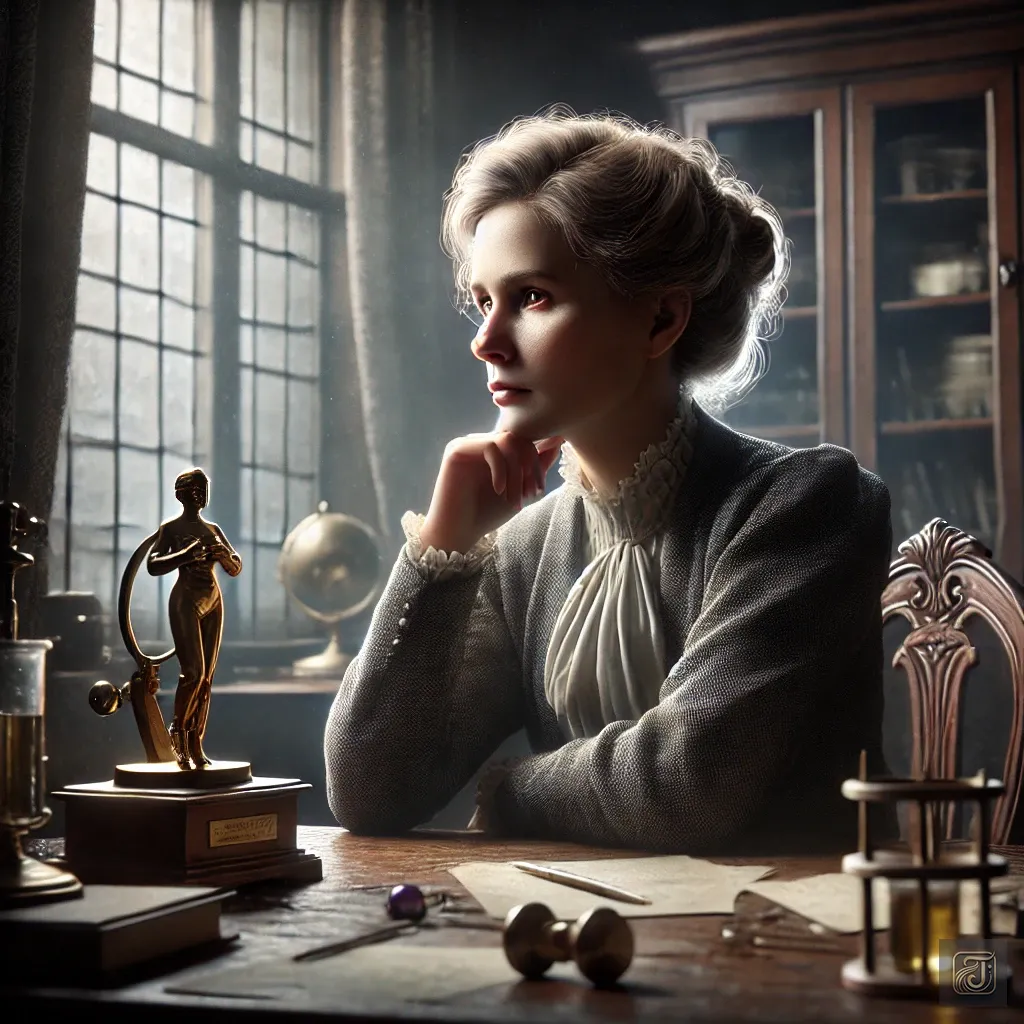
Marie Curie:
“There should be no gender in science.”
“But this world doesn’t change so easily, does it?”
In Marie’s eyes, there was a mix of frustration and determination for the future.
Chapter 6: Tragedy and Independence

In 1906, Pierre tragically lost his life in an accident. His death changed Marie’s life forever.

The news hit her like a winter storm, suddenly freezing her world.
She stood still, feeling as though the ground was crumbling beneath her feet, and eventually, unable to bear the weight, she collapsed to the ground.

Marie Curie:
“Pierre… No, this can’t be true…”
With trembling hands, she held his beloved research notebook.
The next day, when she faced his lifeless body, Mari could not even cry.
She took his cold hand in hers, closing her eyes as if searching for the warmth that once lived in his fingertips.
In a trembling voice, she whispered.
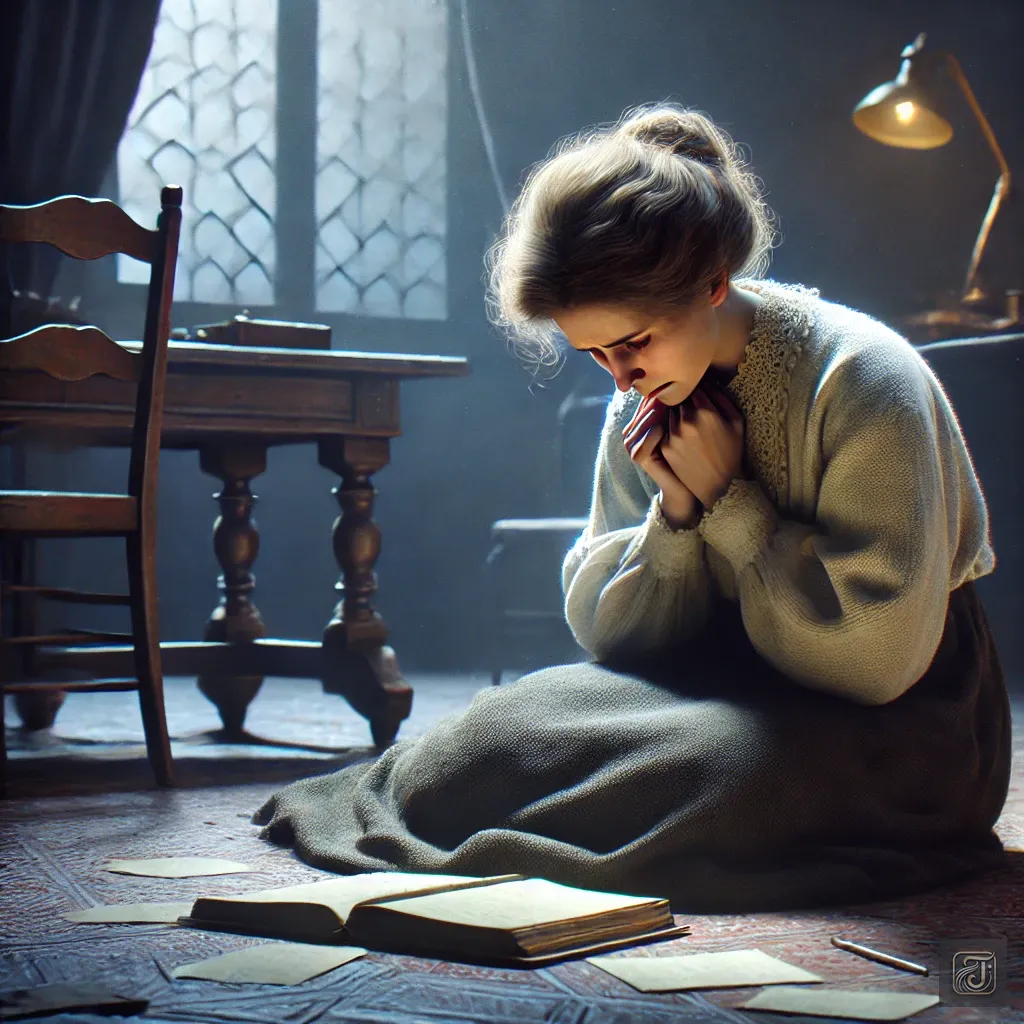
Marie Curie:
“You are no longer here, but you will always remain in my heart.”
“Even though you are gone, I will continue.”
“The dream we walked together toward, I will carry it forward…”
“So please, watch over me.”
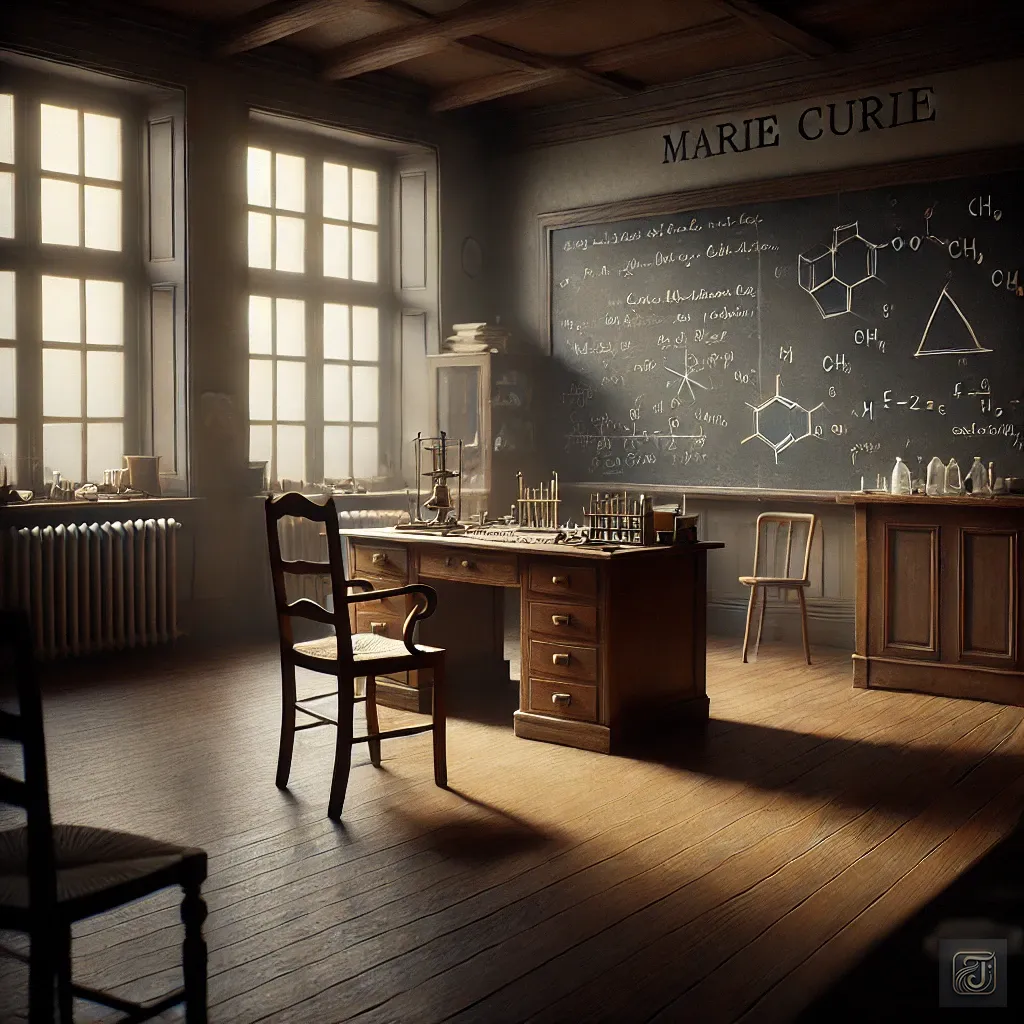
However, when she returned to the laboratory, what awaited her was an empty space where he used to be.
The chair where Pierre had sat remained in place, and the equations he had been working on were still written on the blackboard.
The moment she saw it, the emotions she had been holding back surged forth all at once.
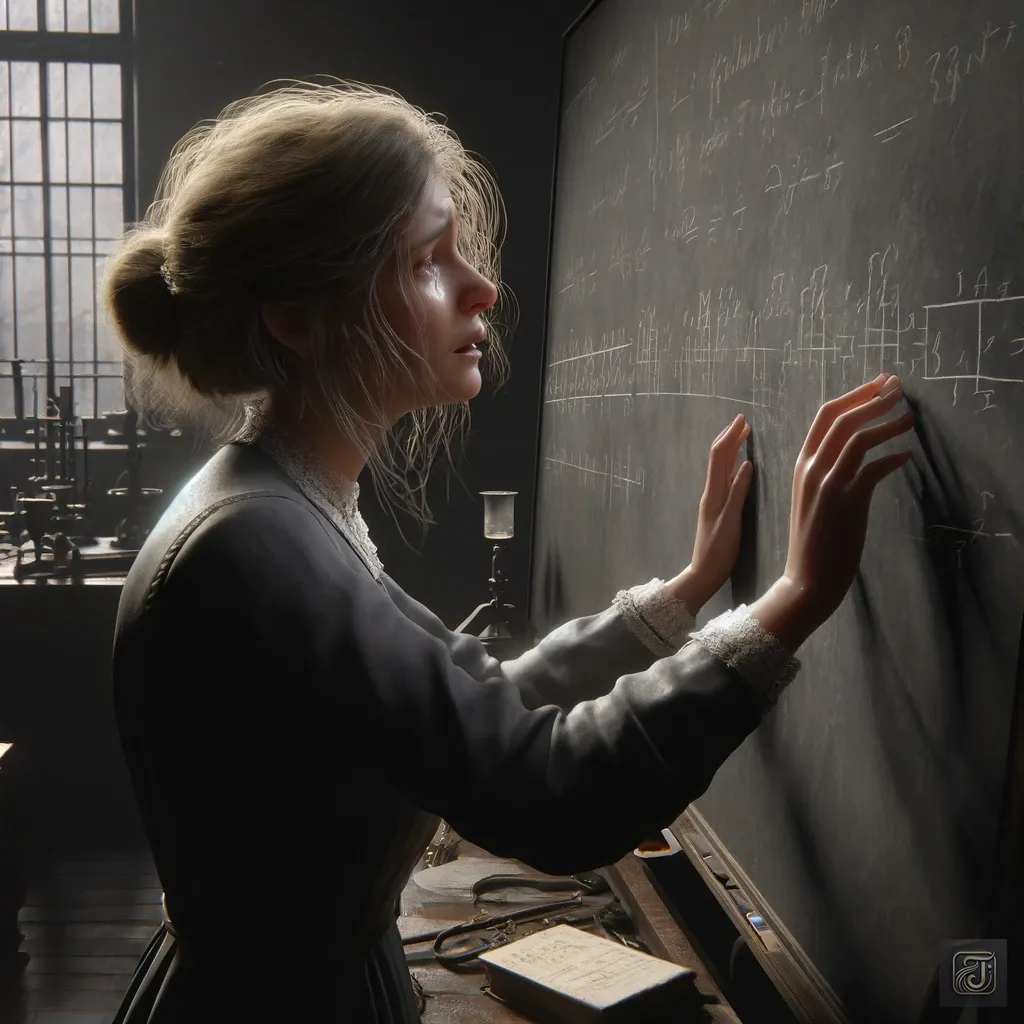
Marie Curie:
“Why…”
“Why aren’t you here?”
She cried out, her voice breaking as she reached out with trembling hands to touch the blackboard.
As the night wore on, she opened his cherished notebook and traced with her finger the last equation he had written.
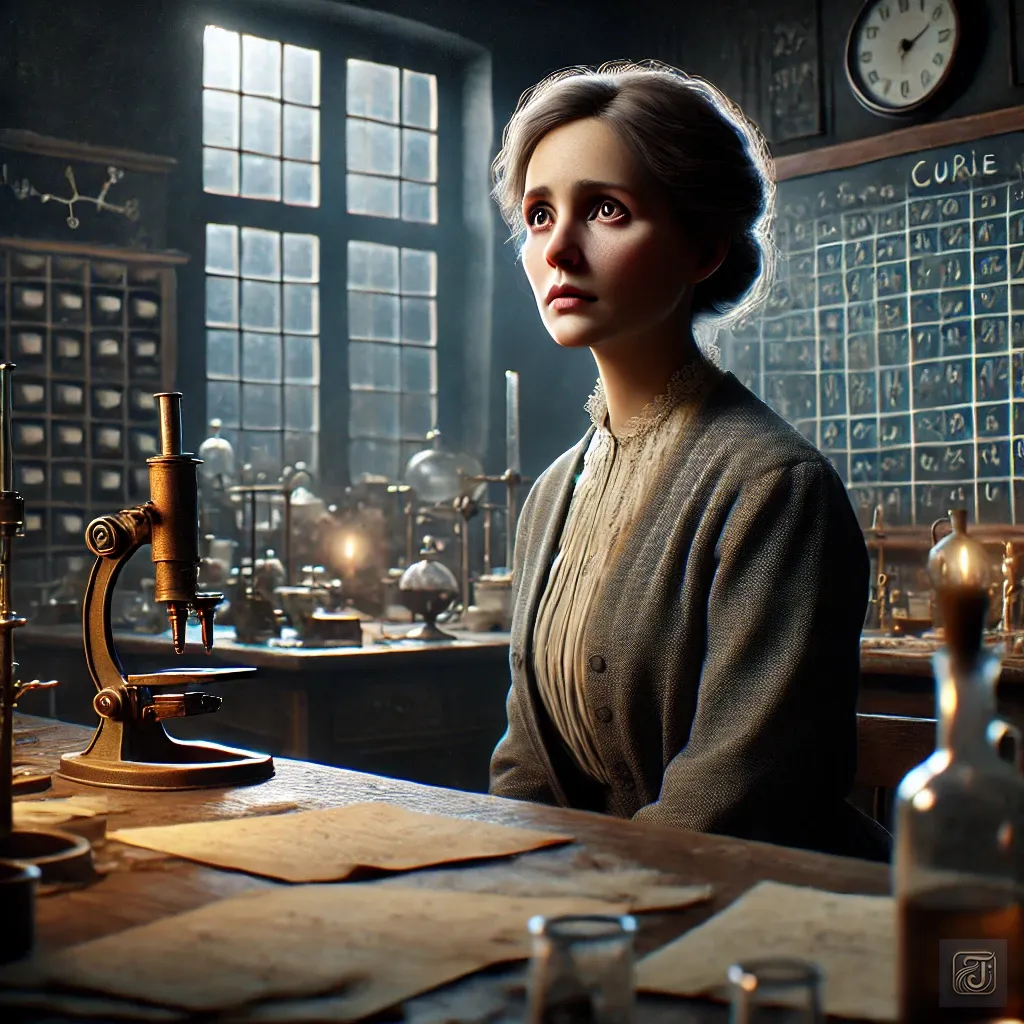
Marie Curie:
“I have to continue this… “
“but can I really do it alone?”
In her eyes, there was anxiety and fear.
Marie tried to act as a strong woman, but inside, she felt overwhelmed by loneliness and the sense of loss.
Still, she stood up.
She believed that completing the research Pierre had left behind was the only gift she could offer to him, now gone.
Chapter 7: Criticism Due to Scandal
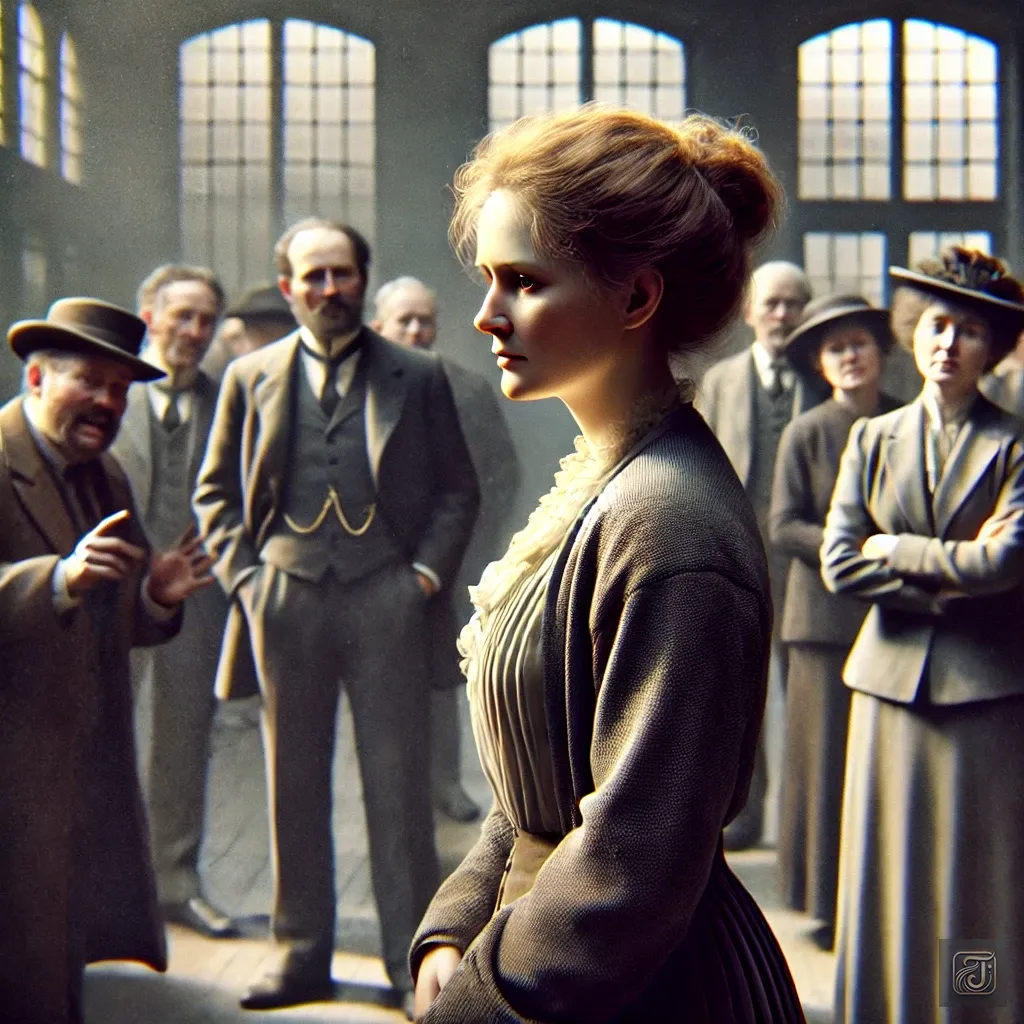
In 1911, shortly after Marie Curie was awarded the Nobel Prize in Chemistry, she became embroiled in a scandal involving her relationship with physicist Paul Langevin.
At the time, Langevin was married, and this issue sparked intense criticism from the public.

Especially in the French press and media, she was criticized as a “home-wrecking foreign woman,” which tarnished her reputation as a scientist.
As a result of this scandal, she was forced to remain isolated from the scientific community and public life for a period of time.
The storm of scandal
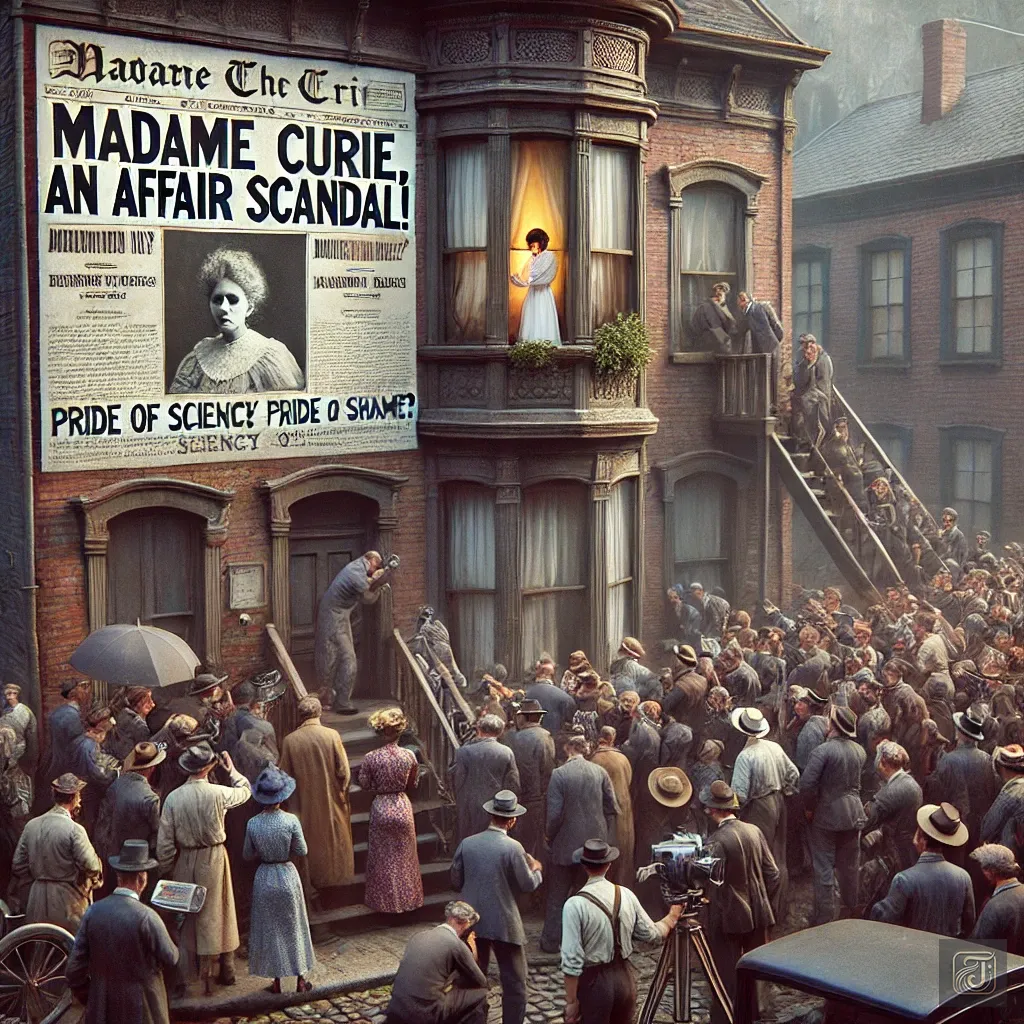
“Madame Curie, affair scandal!”
“A pride of the scientific community, or a shame?”
The newspapers printed headlines like that, and Marie couldn’t help but hear the gossip spreading through cafés and markets.
Crowds of onlookers and reporters gathered outside her home, and sometimes stones were thrown at her windows.
“Scientists who engage in immoral behavior should not be awarded the Nobel Prize!”
The criticism grew louder, and even the legitimacy of her Nobel Prize was called into question.
She looked out the window, gazing at the gray sky and the clouds fading away.
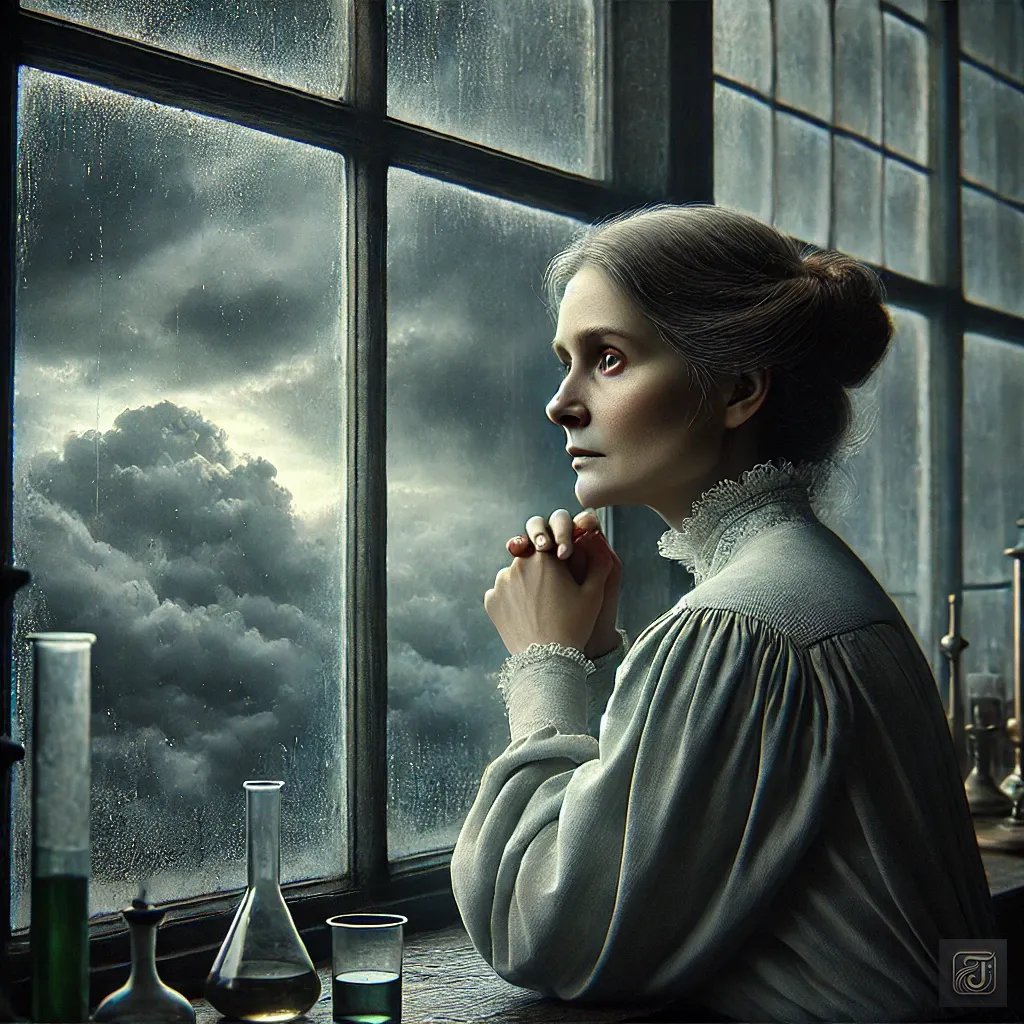
Marie Curie:
“Even if my research accomplishes something, will it vanish like these clouds?”
“Will everything be blown away by this wind…?”
She trembled as she spoke alone in the corner of the dark laboratory.
Inner Struggle
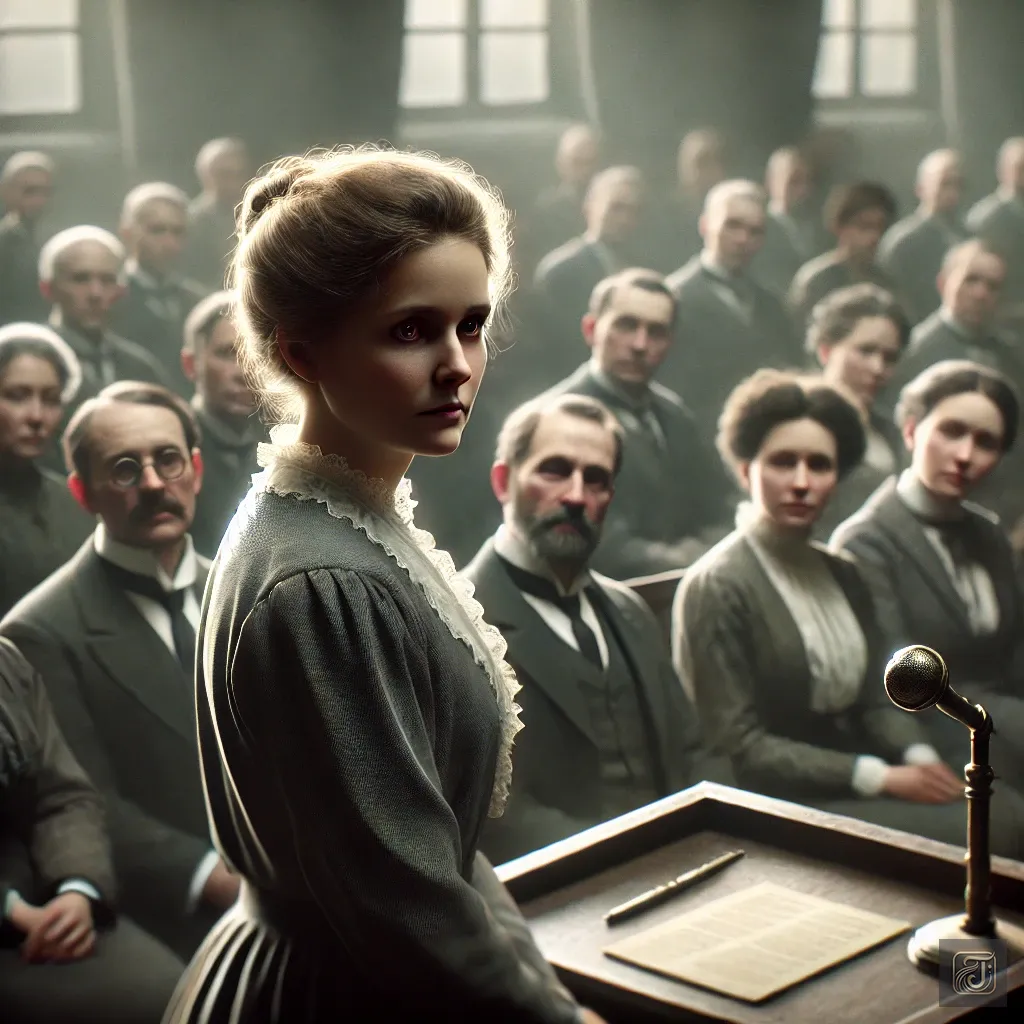
She endured not only the insults but also the distancing from friends and colleagues.
Her presentations at scientific conferences turned into a silent coldness.
One night, holding a letter from Langevin, she wrote in her diary.
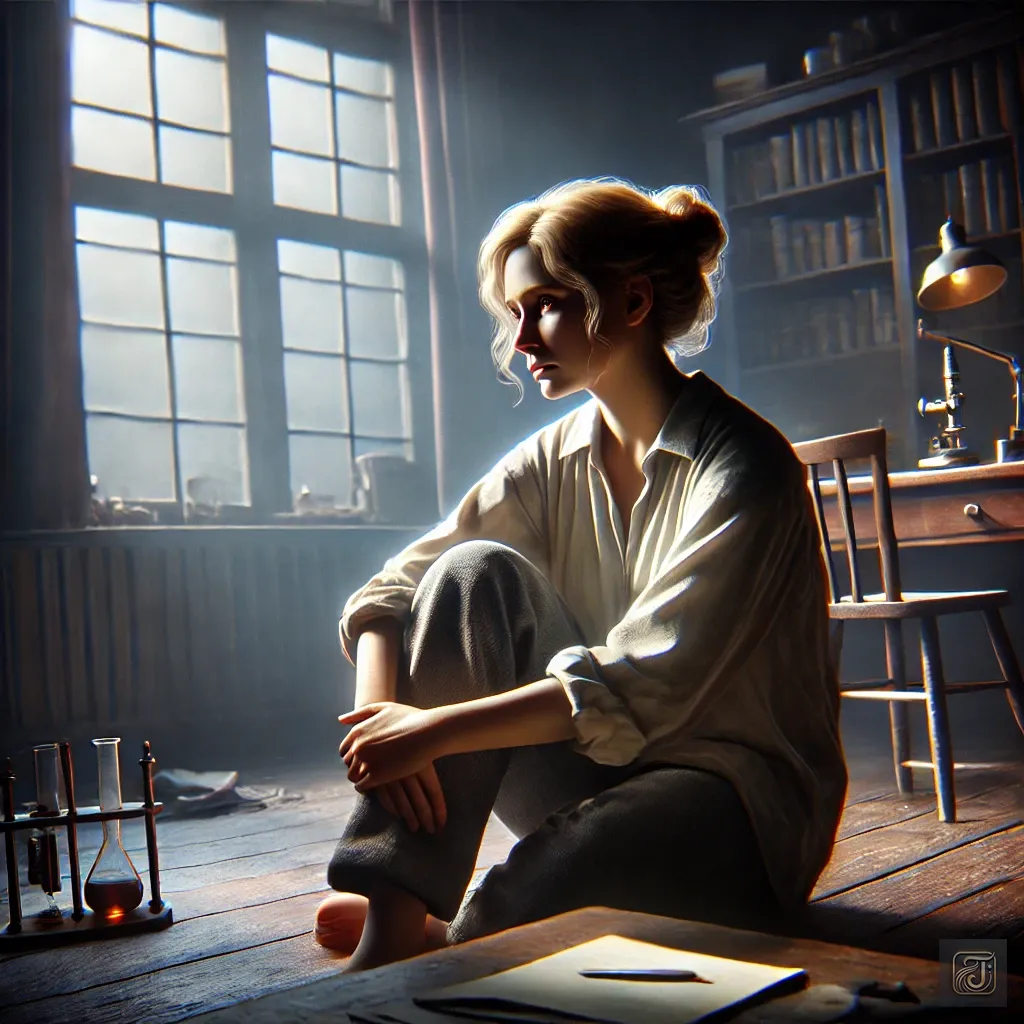
Marie Curie:
“I have dedicated everything to science.”
“Yet, my private life has brought such attacks from the world…”
“Langevin is nothing but a friend and a fellow scientist to me.”
However, once she finished writing the sentence, she put down her pen and gazed out the window.

Marie Curie:
“But… if I were a man, would I have faced such criticism?”
The prejudice against her being a woman made her painfully aware of the heavy reality she faced.
The Aftermath of the Scandal and Her Resolve
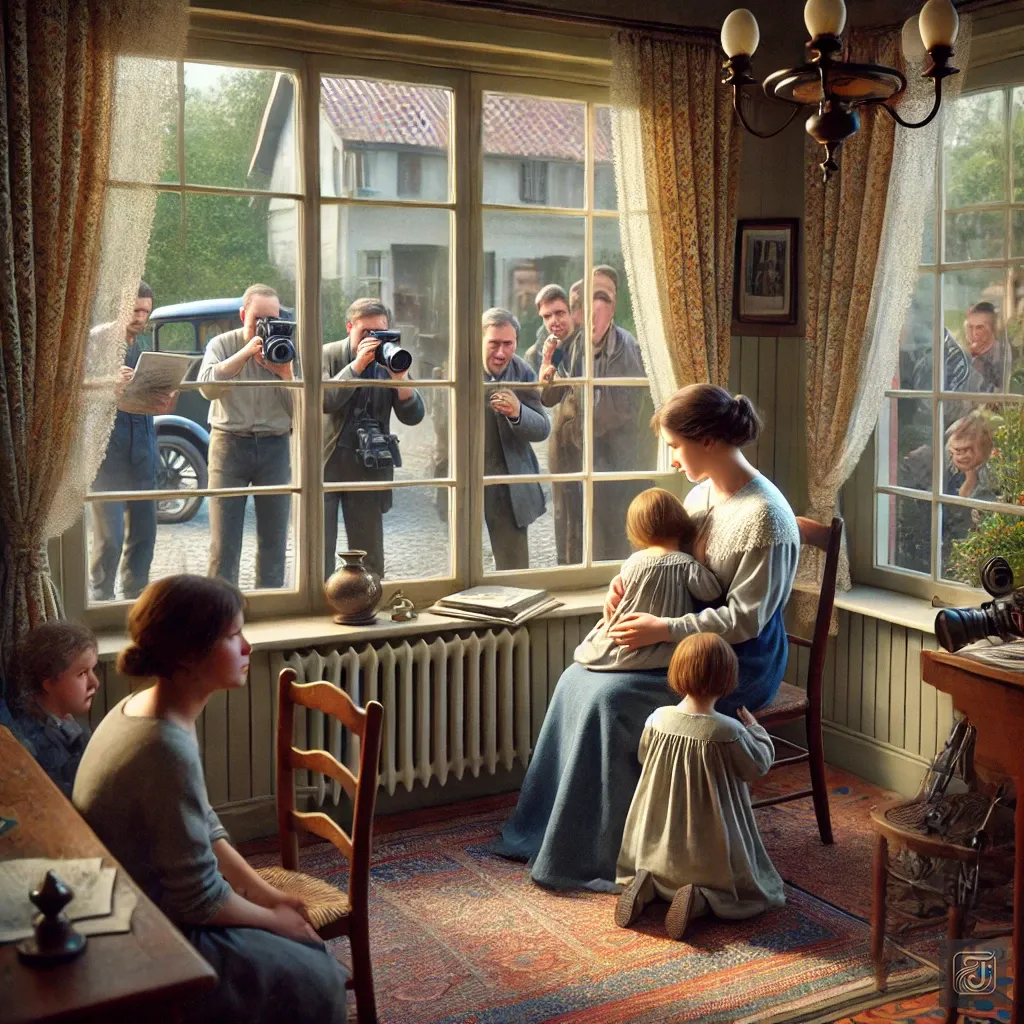
Marie temporarily left the laboratory and chose to spend quiet days with her children.
However, the critical newspaper articles never stopped, and journalists were constantly waiting in front of her house.
One day, she received a letter from the Swedish Academy of Sciences.
It was an invitation to the Nobel Prize in Chemistry award ceremony.
However, it included the following note:
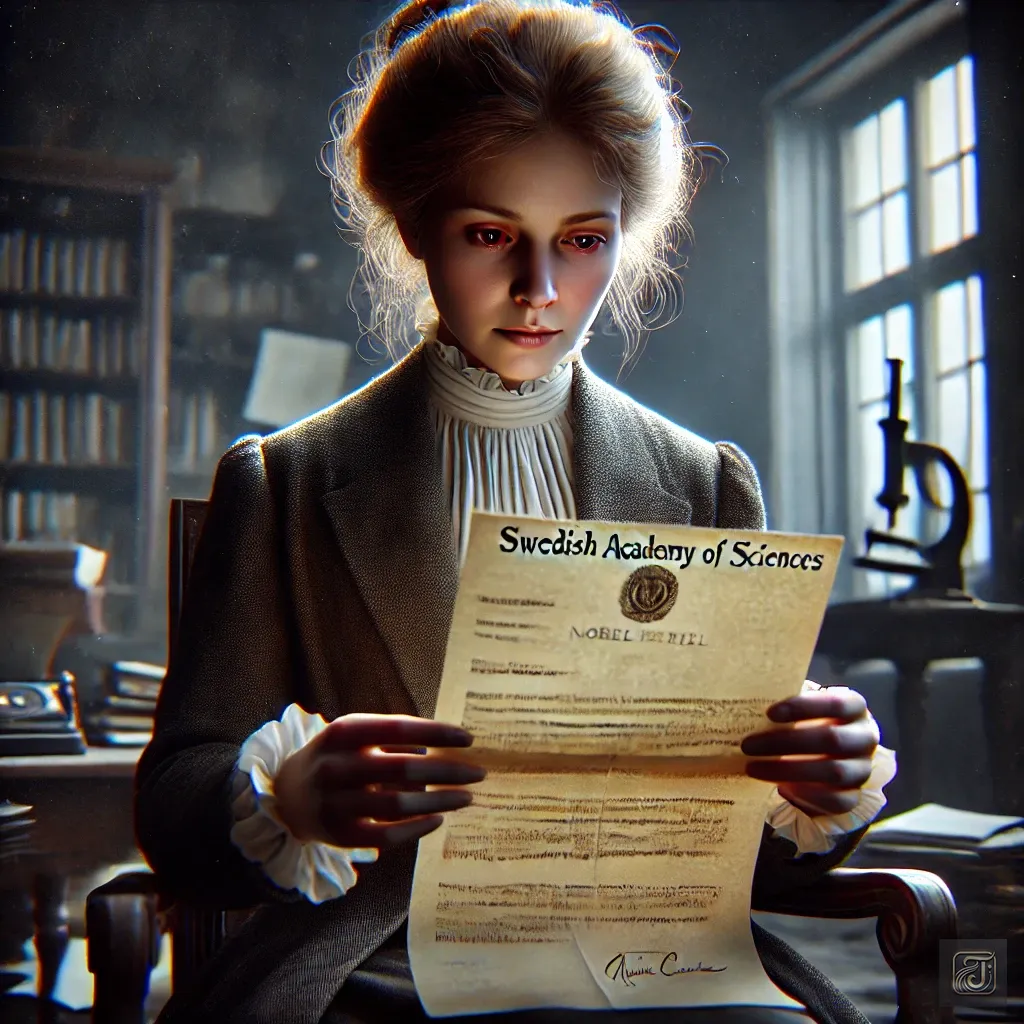
Letter:
“To avoid the scandal, we advise against your attendance at the award ceremony.”
This letter dealt another blow to the already wounded heart of Marie.
Even though she had stepped away from her research, the criticism from both society and the scientific community never ceased.
Marie’s heart seemed on the verge of being crushed.
However, there were also those who came to Marie’s defense.
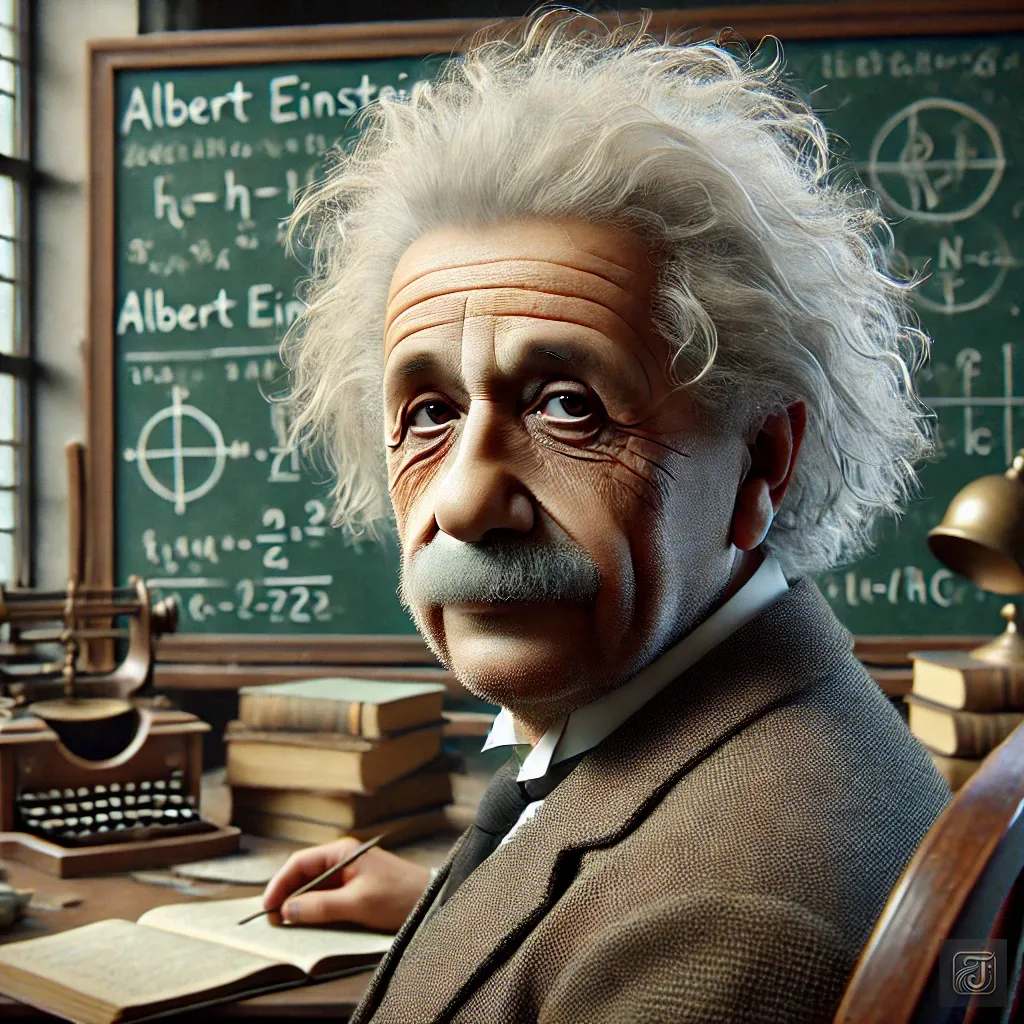
Albert Einstein
The physicist Albert Einstein sent her a letter of support.
He praised Marie’s achievements and firmly argued that she should not be criticized for personal matters.
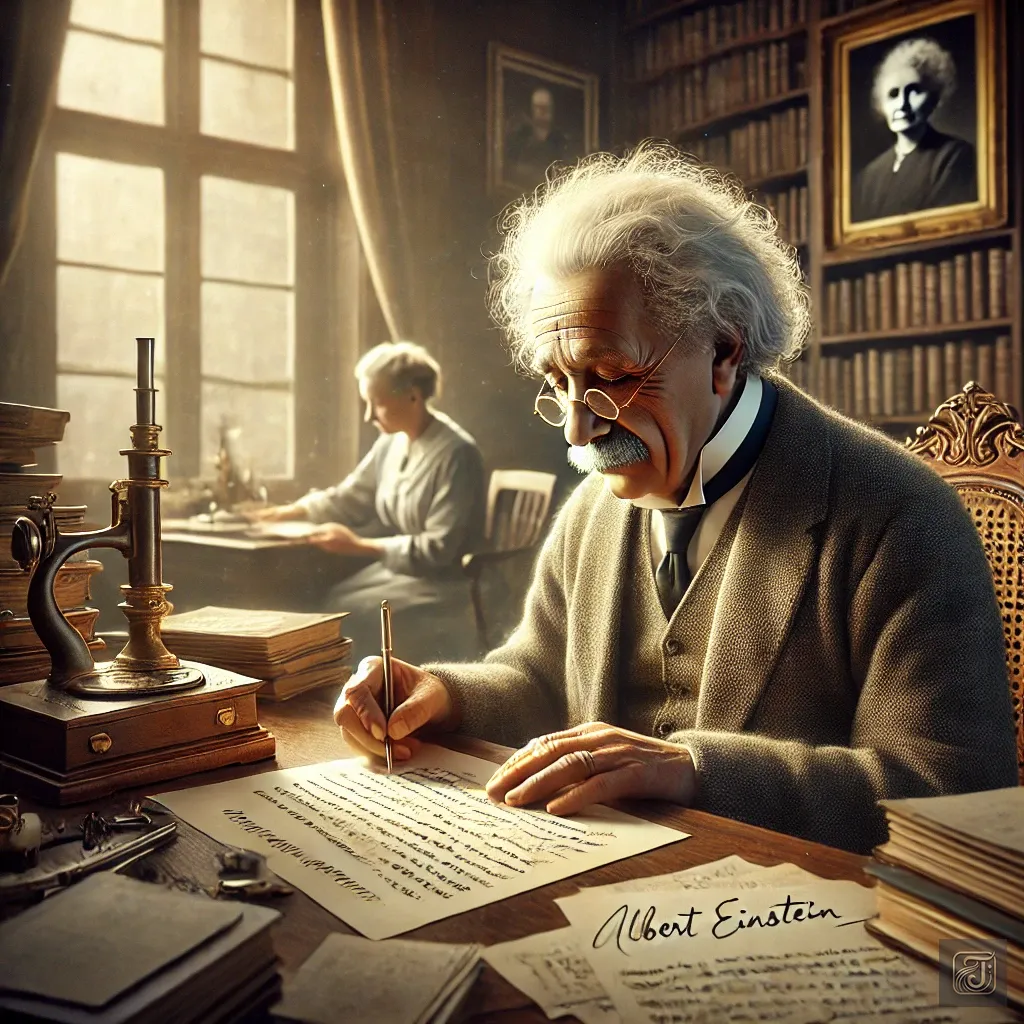
Albert Einstein:
“Dear Marie Curie,”
“Those who know how great a scientist you are understand that you should not have to endure unjust slander.”
“There is no need to listen to their criticism.”
“Your achievements cannot be damaged by any attack.”
This letter gave Marie, who had been isolated, great strength.
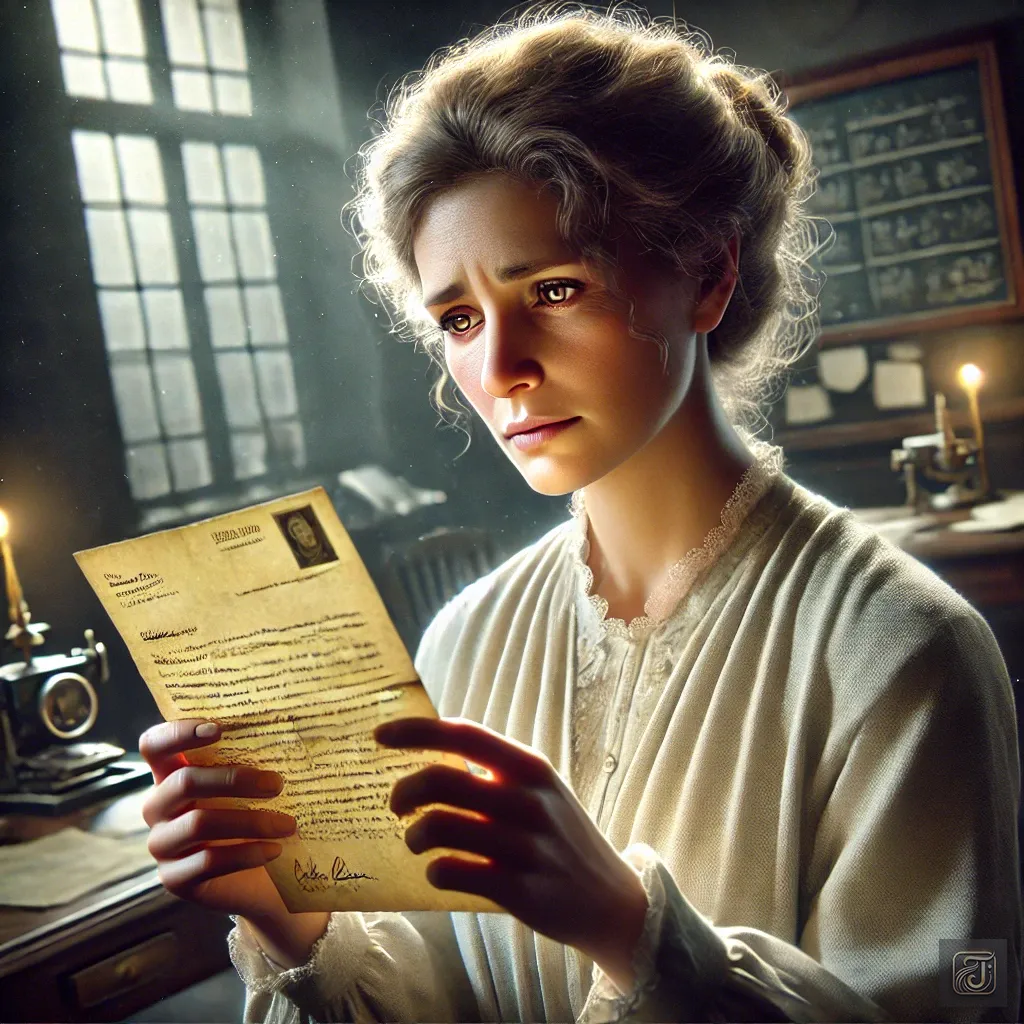
Marie Curie:
“Einstein believes in me…”
“I cannot give up.”
She clenched the letter in her hand, rallying herself.
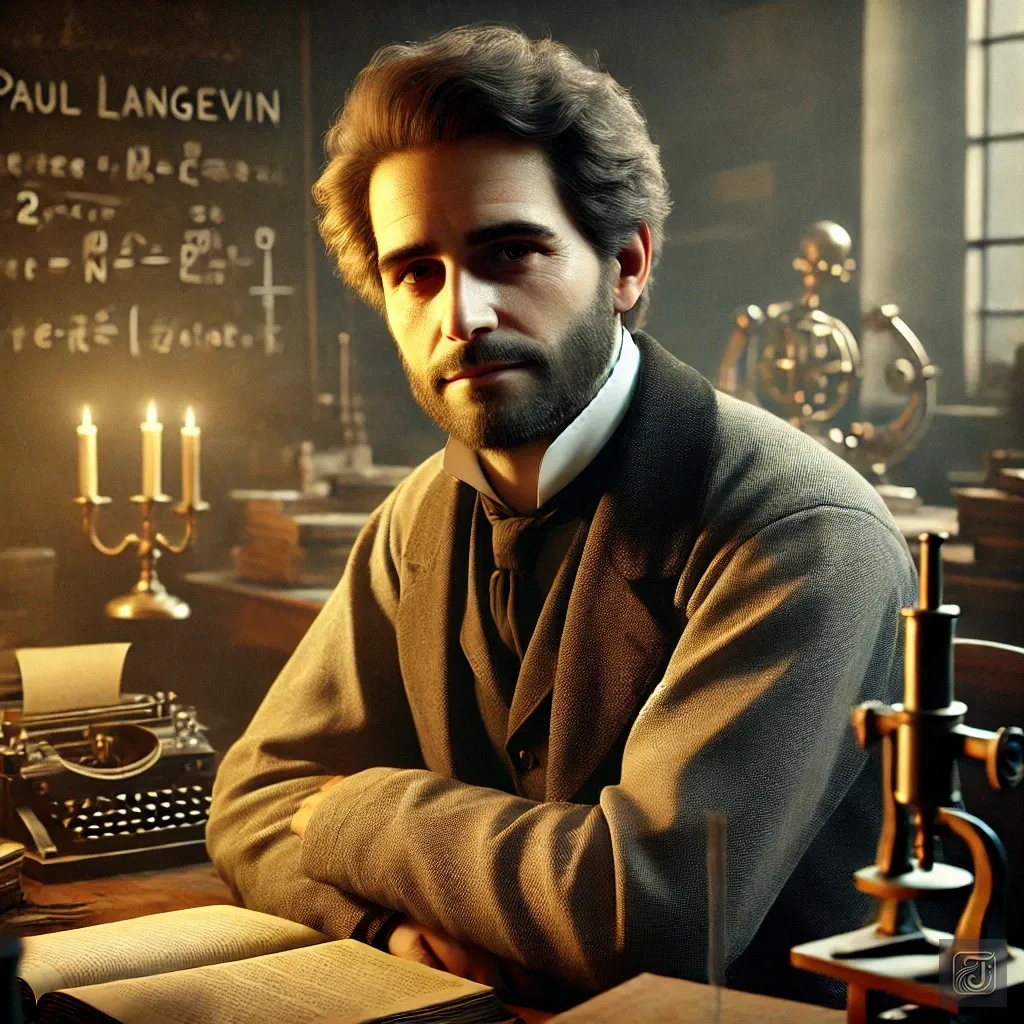
Furthermore, Paul Langevin.
He himself reassessed her achievements and invited Marie to present at academic conferences.
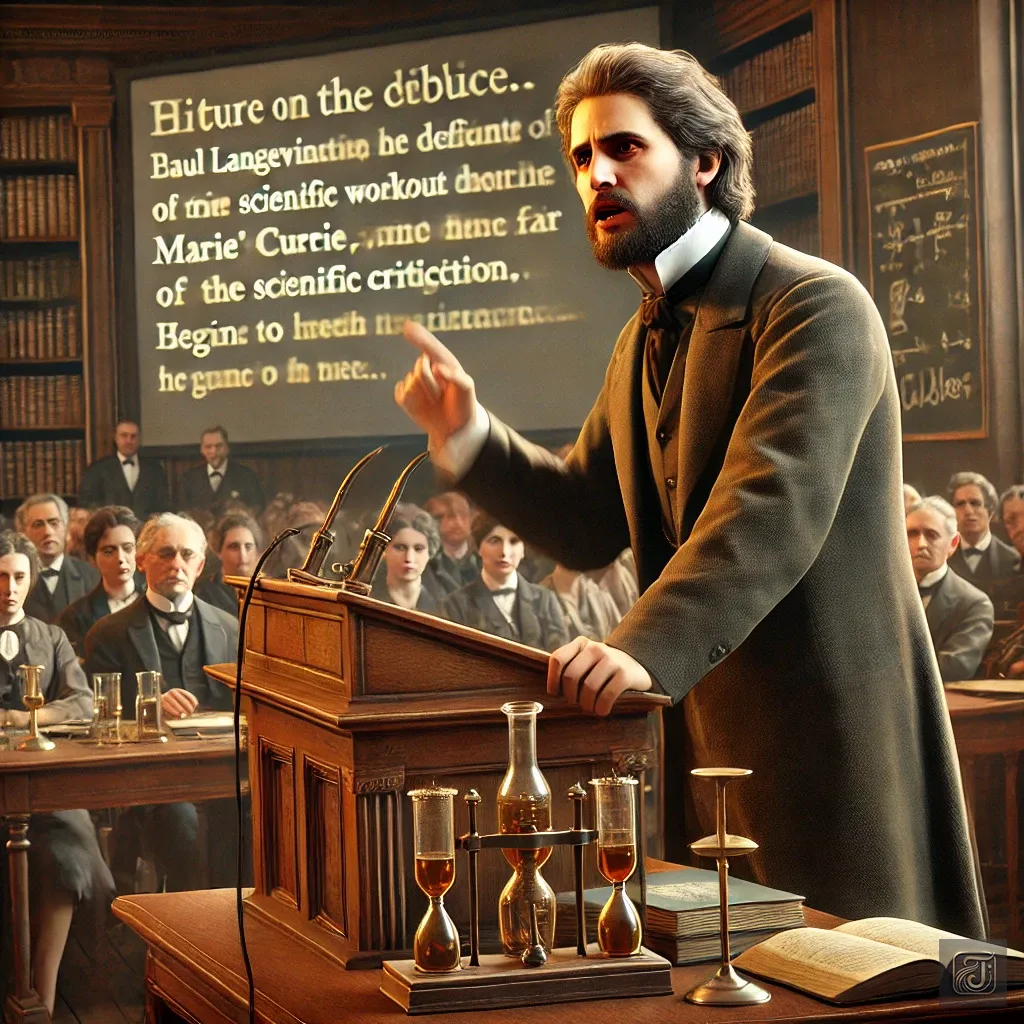
Paul Langevin:
“Science should not be a target for prejudice and slander.”
“In other words, her personal life has nothing to do with her achievements in the scientific community.”
“We must fairly evaluate her scientific accomplishments.”
Langevin’s statement became a turning point, helping to calm the criticism directed at Marie.
Their support gave Marie courage and strength.
In response to the letter from the Swedish Academy of Sciences asking her to refrain from attending the Nobel Chemistry Prize ceremony, she resolutely decided to attend the ceremony in Sweden.

Marie Curie:
“If my achievements are to be recognized, they should be judged solely from a scientific perspective.”
She boldly delivered a speech, discussing the power of science and its importance.
Her speech moved the audience, and the critical voices against her gradually faded.
After the scandal, she regained the trust of the scientific community by immersing herself once again in her research.
Supplementary Message to the Readers
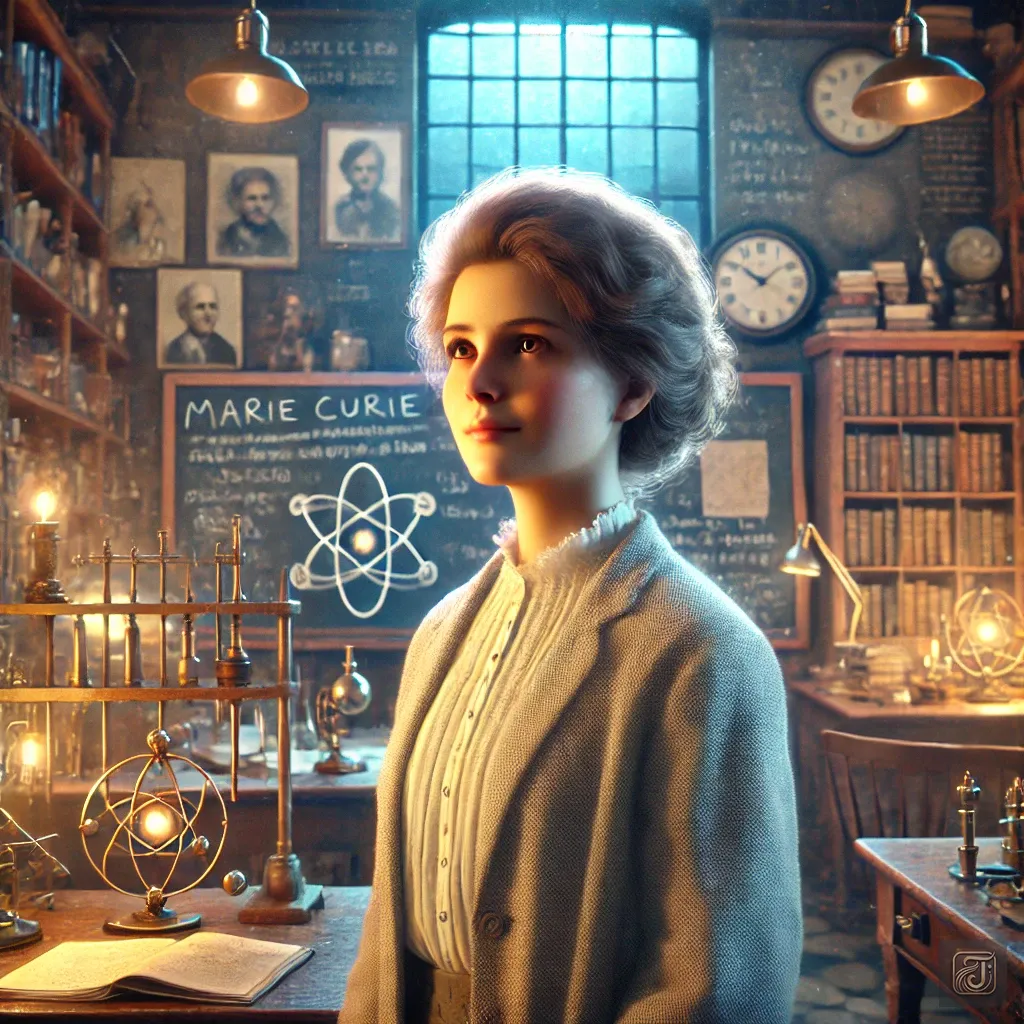
This scandal was one of the greatest challenges of Marie Curie’s life. However, with the support of her friends and colleagues, she remained steadfast in her dedication to science and her belief in its power to improve humanity.
Despite facing immense personal and professional trials, her determination to persevere in the face of adversity offers a powerful lesson for us all.
Marie Curie’s ability to remain true to her passion for science, even in the face of public scrutiny, is a testament to her strength of character.
Her resilience reminds us that challenges, no matter how overwhelming, can be overcome through courage, conviction, and the support of those who believe in us.
Her journey serves as an inspiration to all those who face obstacles in their pursuit of truth, knowledge, and equality.
Chapter 8: The Tragedy Brought by Radium
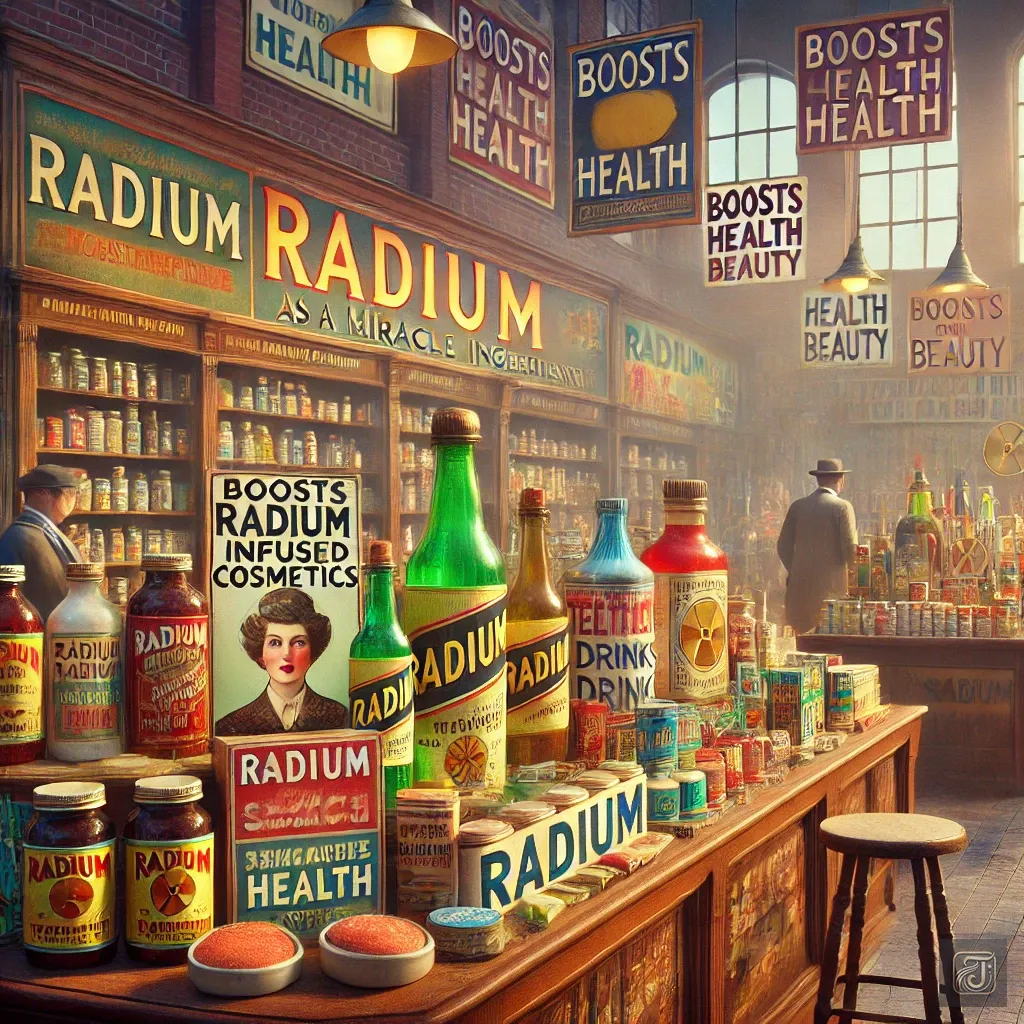
Marie Curie’s discovery of radium captured widespread public attention.
However, this led to an unexpected situation where radium was commercialized before the proper understanding of its risks could catch up.
The popularity of radium-infused products.
In the early 20th century, rumors spread that radium’s radiation could “revitalize life,” leading to a surge of radium-infused products hitting the market.
Radium-infused cosmetics, toothpaste, health drinks, and even radium-infused shoes were sold, all marketed as being beneficial for health and beauty.

“Radium cream for glowing skin!”
This advertisement was posted all over the streets, and wealthy people eagerly competed to purchase it.
Concerns and Conflict
Marie was troubled by the fact that the public misunderstood the properties of radium.
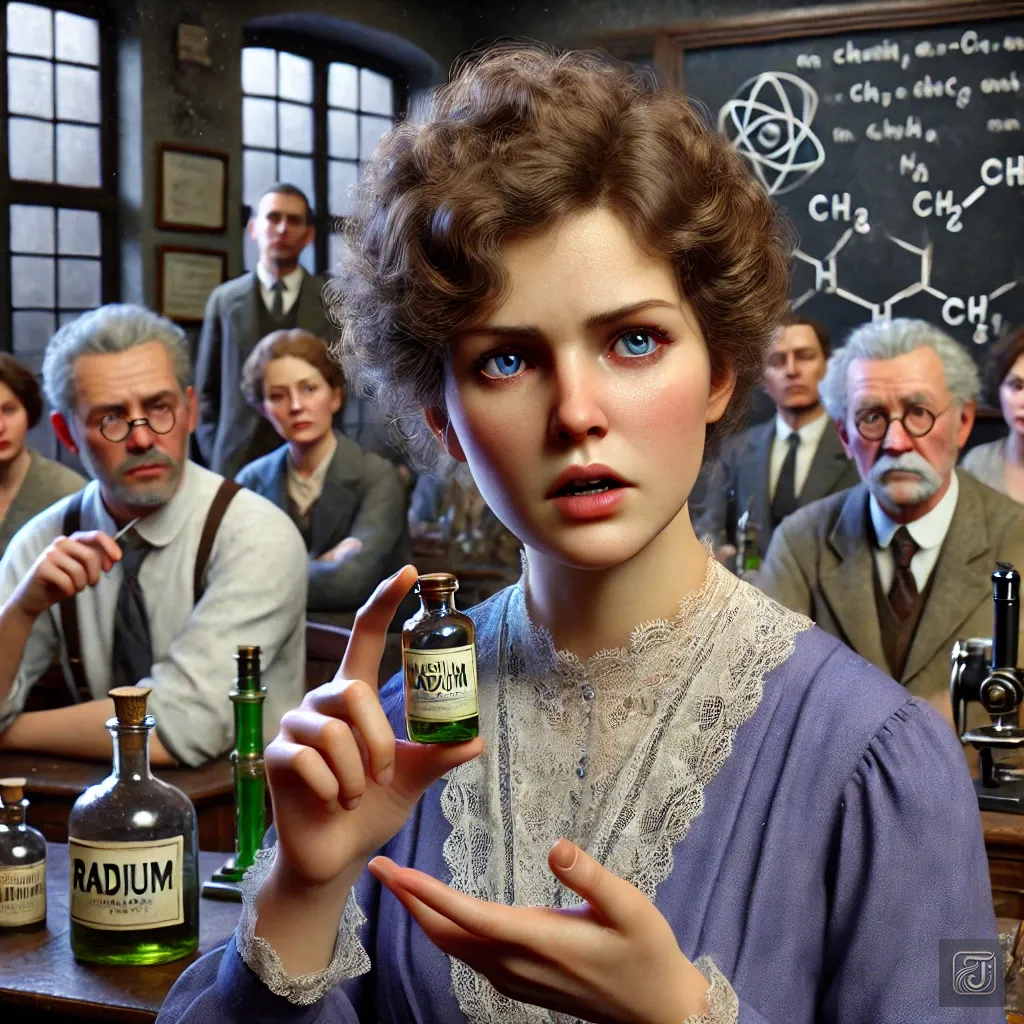
Marie Curie:
“Radium is indeed a remarkable scientific discovery, but using it so recklessly like this is dangerous.”
She appealed to her fellow scientists, but the commercialization of radium had already gained momentum, making it difficult to stop.
One day, a wealthy gentleman who was a regular consumer of radium-infused beverages visited her.
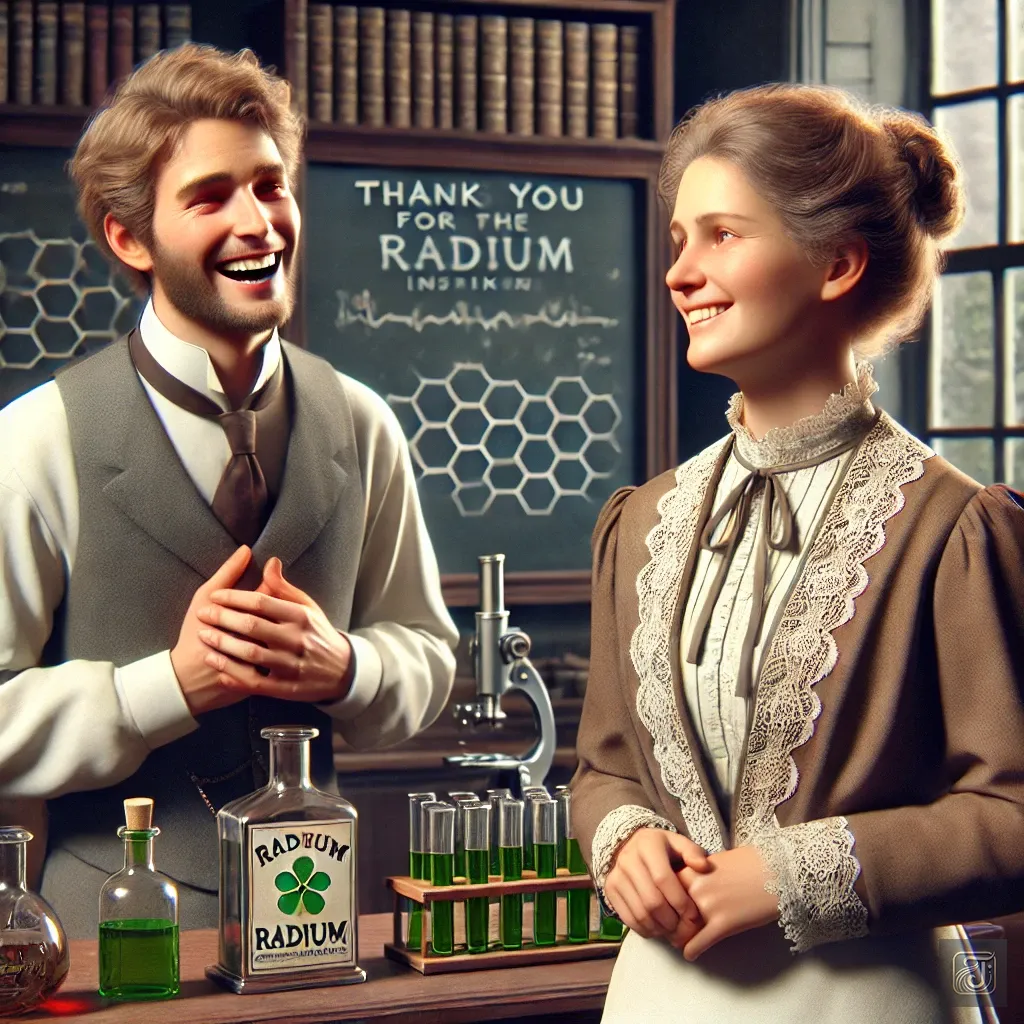
Consumer:
“Madam Curie, radium has restored my vitality!”
“I am truly grateful.”
In response to his delighted words, Marie answered with a complex expression.
Marie Curie:
“Radium should be used for the right purposes.”
“There is still so much we don’t know about its effects…”
Despite her warnings, people at the time continued to praise radium as a “miracle element.”
The beginning of the tragedy
However, as time passed, people who had been using radium-infused products began to suffer from health issues.
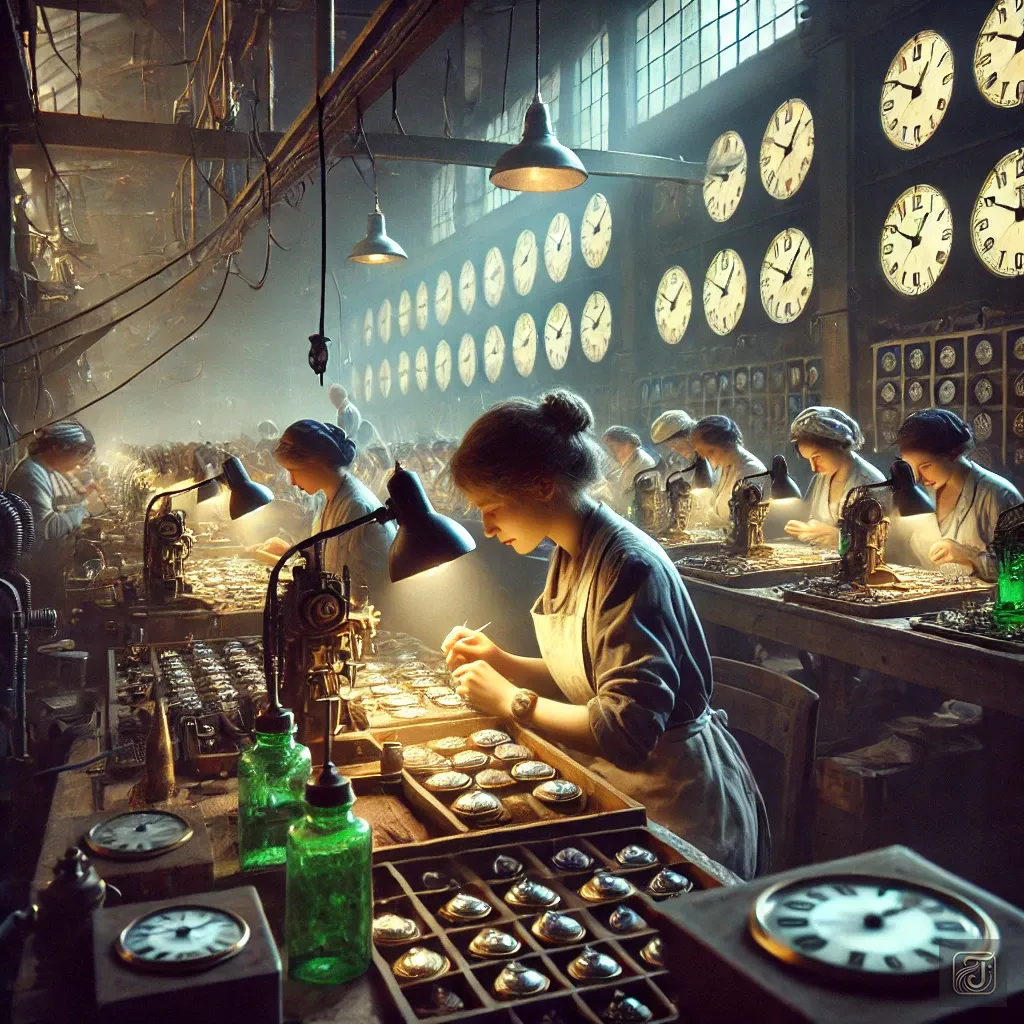
Particularly, it was the women workers in the watch factories, known as the “Radium Girls,” who were affected.
During World War I, there was a large demand for luminous dial watches, which could be read in the dark.
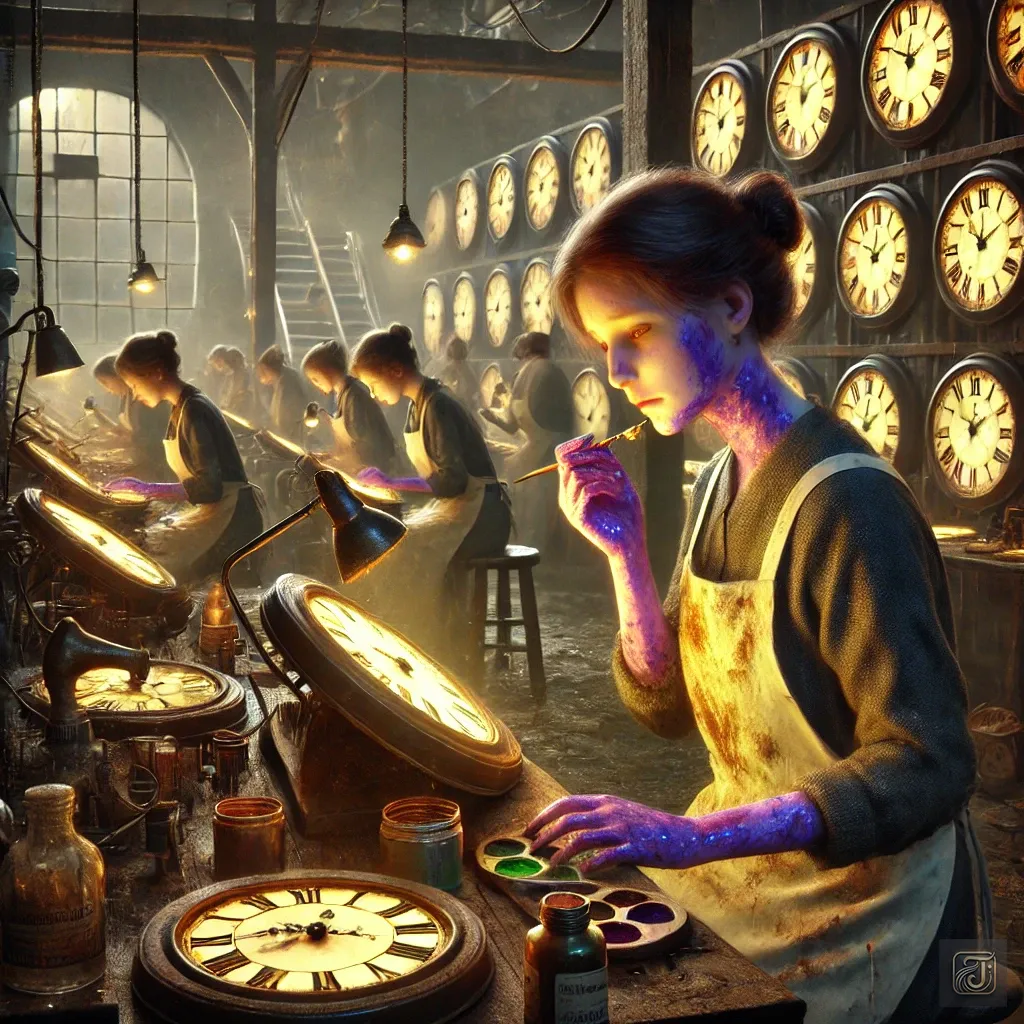
In the process of painting the dials of the watches, the workers repeatedly used their mouths to shape the brushes.
As a result, they suffered from severe radiation sickness.
Many of these women were diagnosed with “radium poisoning,” which caused their teeth and jawbones to decay, as well as severe anemia and fractures.
When Marie heard this news, her heart ached deeply.
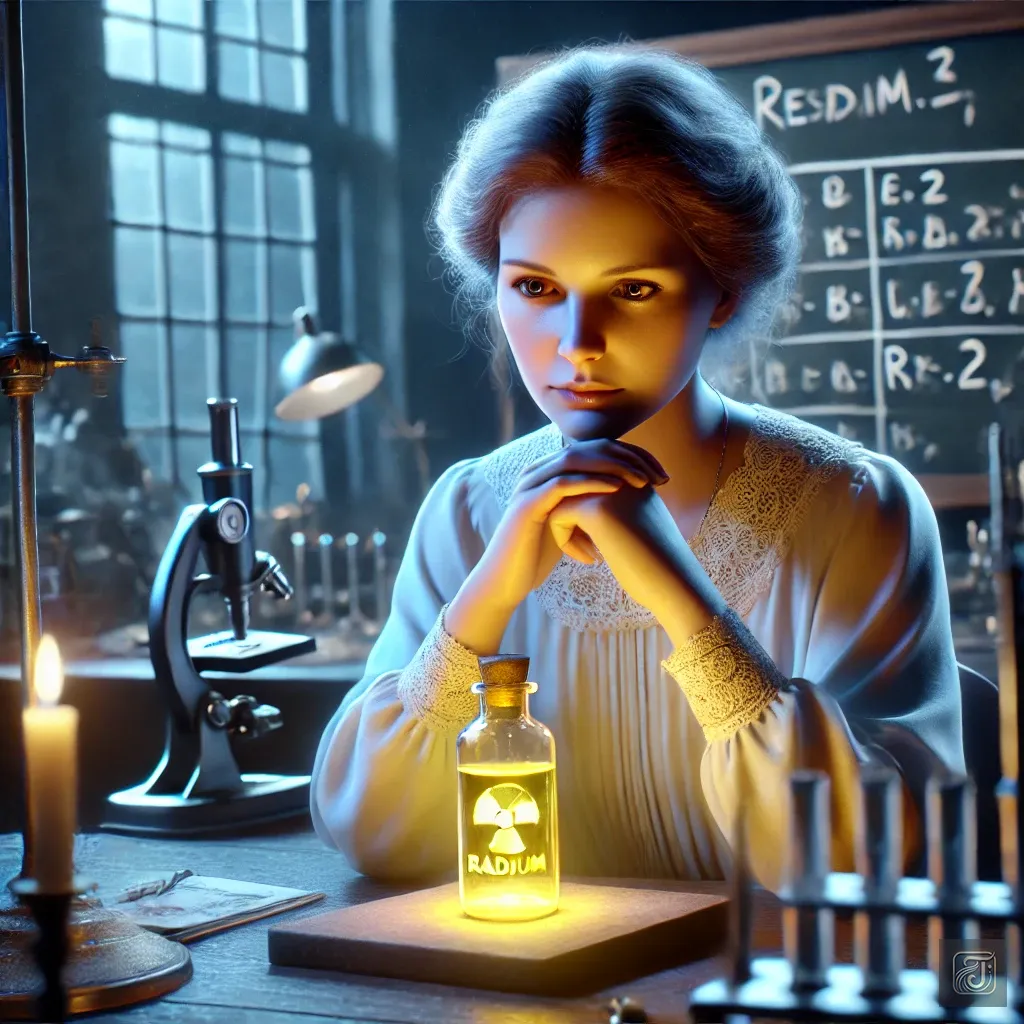
Marie Curie:
“We have a duty to use the power of this remarkable element correctly…”
She believed in the potential of radium, but it pained her to see it being used incorrectly.
The Complaint from the Radium Girls
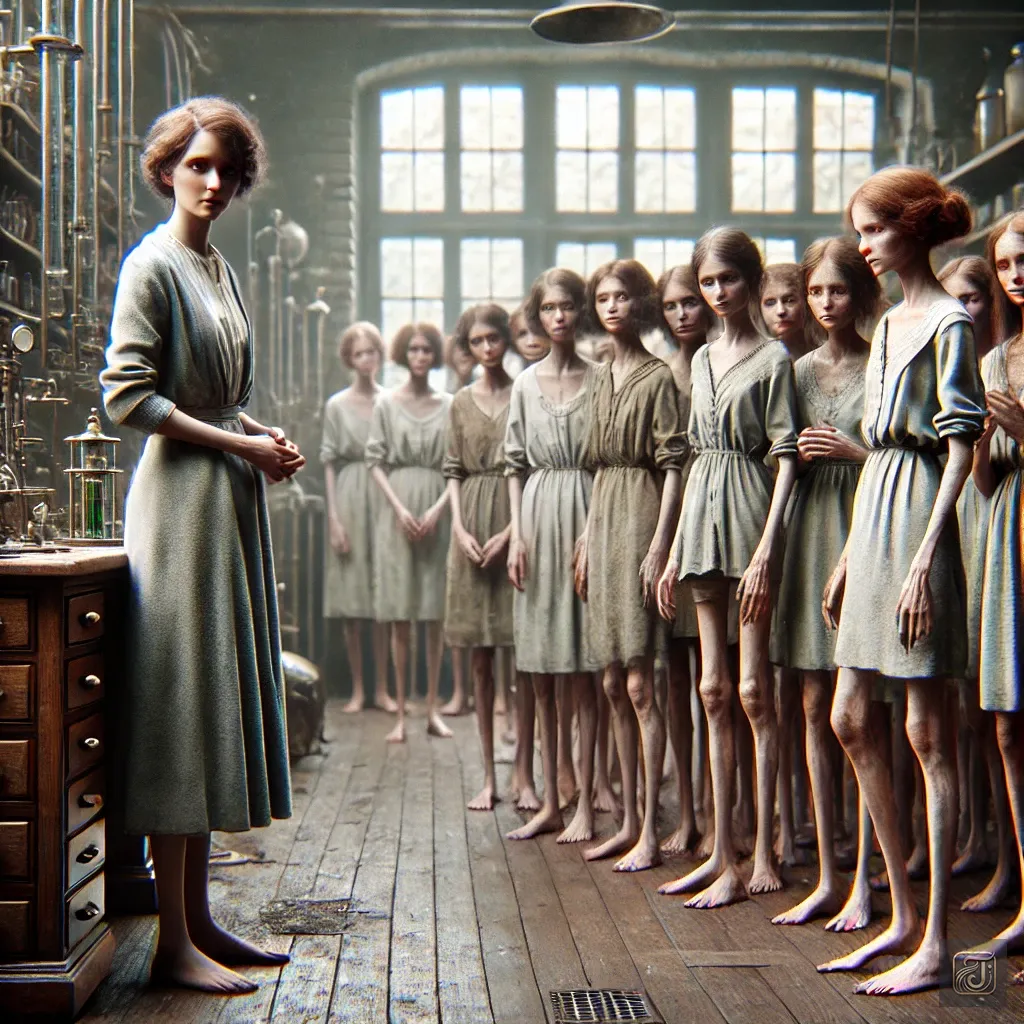
One day, a few young women visited Marie’s laboratory.
They were the Radium Girls.
One of the women, trembling, spoke up.

Radium Girls:
“Madam Curie, we believed that radium was a miraculous substance.”
“But now, it feels like a curse that takes lives…”
“What should we do?”
Marie felt her heart tighten as she looked at their emaciated bodies and the deformed fingers that had begun to show signs of bone damage.
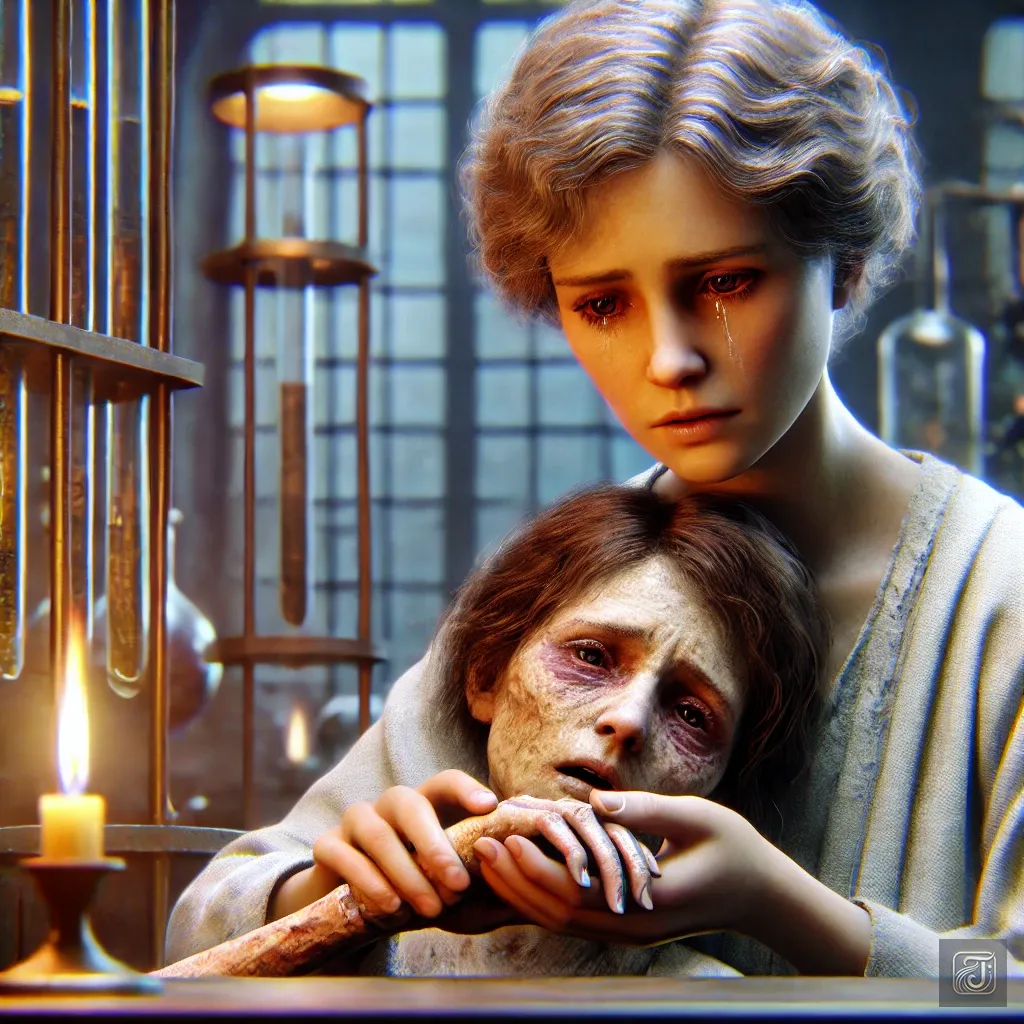
Marie Curie:
“This light was meant to be a light that saves lives, but now it has become a curse that takes them away.”
“If the light I created is casting darkness into people’s hearts, then I must guide it back to the right place…”
She made this vow in her heart.
Tears in her eyes, she tightly held their hands.
Marie Curie:
“I had no idea you were suffering so much… I’m truly sorry.”
“As a scientist, it is my duty to make this fact known and warn others about the dangers of radium.”
Her voice trembled, filled with sorrow.
And with those words, Marie felt a deep urgency to make the dangers of radium known to the public.
Commitment to Educational Efforts
From that day on, Marie began her efforts to educate the public about the safe use of radium.
She continued to speak at conferences and give lectures, stressing that “radium must be handled with great care and is by no means a universal cure.”
She dedicated herself to raising awareness about the dangers of misusing such a powerful discovery.
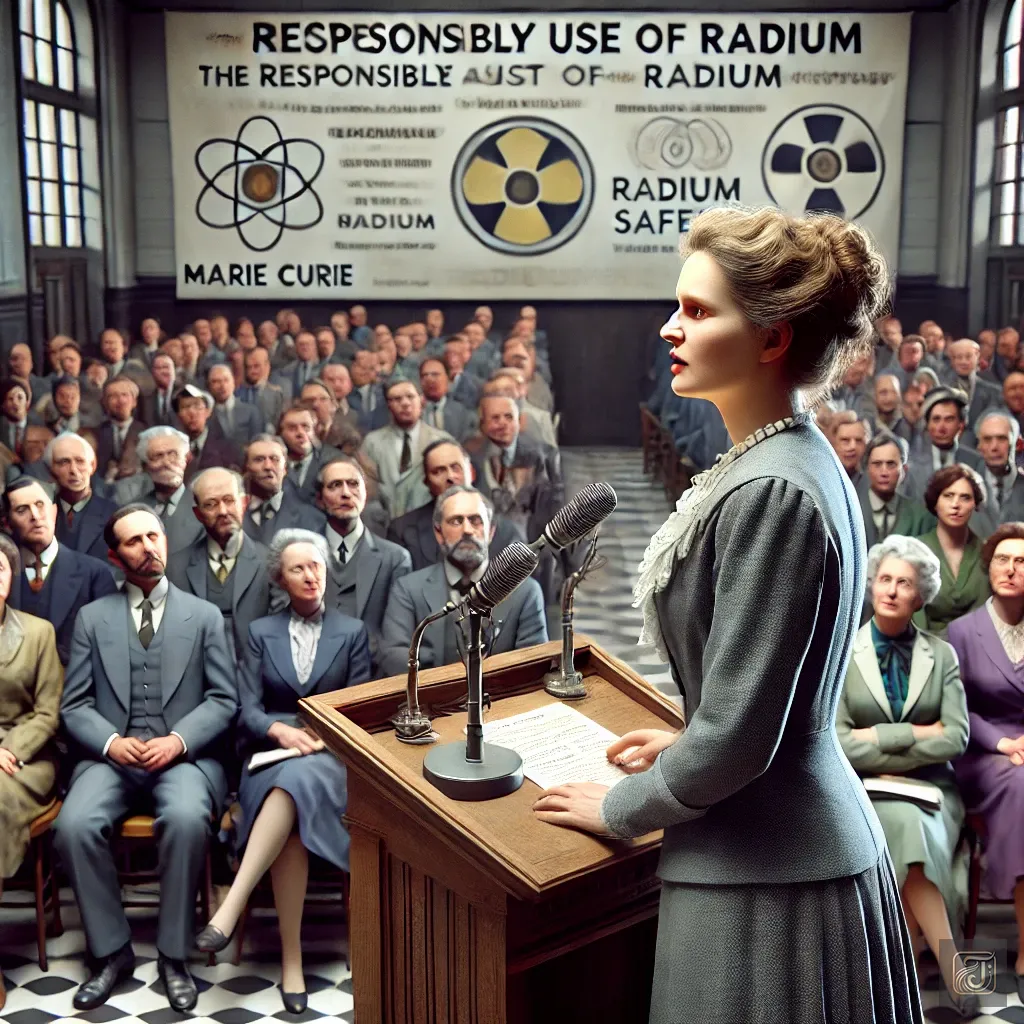
Marie Curie:
“Science has both potential and limitations. “
“And misusing it without understanding those limitations can lead to tragedy.”
Her words were filled with unwavering determination.
The words Marie spoke at a lecture left a profound impression on the audience.
The lawsuit of the Radium Girls
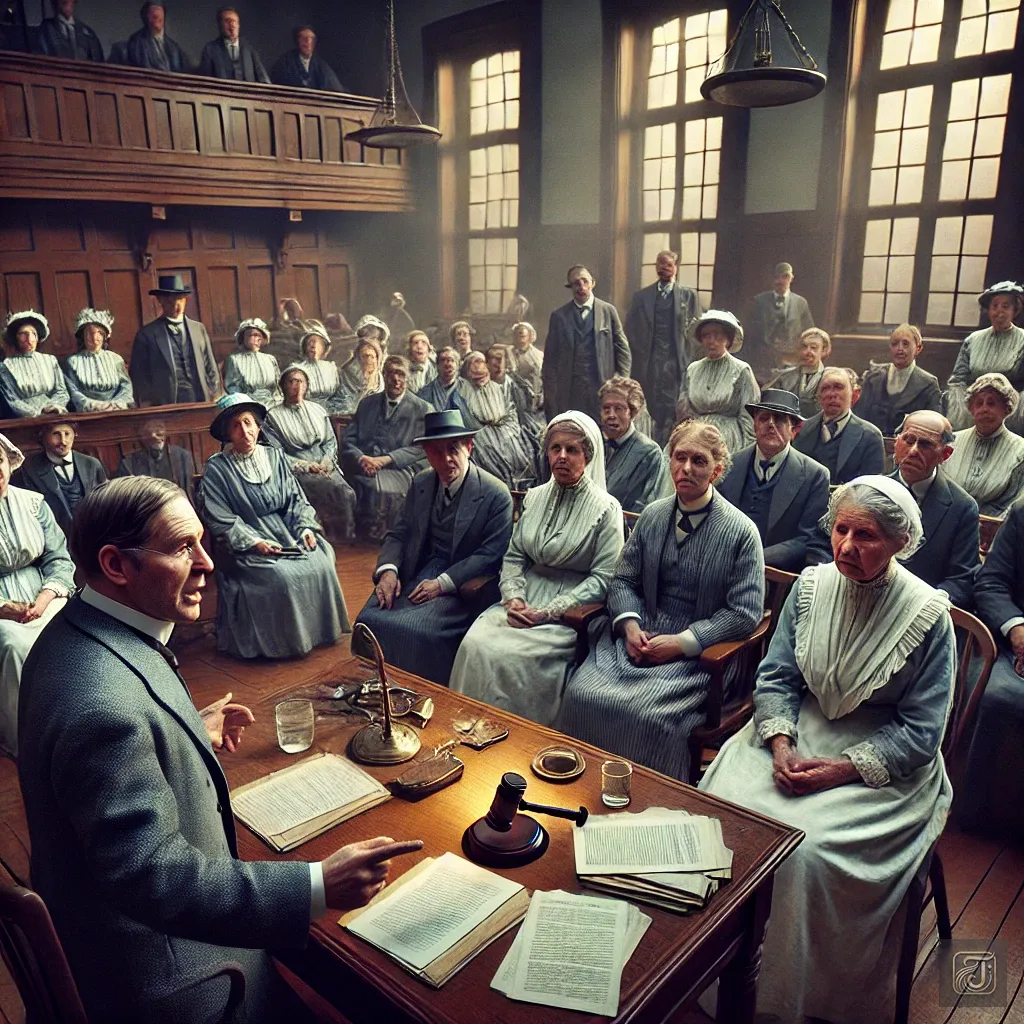
The women who had suffered from the effects of radium filed a lawsuit against the company that produced the radium paint, marking the first-ever labor lawsuit based on workplace injuries.
The trial garnered significant attention, with their lawyer arguing that the company had failed to warn the workers about the dangers of radiation, despite knowing about the risks involved.
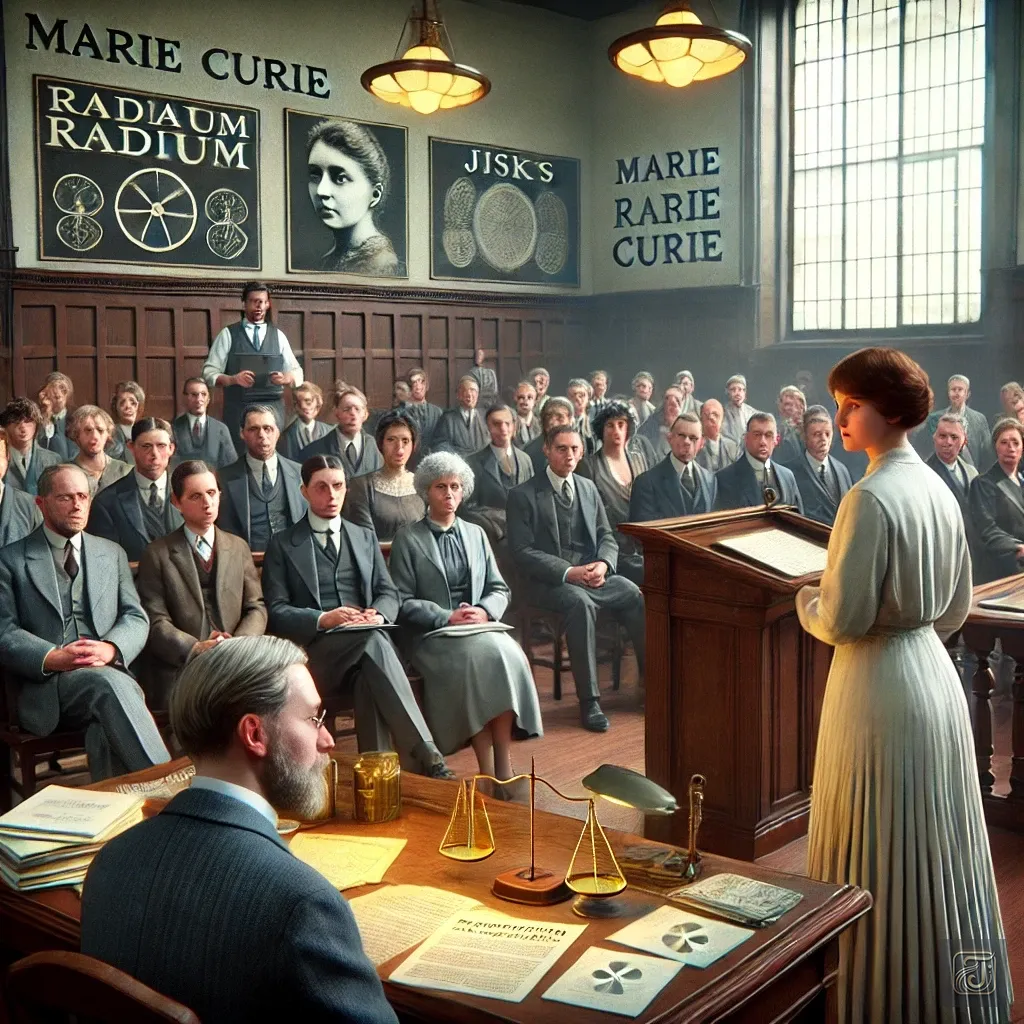
During the trial, Marie Curie’s research was presented as evidence, and the scientific basis for the dangers of radiation was made clear.
She also publicly stated that “radium should be used under proper management and with knowledge,” emphasizing the importance of handling such substances safely.
The Outcome and Impact of the Lawsuit
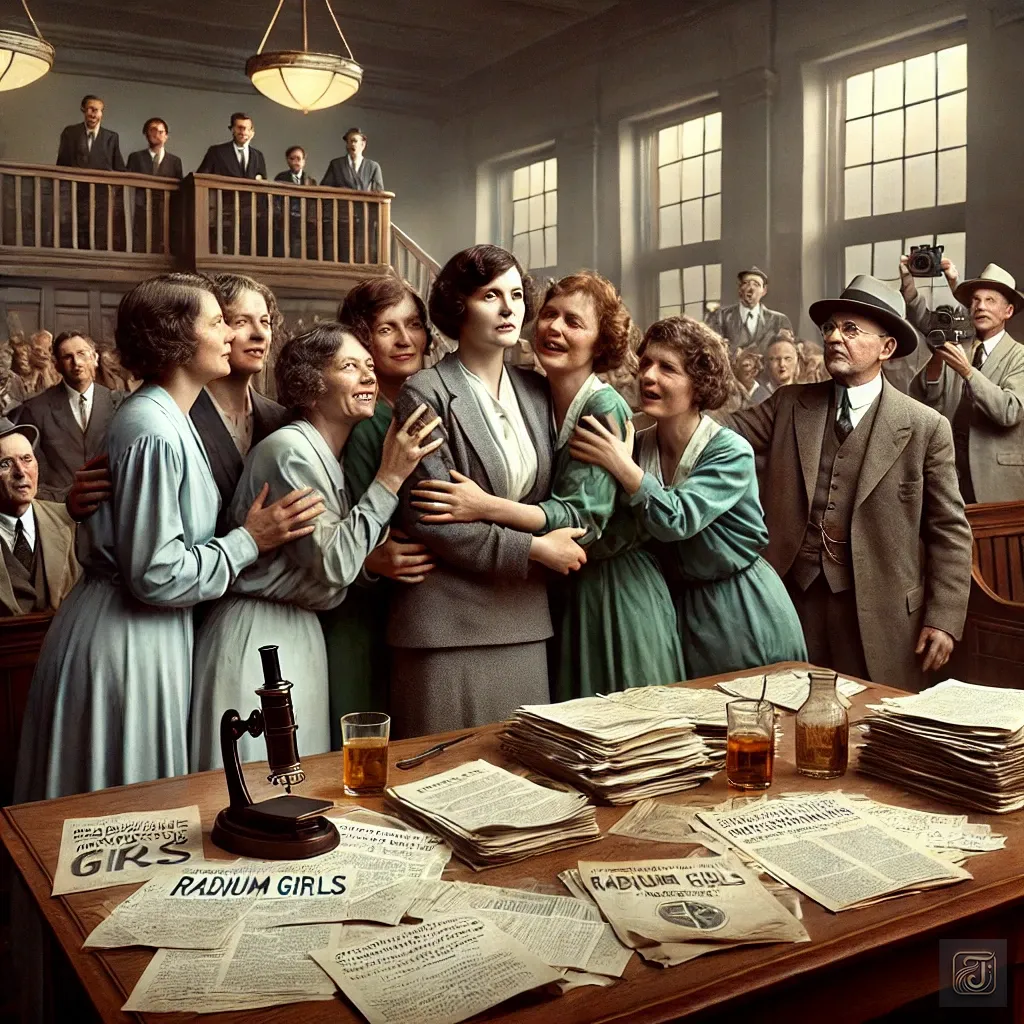
Ultimately, in 1928, the lawsuit ended in favor of the Radium Girls.
This ruling led to amendments in labor laws, mandating companies to implement safety standards, and it became a turning point for stricter regulations concerning the handling of radioactive materials.
After the trial, one of the plaintiffs spoke out.
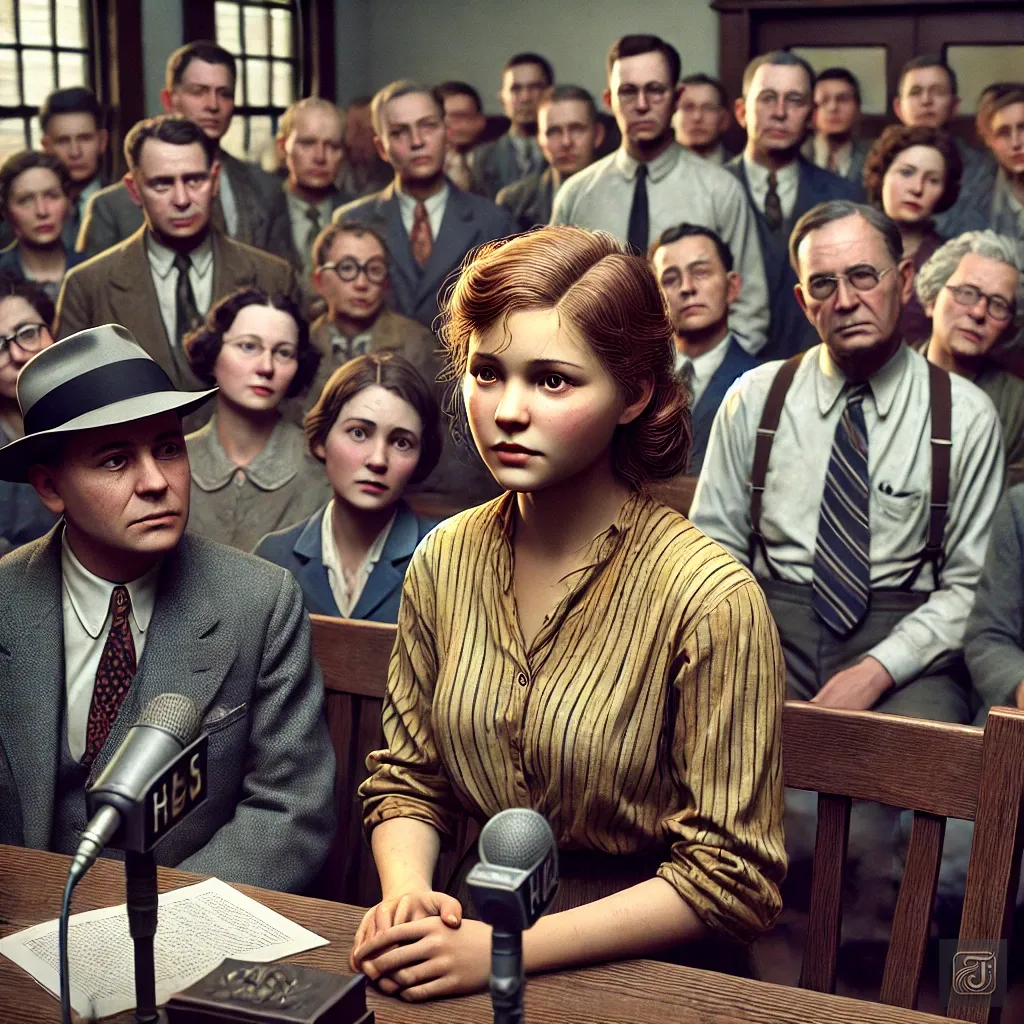
plaintiff:
“Our fight was not just for revenge, but also for the future.”
“We didn’t want anyone else to suffer the same harm that we endured.”
Marie Curie’s research and warnings became a key pillar supporting their claims during the trial, proving that scientific knowledge could serve to protect the rights of workers.
Following the trial, Marie continued to raise awareness about the safe handling of radium.
Her lectures and papers influenced scientists and policymakers, contributing to the establishment of radiation protection standards in the years that followed.
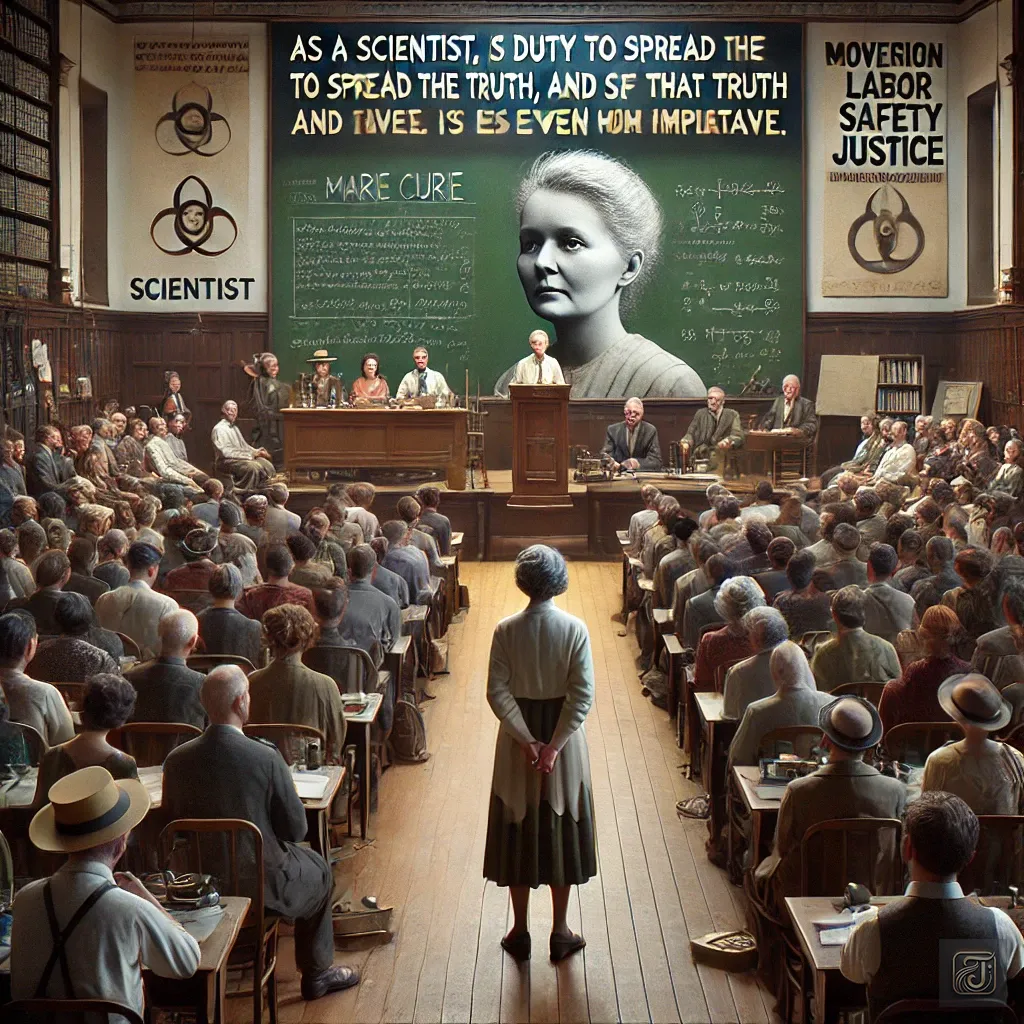
Marie Curie:
“My duty as a scientist is to spread the truth.”
“And if that truth can protect lives, then all the more reason to do so.”
This series of events symbolizes how Marie Curie’s influence as a scientist extended beyond the realm of science, reaching into social justice and improvements in labor conditions.
Chapter 9: War and Contribution
When World War I broke out, Marie was searching for ways she could contribute as a scientist.
What she introduced was the mobile X-ray unit, “Petit-Curie.”

The mobile X-ray unit (Petit-Curie)
This device used X-rays, a technology that “captures images of the inside of the body,” to precisely identify fractures in bones or damage to internal organs.
It also made it easier to detect bullets remaining inside the body.
By utilizing this technology, doctors were able to provide more accurate treatments, significantly increasing the chances of saving lives.
As a result, soldiers were able to receive appropriate care, saving many lives on the battlefield.
Meeting the Soldier
One day, Marie was working near the front lines in northern France.
There were particularly many casualties that day, and she was operating the X-ray machine almost without rest.
A young soldier was brought in on a blood-soaked stretcher.
His leg was severely damaged, and the doctor judged that amputation was necessary.

Marie Curie:
“Stay strong, you’ll be fine.”
Marie gently spoke to the soldier and used the X-ray to precisely locate the damaged area.
Based on the images, the doctors were able to proceed with the surgery and save his life.
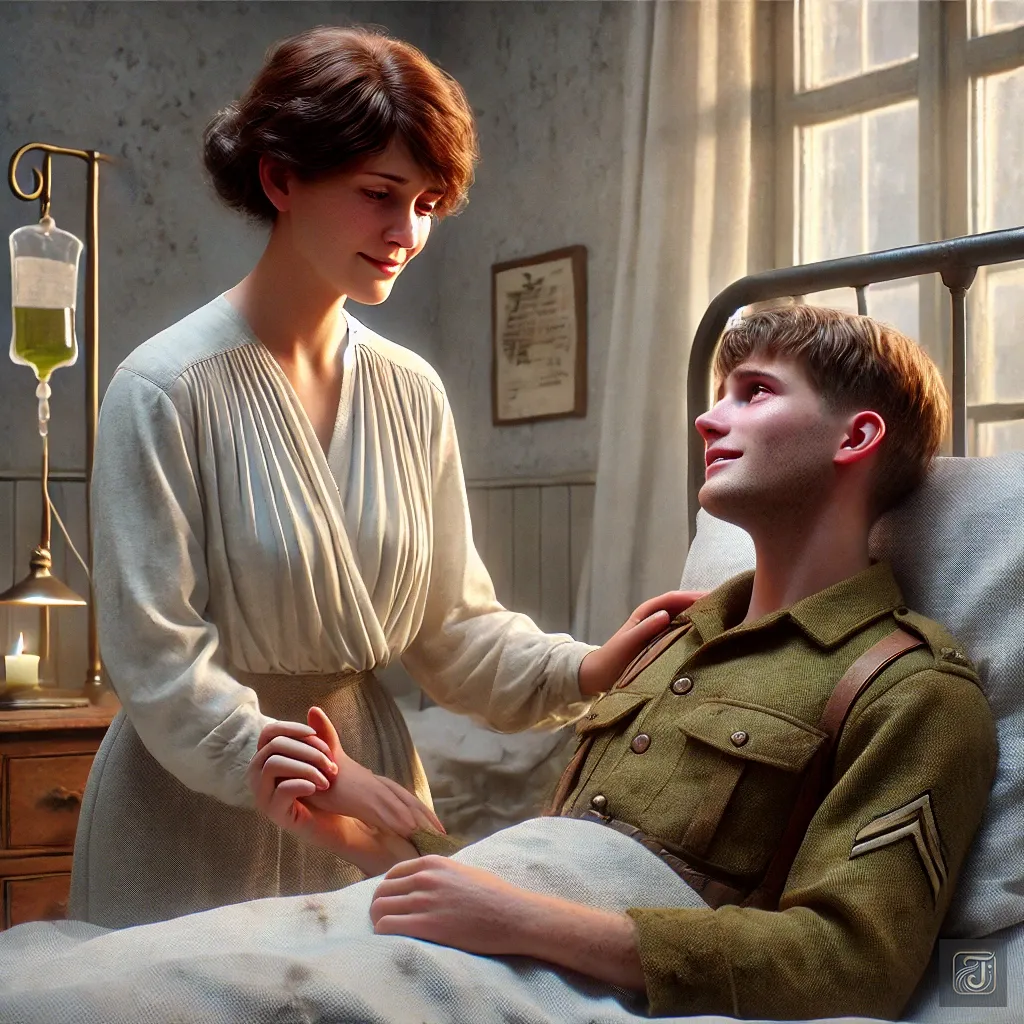
The next day, Marie visited his hospital room and sat by his bedside.
soldier:
“Thank you, Madame Curie… I can return to my family now.”
He grasped Marie’s hand with trembling fingers, tears welling in his eyes.
Marie Curie:
“It is thanks to your own strength that you are able to return alive.”
At Mari’s words, he smiled in relief.
Family Interaction
A few weeks later, the soldier’s family visited Marie.
The young soldier’s mother took her hand and, crying, expressed her gratitude.

Soldier’s mother:
“If it weren’t for you, my son wouldn’t have come back.
Truly, truly, thank you…”
Marie Curie:
“What I did is only what a scientist should do,”
Marie replied with a smile.
However, there was deep fatigue in her eyes.
She was caught between the joy of saving one life and the helplessness she felt at the countless lives lost on the battlefield.
Nighttime Soliloquy
That night, Marie sat alone in a corner of the mobile unit, writing in her journal.
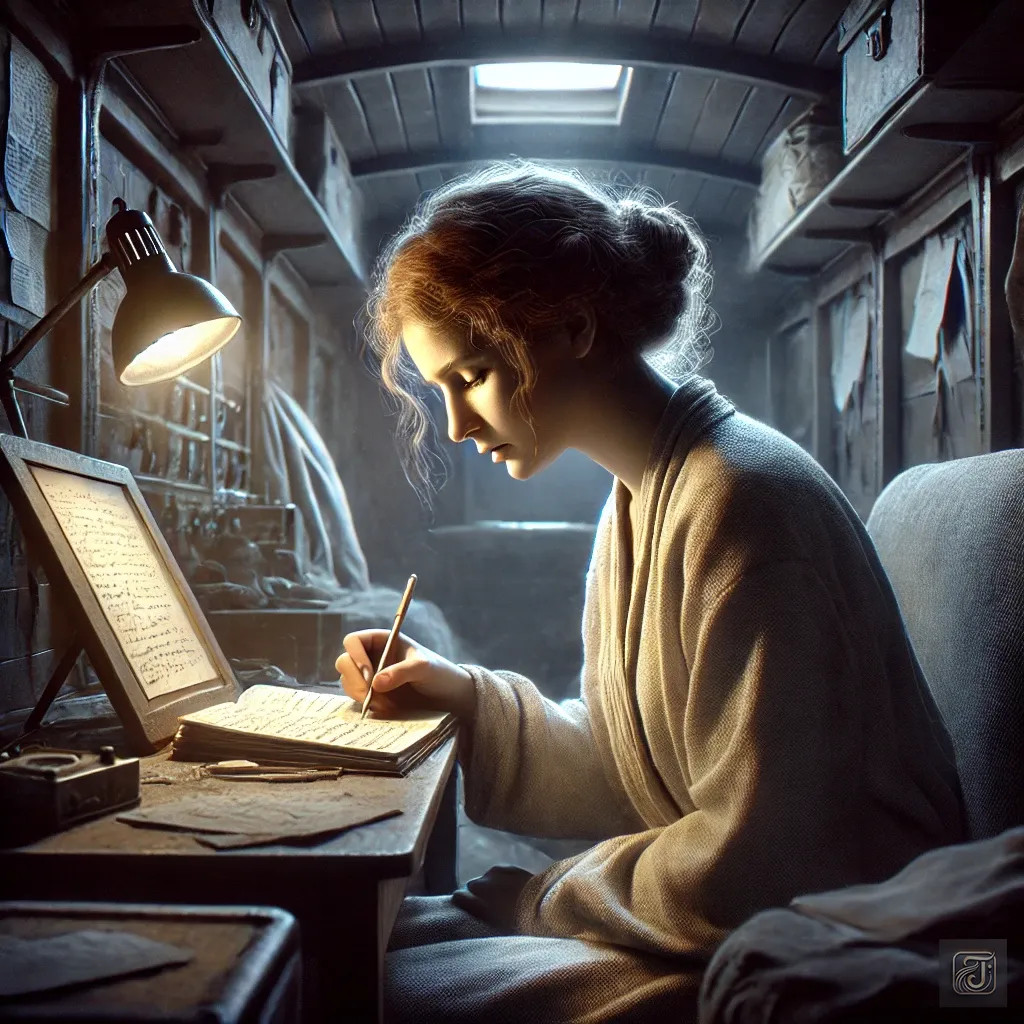
Marie Curie:
“I am here to save lives.”
“Yet, there are so many lives my hands cannot reach.”
“How many lives can I truly save?”
“Even so, if the power of science can ease even a fraction of people’s suffering, it will be worth dedicating my life to it.”
She put down her pen and buried her face in her arms on the desk.
Tears filled her eyes.
The next morning, she continued to wear a smile in front of the wounded soldiers, but behind that smile, her heart was consumed by exhaustion and a sense of helplessness.
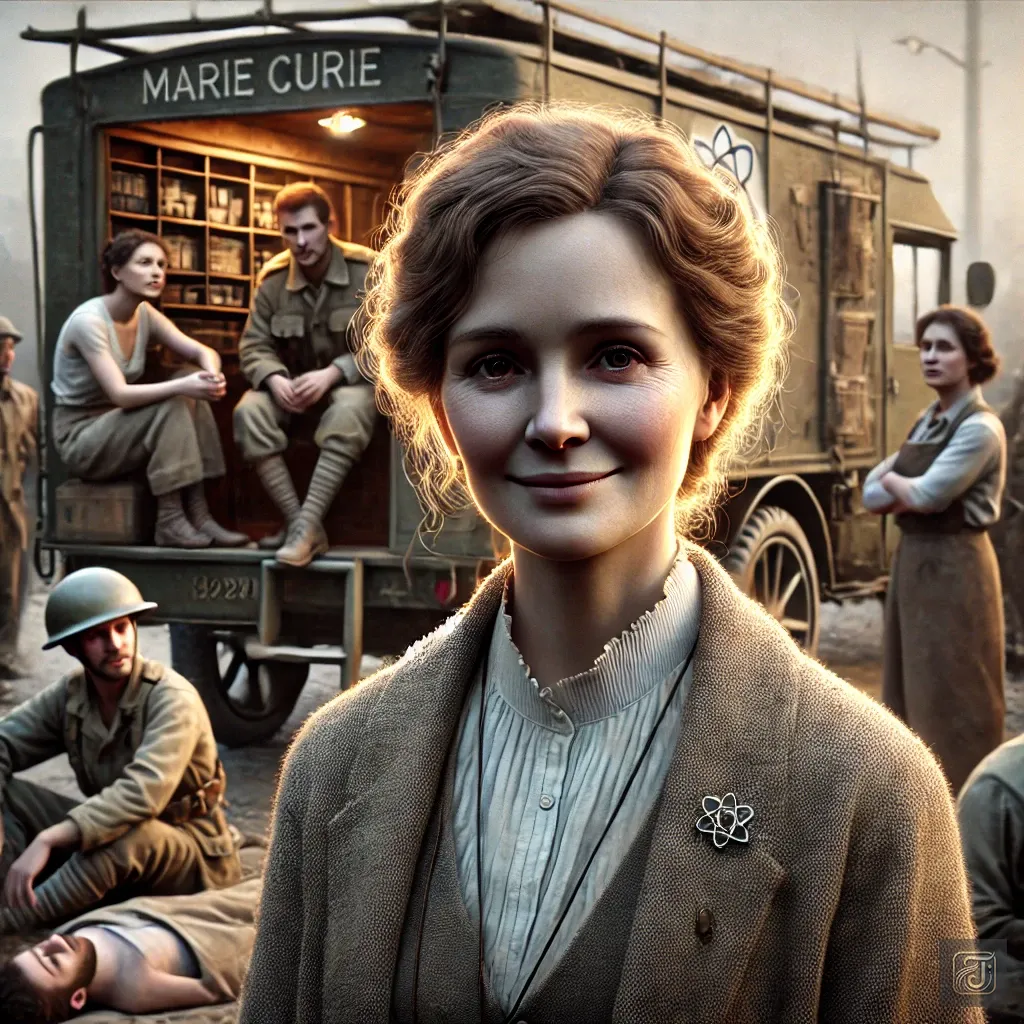
Marie Curie:
“Perhaps there are limits to the power of science.”
“But I want to surpass those limits…”
Her determination was unwavering.
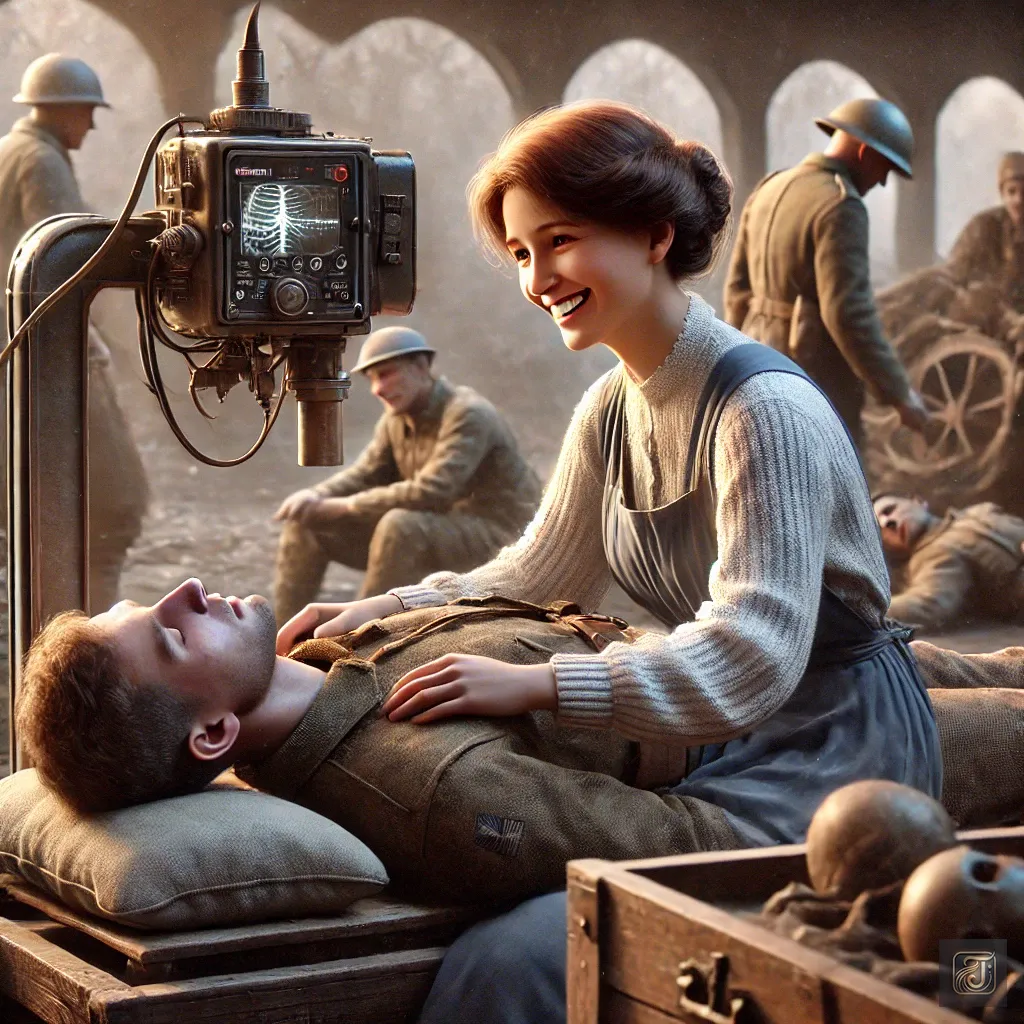
The next day, she continued to approach the wounded soldiers with a smile, operating the X-ray machine.
Though she smiled back at his words, the image of countless victims lying behind him pierced her heart.
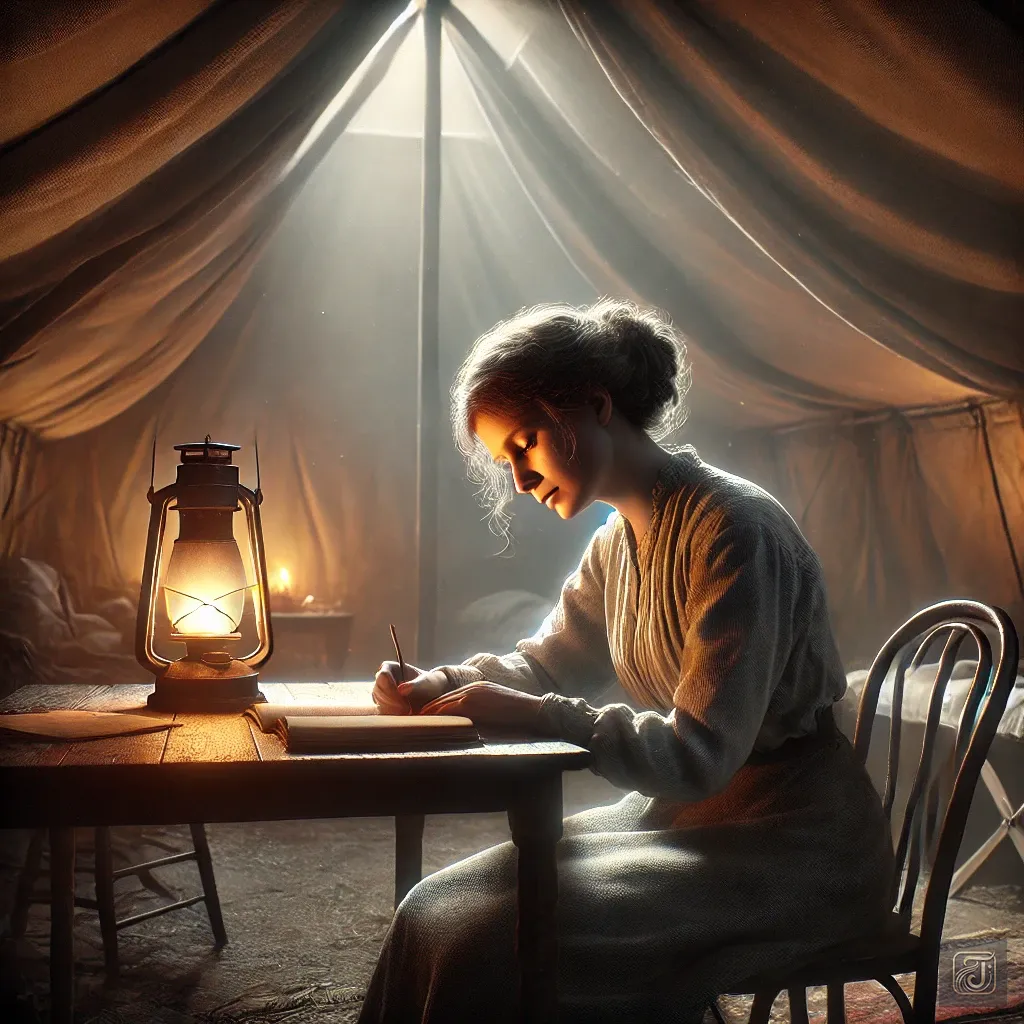
Marie Curie:
“How many lives have I been able to save in this war…”
“But when I think about how many lives have been lost…”
She cried alone in the tent that night.
Yet by the next morning, she put on a smile again and gave her all for the wounded soldiers.
She helped diagnose the injured on the battlefield, saving many lives.
Chapter 10: The Legacy Passed from Mother to Daughter
The path of science that Marie Curie built over the course of her life was passed down to her daughter, Irène Joliot-Curie.
From a young age, Irène spent time in her mother’s laboratory, nurturing her passion for science.
Marie instilled in her a curiosity for learning and the strength of being a woman.
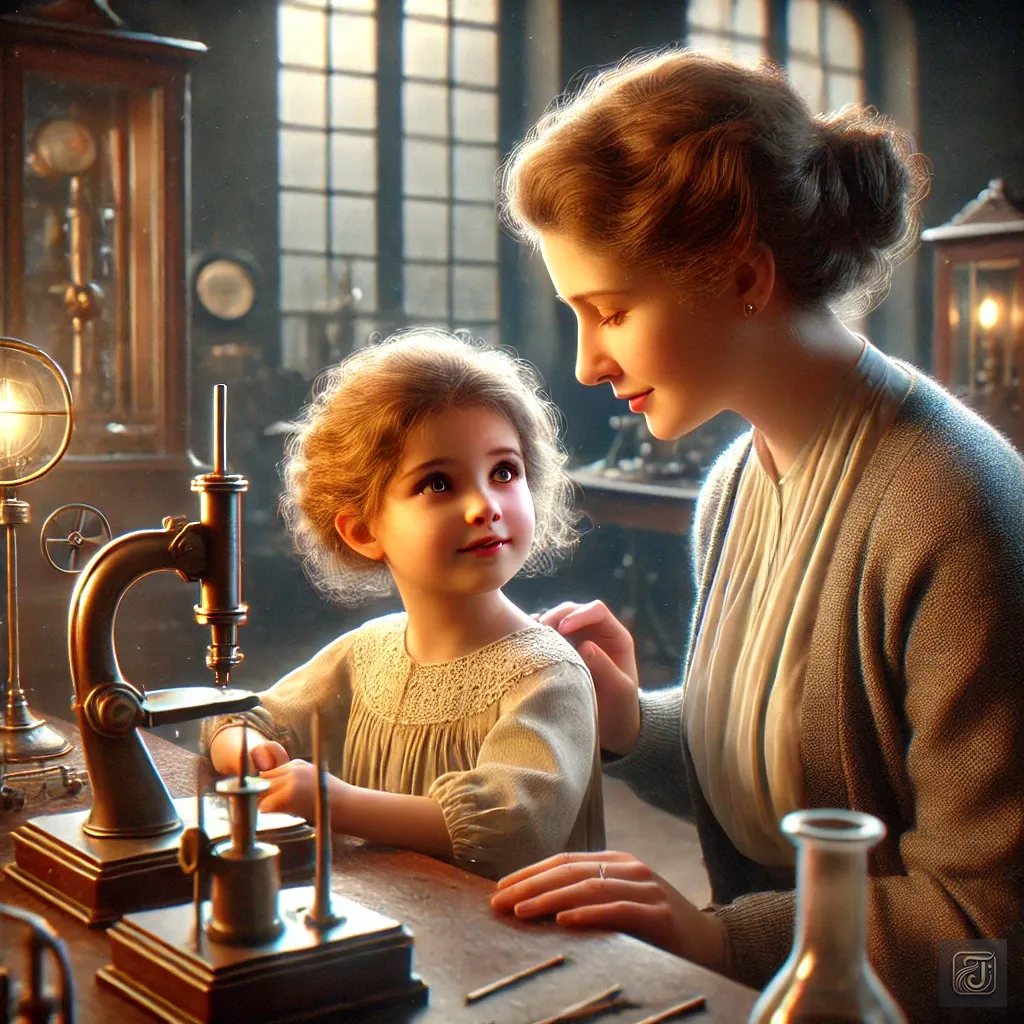
Marie Curie:
“Irène, no matter how difficult the path may be, science is for the benefit of humanity.”
Marie smiled as she spoke to her daughter, who was working late into the night on her experiments.
New Scientific Discoveries
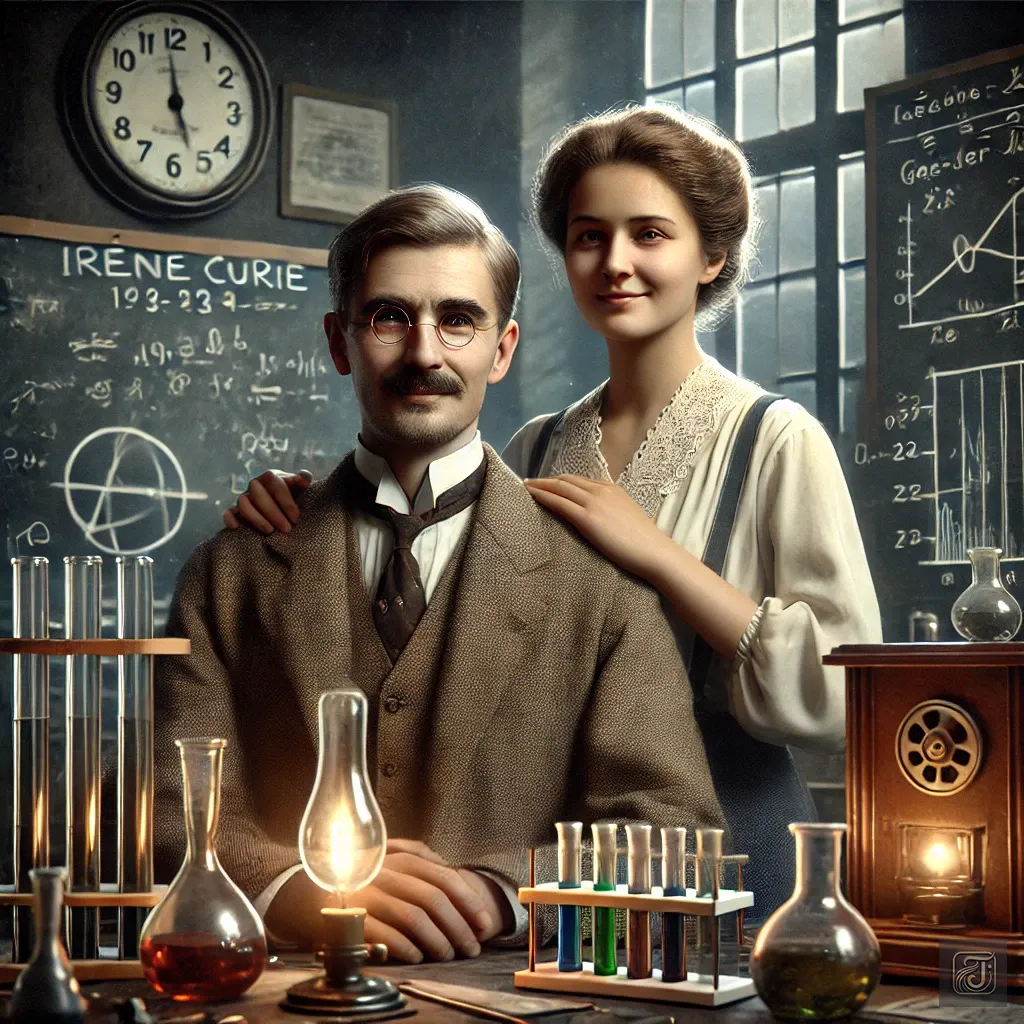
Following in her mother’s footsteps, Irène married chemist Frédéric Joliot, and together they dedicated themselves to scientific research.
In 1934, they achieved a groundbreaking discovery: artificial radioactivity.
Artificial radioactivity is the phenomenon where a stable atomic nucleus is artificially transformed to exhibit radioactivity, and this discovery revolutionized nuclear physics and medicine.
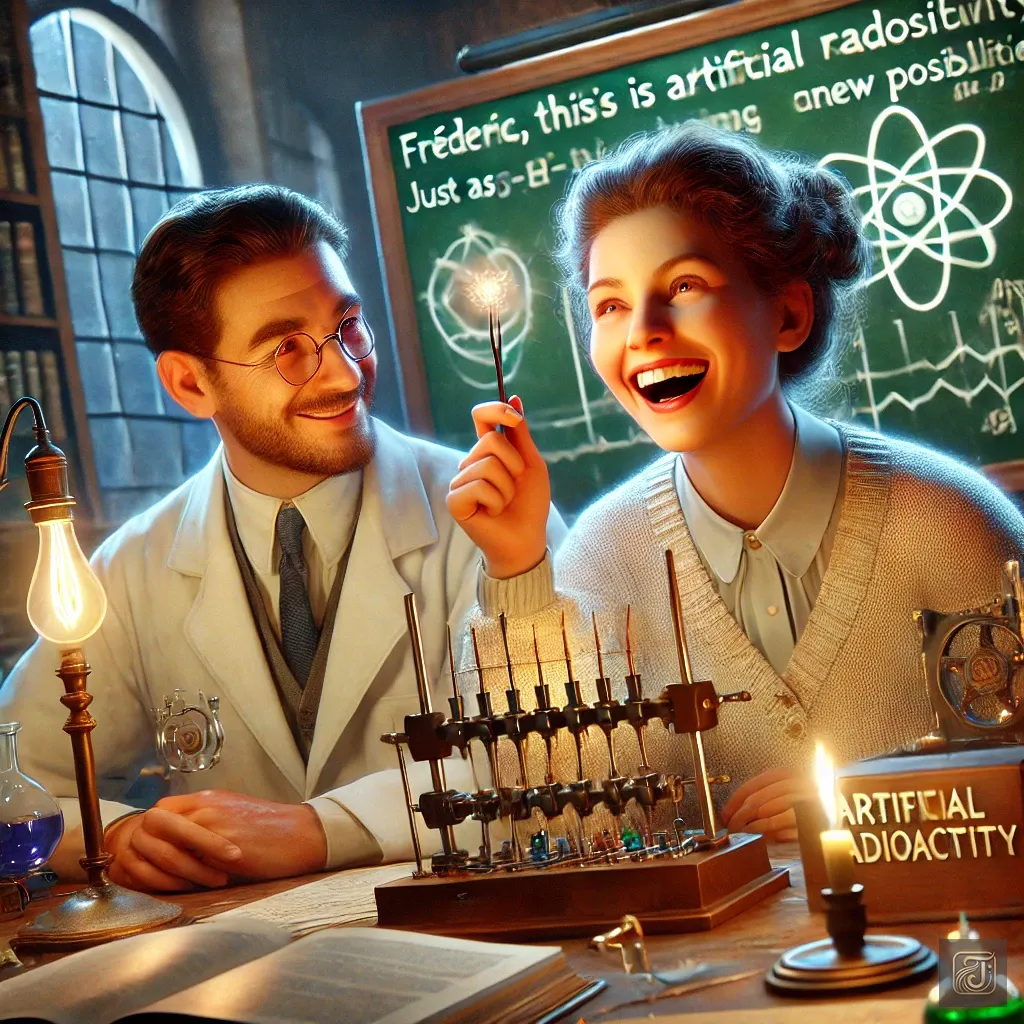
Irène:
“Frédéric, this is artificial radioactivity!”
“Just as my mother said, science brings new possibilities!”
Irène said to her husband with an excited voice.
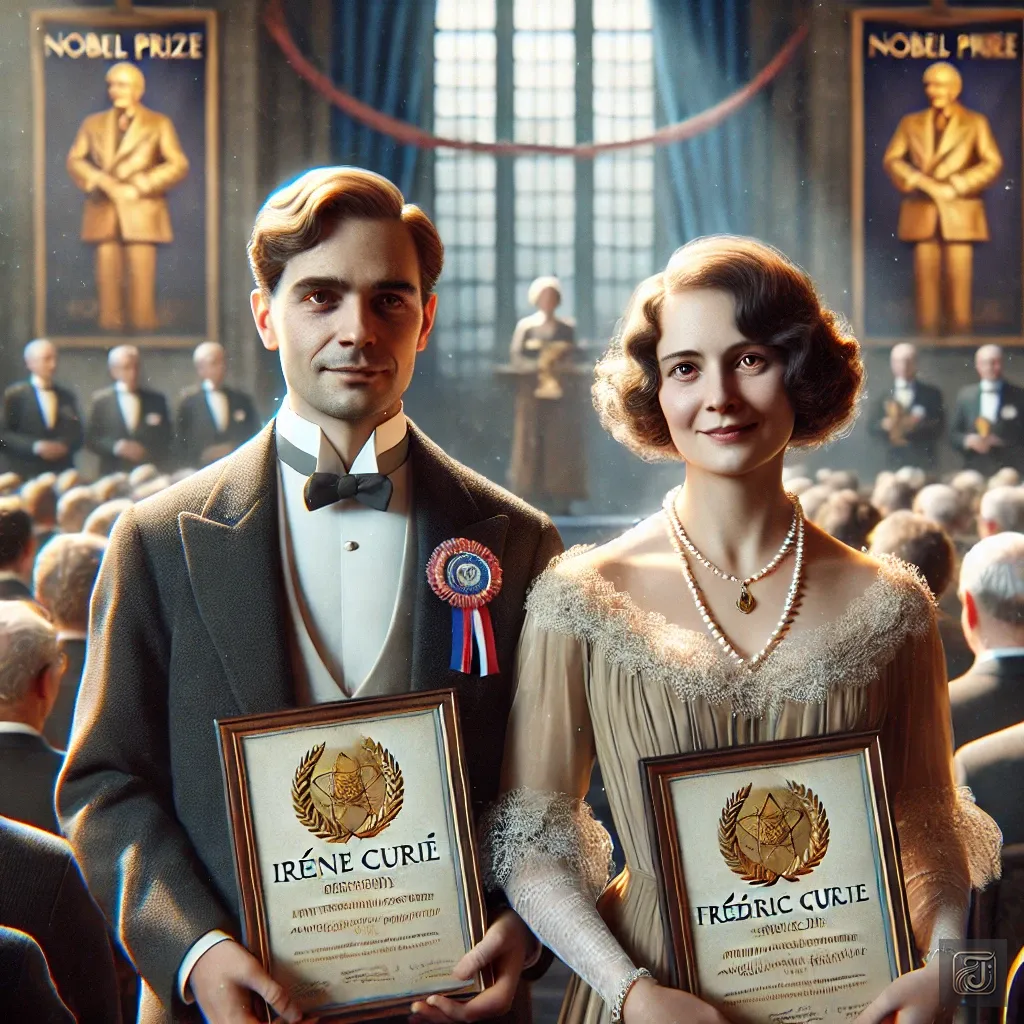
The discovery was recognized by the world in the form of the Nobel Prize in Chemistry in 1935.
Irène and Frédéric became a couple of Nobel laureates, following in the footsteps of Marie and Pierre.
Influence of the Mother
During the award ceremony speech, Irène expressed her gratitude to her mother by saying:
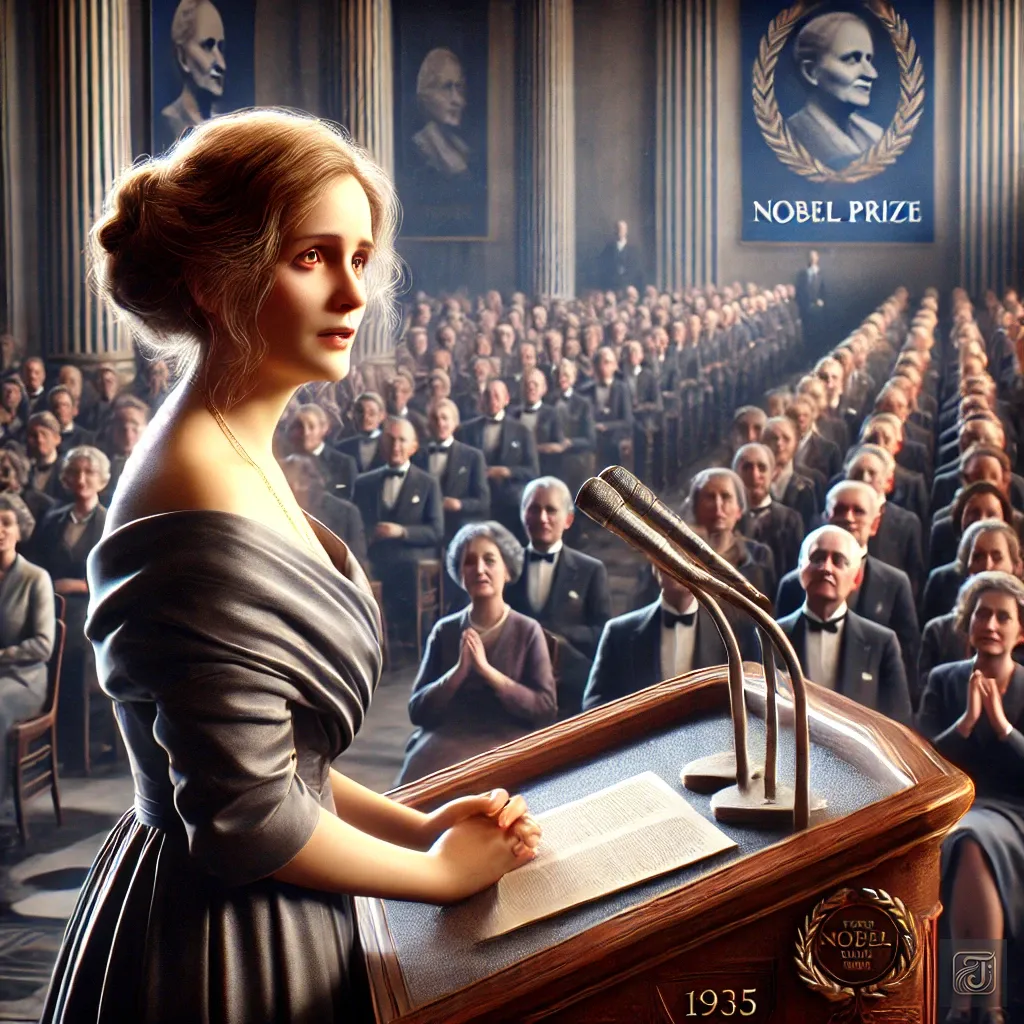
Irène:
“Standing here today is thanks to the unwavering belief in science that my mother showed me.”
“She broke the barriers of being a woman and paved the way for us.”
“Without her, our research would not have existed.”
Irene’s words moved the audience, and some could be seen wiping away tears.
A Family that Illuminates the Path of Science
Irene’s Nobel Prize victory became a symbol of the continued brilliance of the Curie family in the world of science.
The foundation that Marie Curie had built was carried forward and developed by the next generation.
One day, Irene picked up her mother’s research notes and softly whispered.
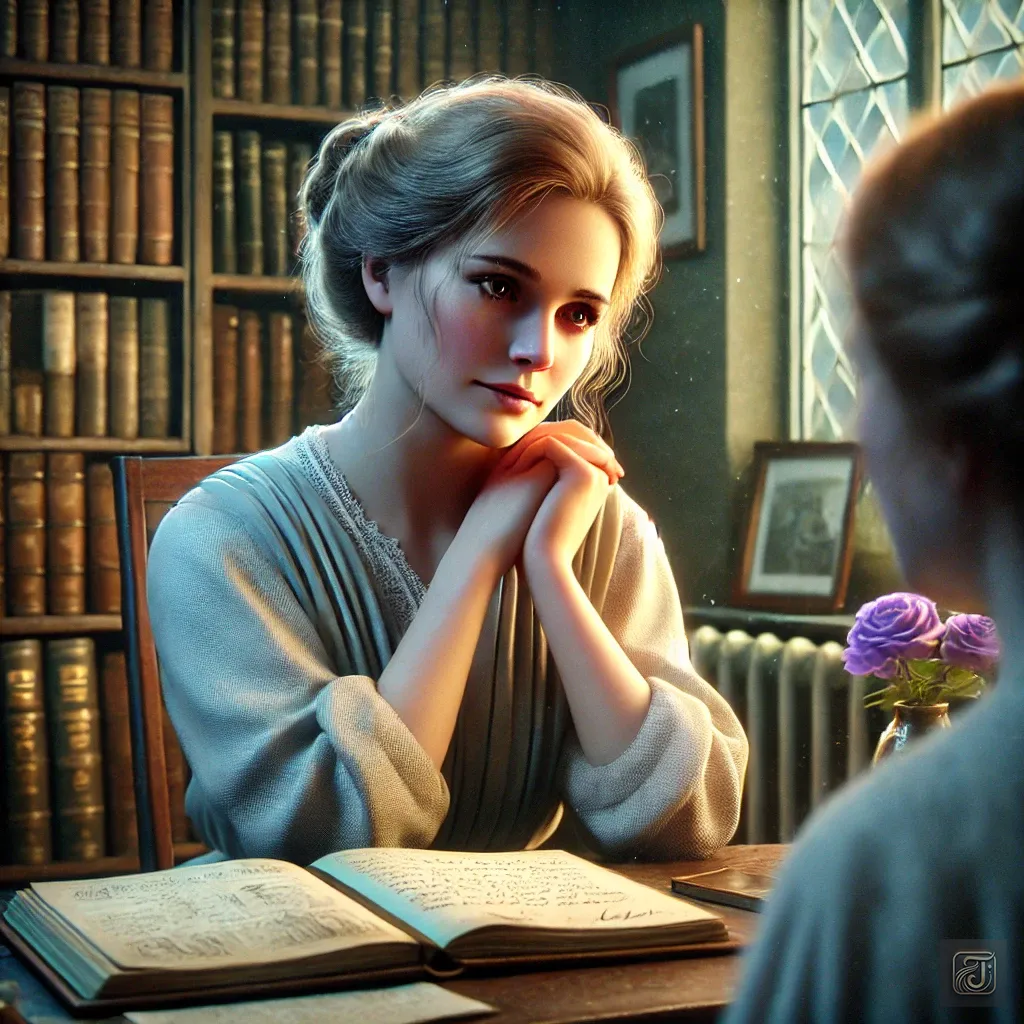
Irène:
“Mother, the lessons you taught me will continue to be passed on to the next generation.”
Irène’s success is an inspiring story of how passion for science is passed from parent to child, and it cemented the enduring legacy of the Curie family.
Chapter 11: The Later Years of Light and Shadow
She dedicated her life to the study of radiation.
In her later years, her body grew weaker from the radiation exposure caused by her research.
Nevertheless, Marie refused to leave the laboratory.
However, her stubbornness was a way to hide the anxiety and loneliness that resided deep within her.
One day, her daughter Irène came to visit her.
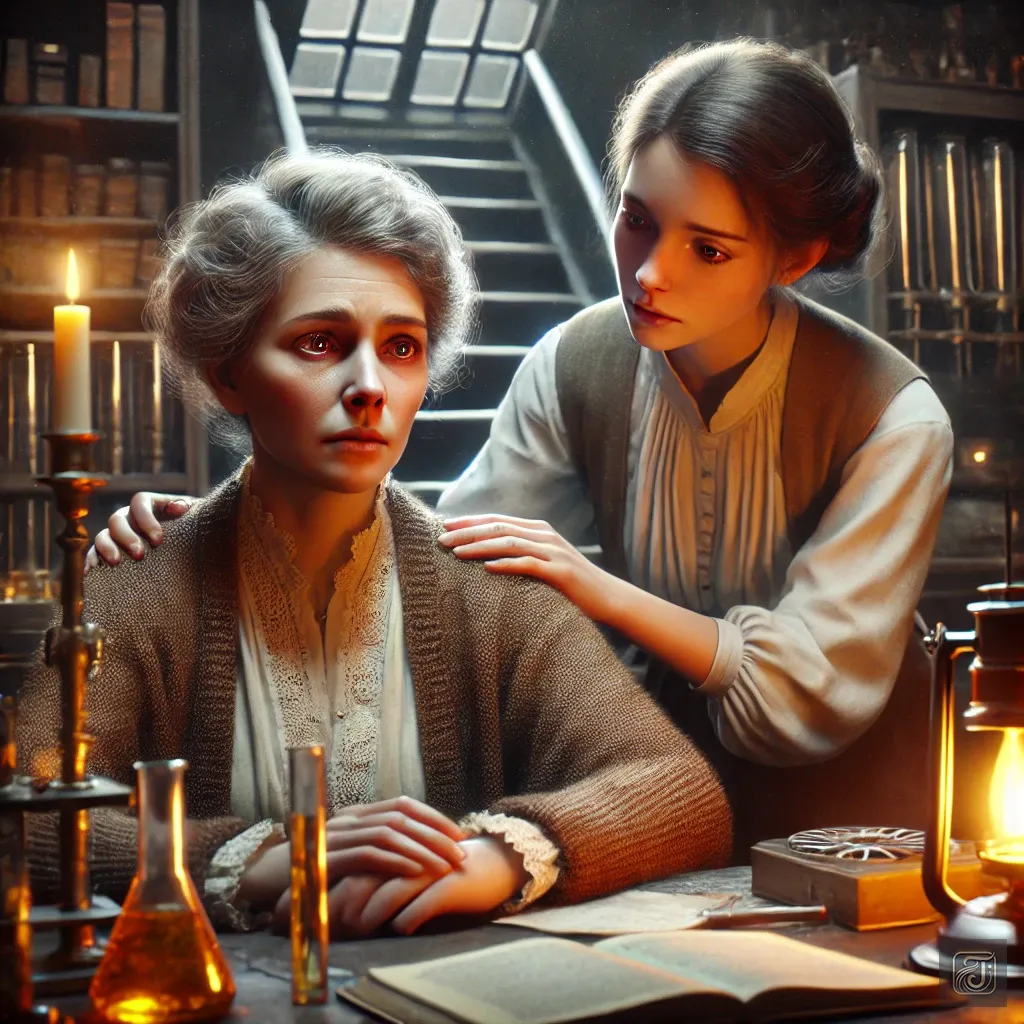
Irène:
“Mother, why don’t you rest for a while?”
Her daughter Irène spoke with concern.
Marie Curie:
“Irène, I have dedicated my life to this research alongside your father.”
” I can’t think of resting.”
“Completing this research, that’s the only thing I can do for him, who has passed.”
In her eyes, there was an unwavering passion for science.
At night, lying in bed, she muttered to herself, almost like a whisper.
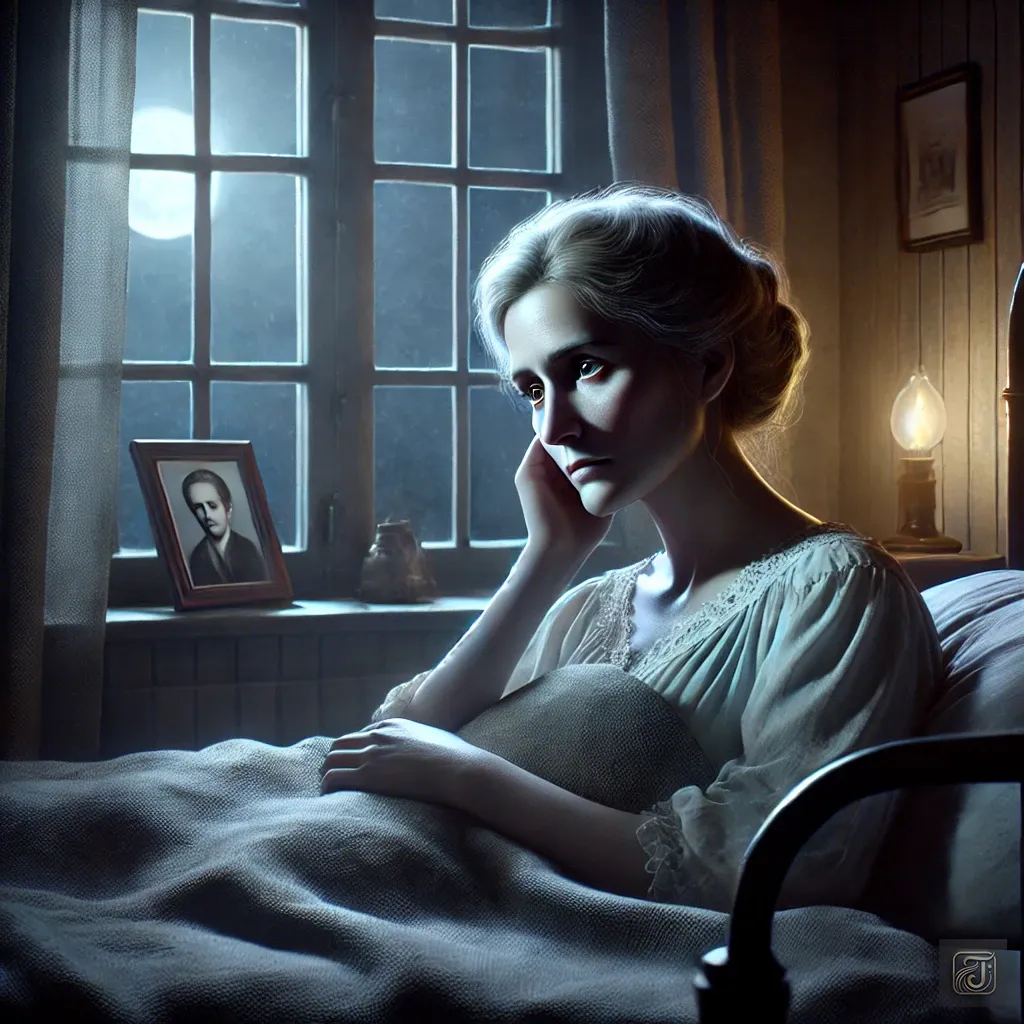
Marie Curie:
“I continued to pursue our dream with Pierre.”
“But now, I am alone.”
“By continuing on this path, I feel as though he is still here with me…”
Those words reflected the loneliness and love deeply etched in her heart.
She continued her research until the very end.
Marie Curie:
“If my research can alleviate people’s suffering, then that is my mission.”
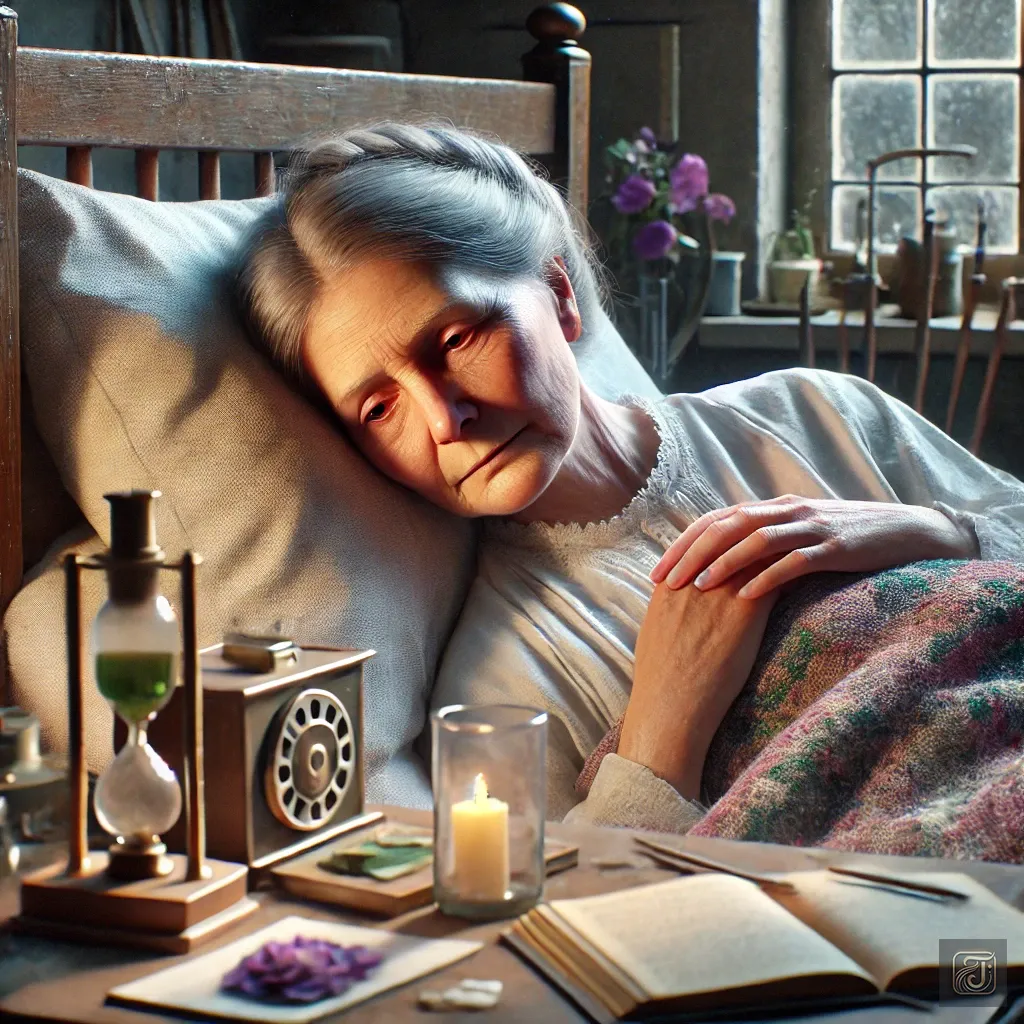
She saved many lives, but at the same time, her health was affected.
The years of exposure to radiation from her research led to the development of leukemia, and she passed away in 1934.
She was 66 years old.
Her remains were transferred to the Panthéon in France in 1995, where she was honored as a national hero for her scientific achievements, becoming the first woman to receive such recognition.
Final Chapter: The Legacy She Left to the Modern World
Marie Curie’s discoveries continue to live on in many areas of modern society, including medicine, energy, and environmental science.
Legacy and Impact
The discoveries of the Curies revolutionized modern medicine and physics, laying the foundation for radiation therapy and nuclear energy.
The Foundation of Nuclear Technology

Nuclear Power Generation
Research on radiation and atomic properties led to the discovery and utilization of nuclear energy, contributing to the development of nuclear power generation.
As a clean energy source, nuclear power plays a role in reducing dependence on fossil fuels.
The applications of radioactive isotopes

Radioactive isotopes are utilized in a wide range of fields, including medicine, agriculture, industry, and environmental science, by taking advantage of their properties.
For example, they are used in food preservation, soil analysis, and non-destructive testing techniques.
The development of science and technology
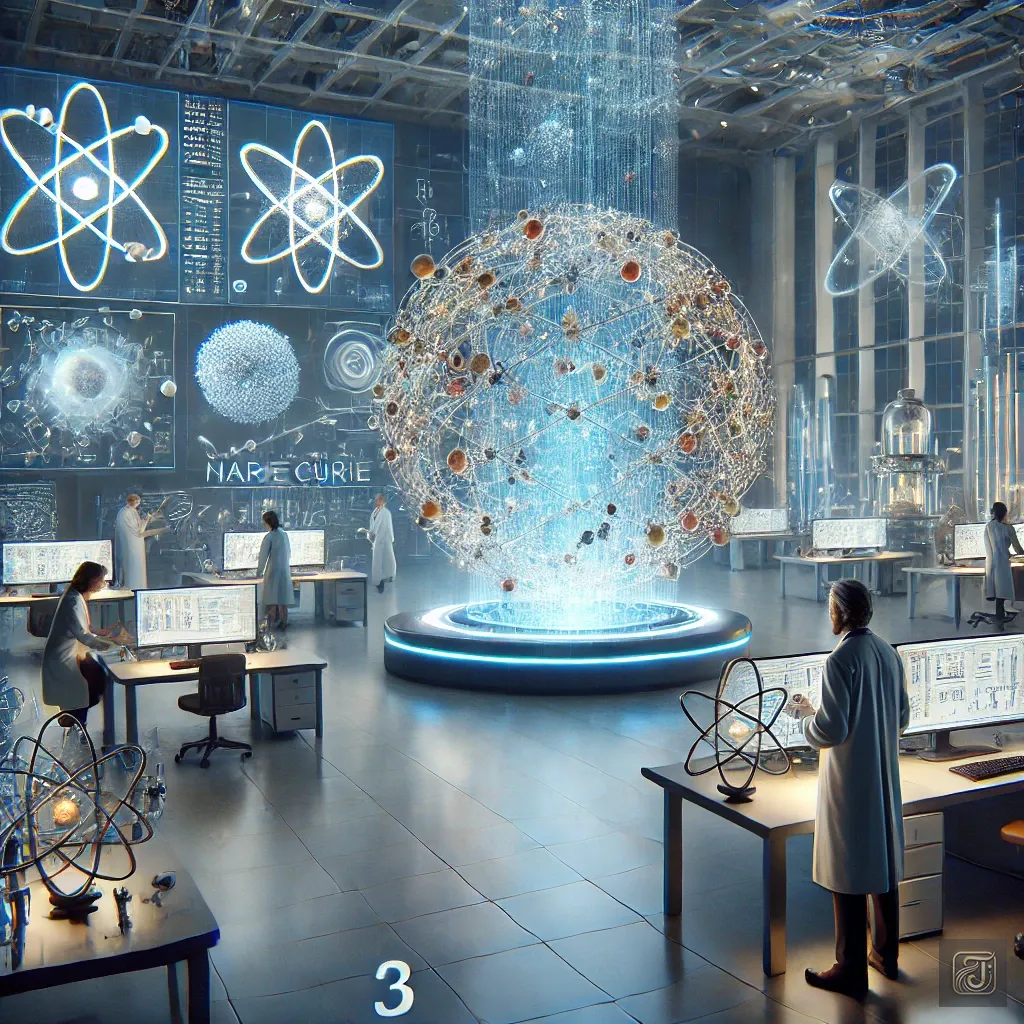
Advancements in nuclear physics and quantum physics
Her discoveries later formed the foundation for research in nuclear fission and fusion.
Modern nuclear physics and particle physics owe much to her work.
Radiation measurement technologies
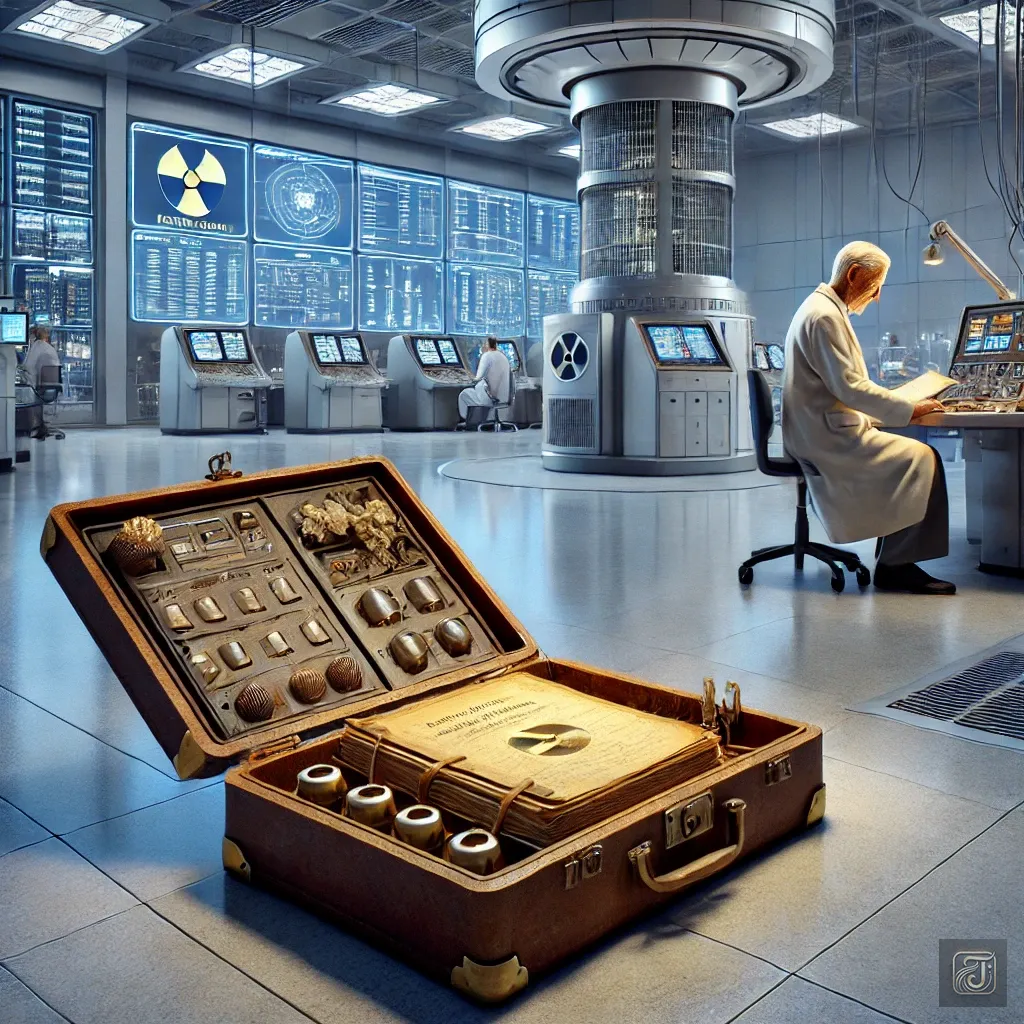
The radiation measurement technologies she advanced are still used today for environmental monitoring and detecting radioactive contamination.
Her research notes and belongings continue to possess high levels of radiation and are stored in special conditions.
Marie Curie’s life is remembered as a symbol of passion for science and her contribution to humanity.
Educational and Social Impact
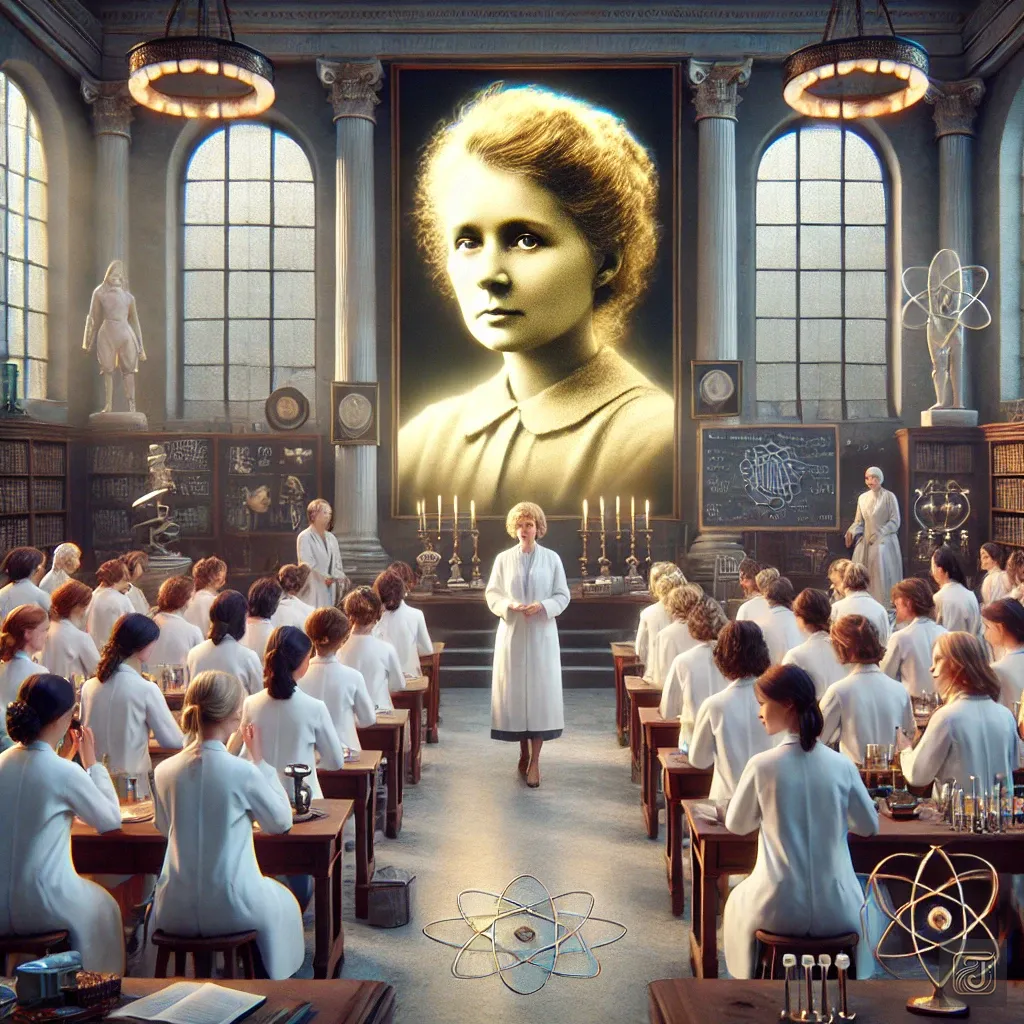
Opening the Path for Female Scientists
Her achievement as the first woman to win the Nobel Prize and her contribution to improving the status of women in the field of science continue to serve as a role model for many female scientists today.
Promoting scientific education

Her research on radiation has become an important part of science education taught in schools and universities.
The foundation of safety standards and regulations
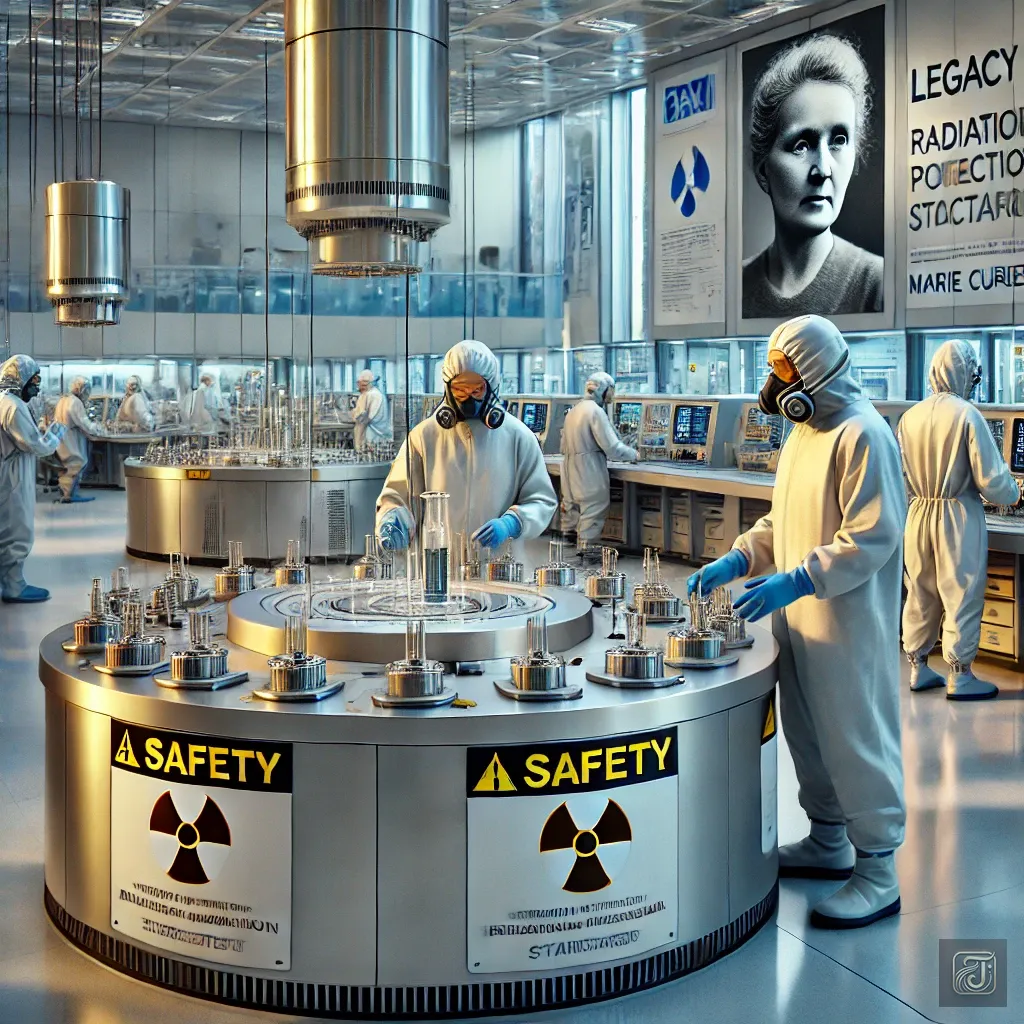
Establishment of radiation protection standards
Marie Curie’s research led to the recognition of the dangers of radioactivity and the necessity for protective measures and safety standards.
This, in turn, contributed to the development of modern radiation management techniques.
Epilogue
Marie’s life was filled with hardships, but she overcame them and made significant contributions to science.
The words she left behind continue to be passed down through generations.
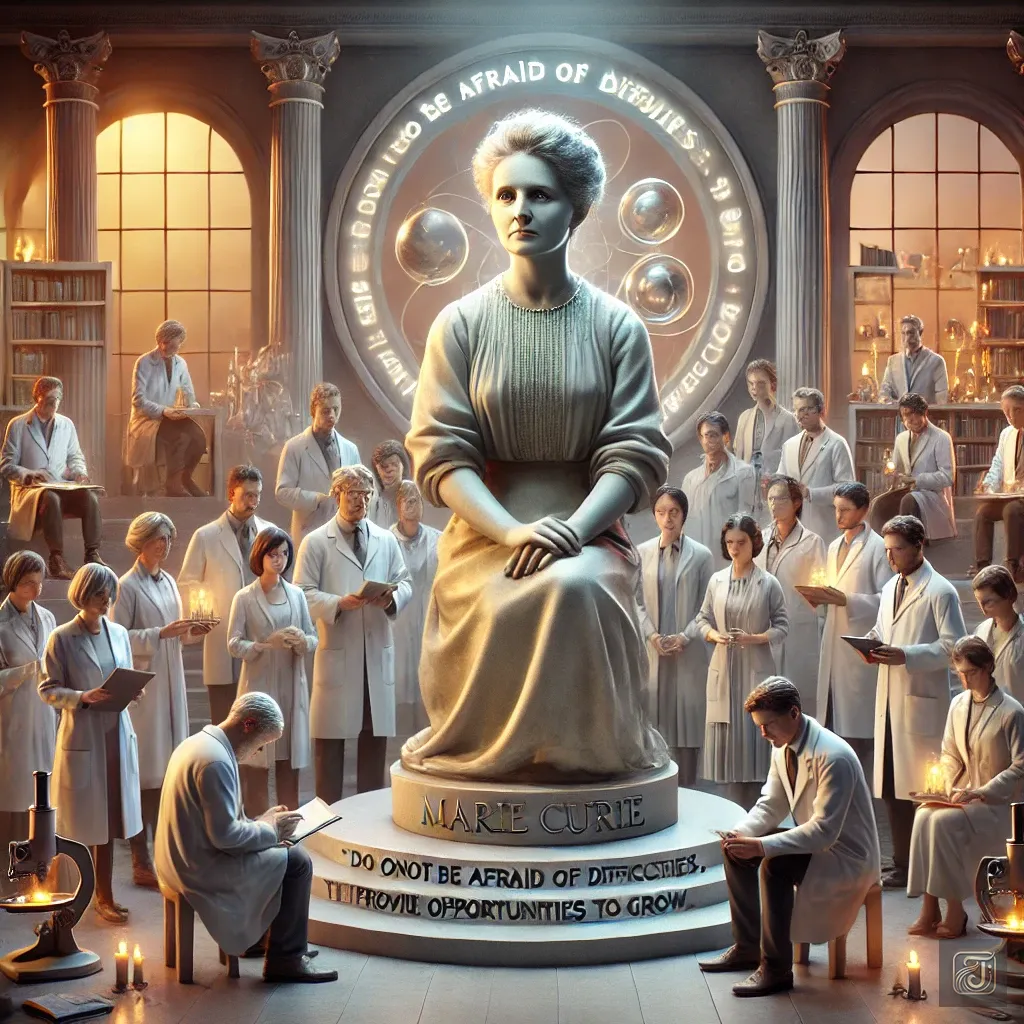
“Do not fear difficulties.”
“They are opportunities for us to grow.”
Marie Curie’s story teaches us not only about her life as a scientist, but also about how to live as a strong woman.
The discovery of radioactivity and the related technologies that she pioneered have contributed to many fields of modern society, including medicine, energy, environmental science, and industrial technology.
Furthermore, her passion for science and her achievements continue to offer hope and inspiration for future generations.
Her research holds value as an inspiration for future technological innovations, and its significance remains strong even today.
Her life is a testament to the potential of humanity to overcome adversity, and it continues to serve as a source of hope and inspiration for future scientists.
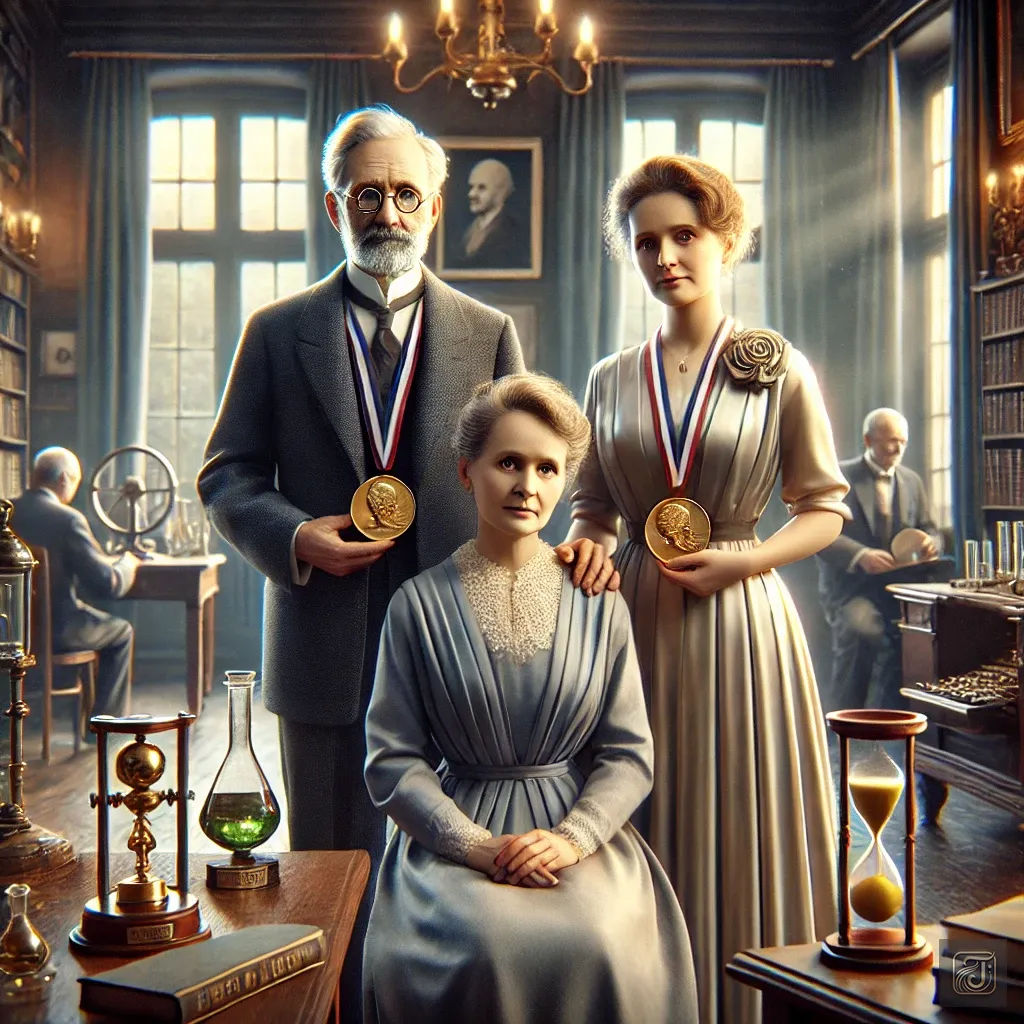
The Curie family holds the unique distinction of being the only family in history to produce three Nobel Prize laureates.
Their achievements go beyond mere scientific discoveries; through science, they have saved lives and become a beacon of hope, paving the way for the future.
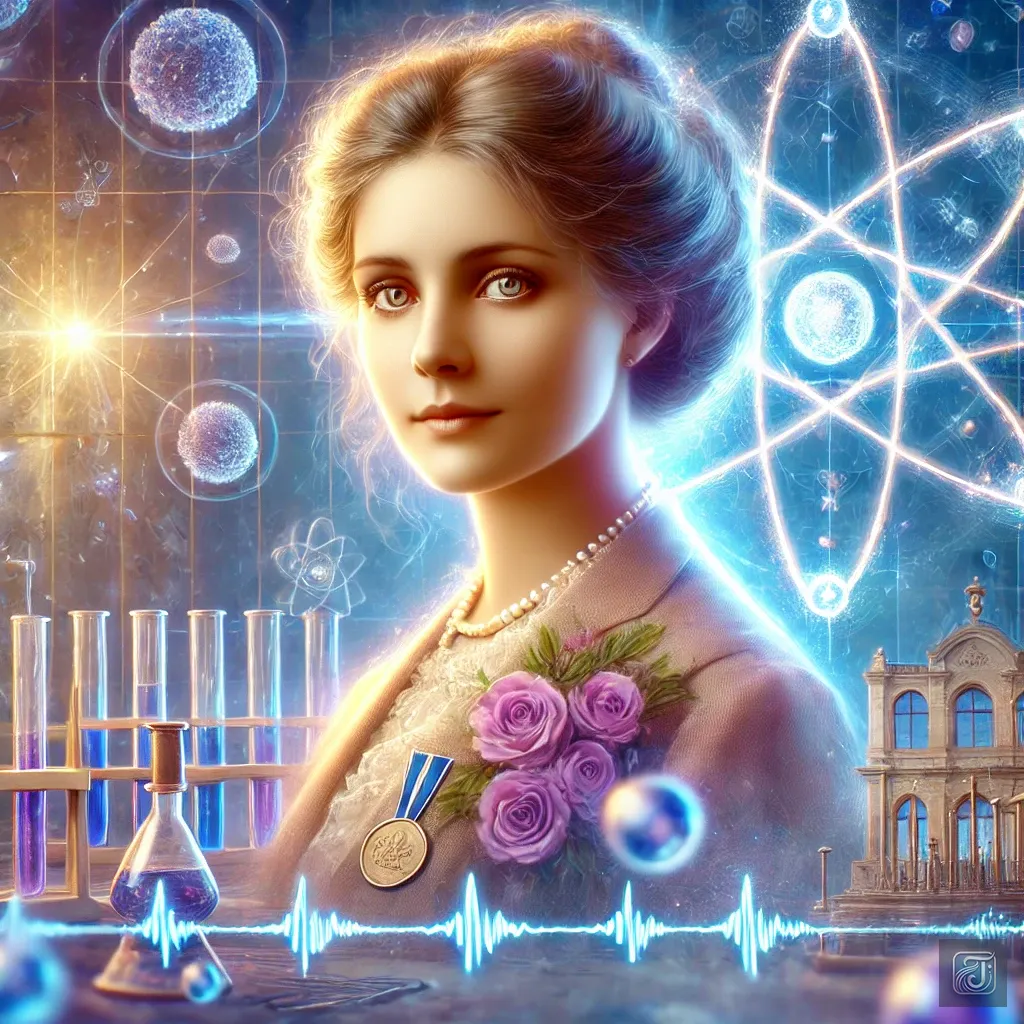
Her achievements, as the “Mother of Radiation,” will continue to shine brightly for generations to come.
Author’s Afterword
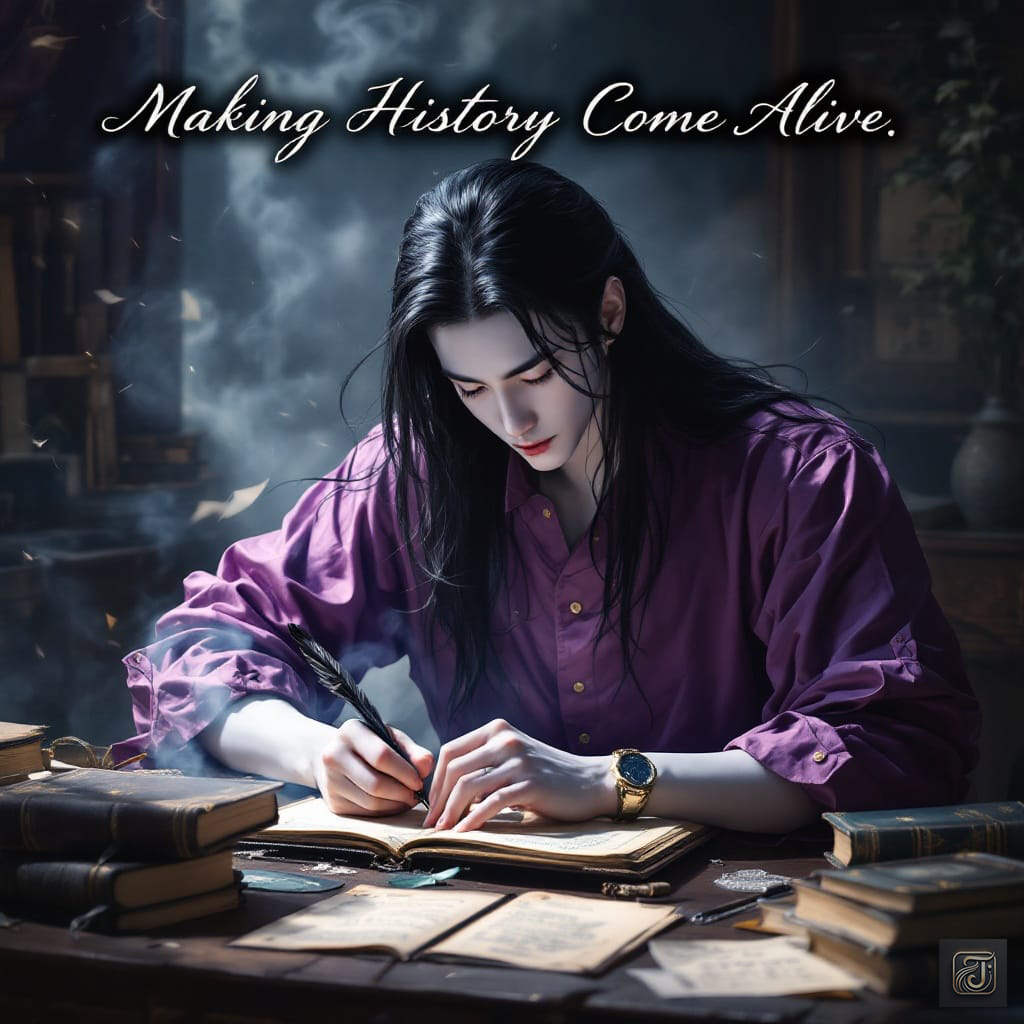
Thank you very much for reading this story to the end.
Through this narrative of Marie Curie—a woman who pursued her convictions and passion, and who carved out a path for the future of science—I hope I was able to convey even a small part of her spirit to you, the reader.
As I wrote this story, I was once again deeply moved by her life.
She faced countless barriers: those of her era, of gender, of societal prejudice, and even the limits of science itself.
And yet, step by step, she forged her way forward with unwavering determination.
“There is no gender in science.”
“Do not fear difficulties; they are opportunities for us to grow.”
The weight of her words still resonates today and offers profound guidance to us all.
Somewhere in the world right now, there may be someone striving toward their dream while confronting obstacles—and I hope that Marie Curie’s life can shine as a small beacon of courage for them.
In writing this work, I wanted not only to highlight her achievements, but also to portray her human struggles—her loneliness, her grief, and her bonds with family and friends. Behind every scientific breakthrough lies the story of a human being who lived, struggled, and persevered.
We must not forget that.
Lastly, may the path that Marie Curie and many other scientists have walked continue to inspire the young scientists of tomorrow, and everyone who dares to dream.
— The Author Fuji
If you found this article helpful or enjoyable, please consider supporting me with a cup of coffee! 👈Click☕🙏
I’m a passionate blogger who loves diving deep into human history and sharing captivating stories about remarkable figures and events from the past.
My blog combines engaging storytelling with beautiful illustrations, making history accessible and enjoyable for everyone.
Currently, I write my blog while managing a full-time job. Balancing both limits the time I can dedicate to research, writing, and illustrations.
With your support on Ko-fi, I can reduce the time spent on my main job and focus more on blogging, allowing me to increase the frequency of updates and bring you even more captivating stories.
Whether it’s a one-time coffee or a regular contribution, every bit goes directly into making history engaging and fun for my readers.
Thank you for joining me on this journey through time.
Let’s uncover the past together!
If you found this article insightful, please consider supporting me with a cup of coffee! 👈Click☕🙏
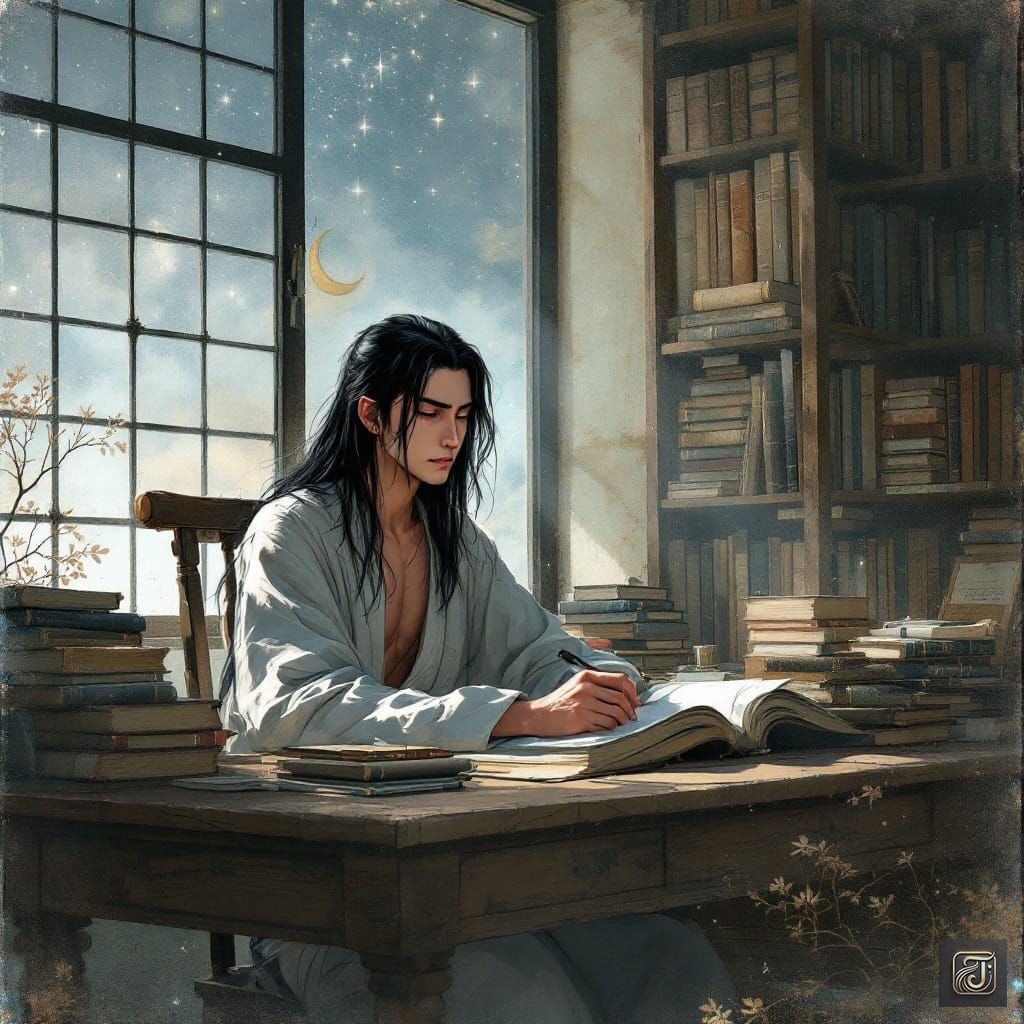
Author: Fuji
Human history is truly complex, isn’t it?
There are countless websites introducing historical figures and events, but many of them are just plain explanations—not exactly exciting to read.
On the other hand, reading books takes a lot of time and effort.
That’s where I come in.
Through “stories that are more engaging than explanations and shorter than books,”
I aim to bring the world’s history and humanity’s records to you in a more accessible and interesting way.
If my stories inspire you to love history a little more, I’d be absolutely thrilled!



Comment